THE GHURID SULTANATE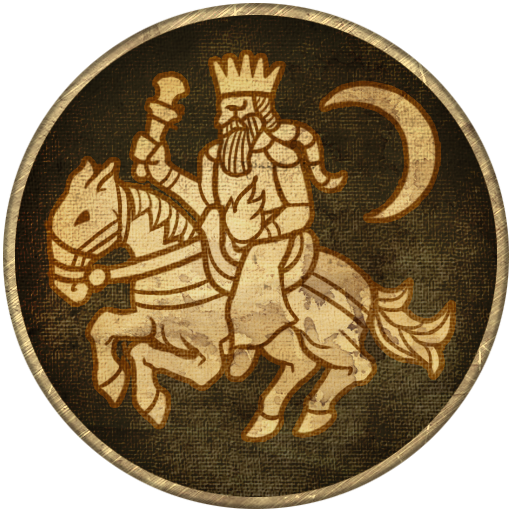
The Ghurid Sultanate is a fairly new dynasty, only gaining significant power in the second half of the 12th century. The Ghaznavid defeat at the hands of the Seljuks granted the Shansabanid noble family of Ghur the opportunity to cast off the Turkish yoke and claim the prestigious seat of Ghaznavid power, Ghazna. The meteoric rise of the Ghurids to regional dominance is largely the work of the brothers Ghiyath ad-Din Muhammad and Mu'izz ad-Din Muhammad, whose peaceful cooperation allowed for expansion in Khorasan at the expense of the Seljuks and to the East at the expense of the Ghaznavids of Lahore and the various Hindu dynasties. The Ghurids can claim to have done great work in the name of Allah, for the complete rout of the Indian confederation that met them at Tara'in in 1192 broke open the door for the armies of Islam to conquer Northern India and to sow the seeds of Muslim dominance in South Asia.
The glorious past has quickly faded now in 1212 and Ghurid power is on the brink of complete implosion. The assassination of the last brother, Mu'izz ad-Din, in 1206 has caused the Ghurid domain to turn upon itself due to the complete lack of strong heir. Muhammad not having any sons, but supposedly gifting his true 'sons', his royal slave-soldiers, has led to his generals cutting their slice of the realm while contending with the Shansabanid family members, a situation not unlike the succession crisis of Alexander the Great. One of his senior ghulaman, Taj ad-Din Yildiz, has made his claim in the West, first championing the cause of Ghiyath ad-Din Mahmud, a nephew of the former Sultan, but quickly took advantage of the latter's lack of military power by taking the true capital of the Ghurid kingdom, Ghazna. Since the death of Mahmud in either 1210 or 1211, he has installed the son of the Sultan, a toddler incapable of ruling, on the throne, centralizing Western Ghurid power to his court. While some petty princes of the Shansabanid hold some power in various parts of Afghanistan, the true threats to Taj ad-Din's power come from the North-West, with the rising Khwarazmshah quickly taking advantage of the infighting by conquering the territory under the control of Ghiyath ad-Din Mahmud, and to his East, with the successor of a former ghulam commander of Mu'izz ad-Din, Iltumish, controlling the majority of the Indian domains from Delhi.
The Ghurid realm would last only a few years after the death of Mu'izz ad-Din, with the Khwarazmshah Muhammad II defeating the last remains of Ghurid power in Afghanistan, pushing Taj ad-Din Yildiz into a final showdown with Iltumish, where he was defeated and captured, followed by his execution. Ghurid influence would last, in a way, for another three centuries, when a descendant of Timur would defeat the last Turkish sultan of Delhi in 1526.
The Ghurids were originally known for their rugged infantry from the mountain region of Ghur, but Mu'izz ad-Din would purchase large quantities of Ghulaman, loyal only to him, which would become the main strength of his armies. Combined with the various tribal groups in the Afghanistan region, the Ghurids largely relied on large quantities of cavalry, both light horse archers and heavy shock cavalry.
Early Era
General units :
Taj ad-Din Yildiz
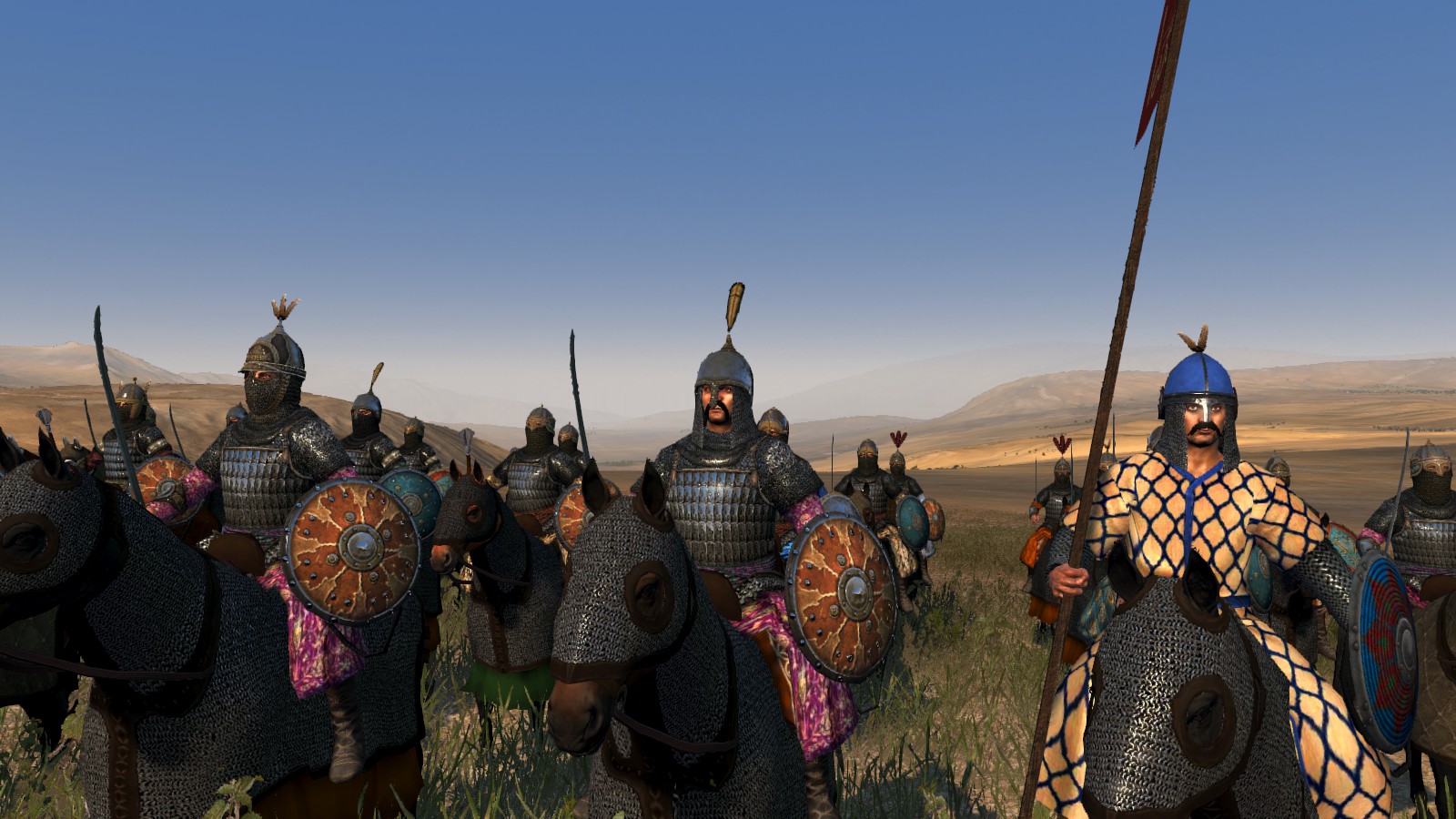
Ghulam Jandars
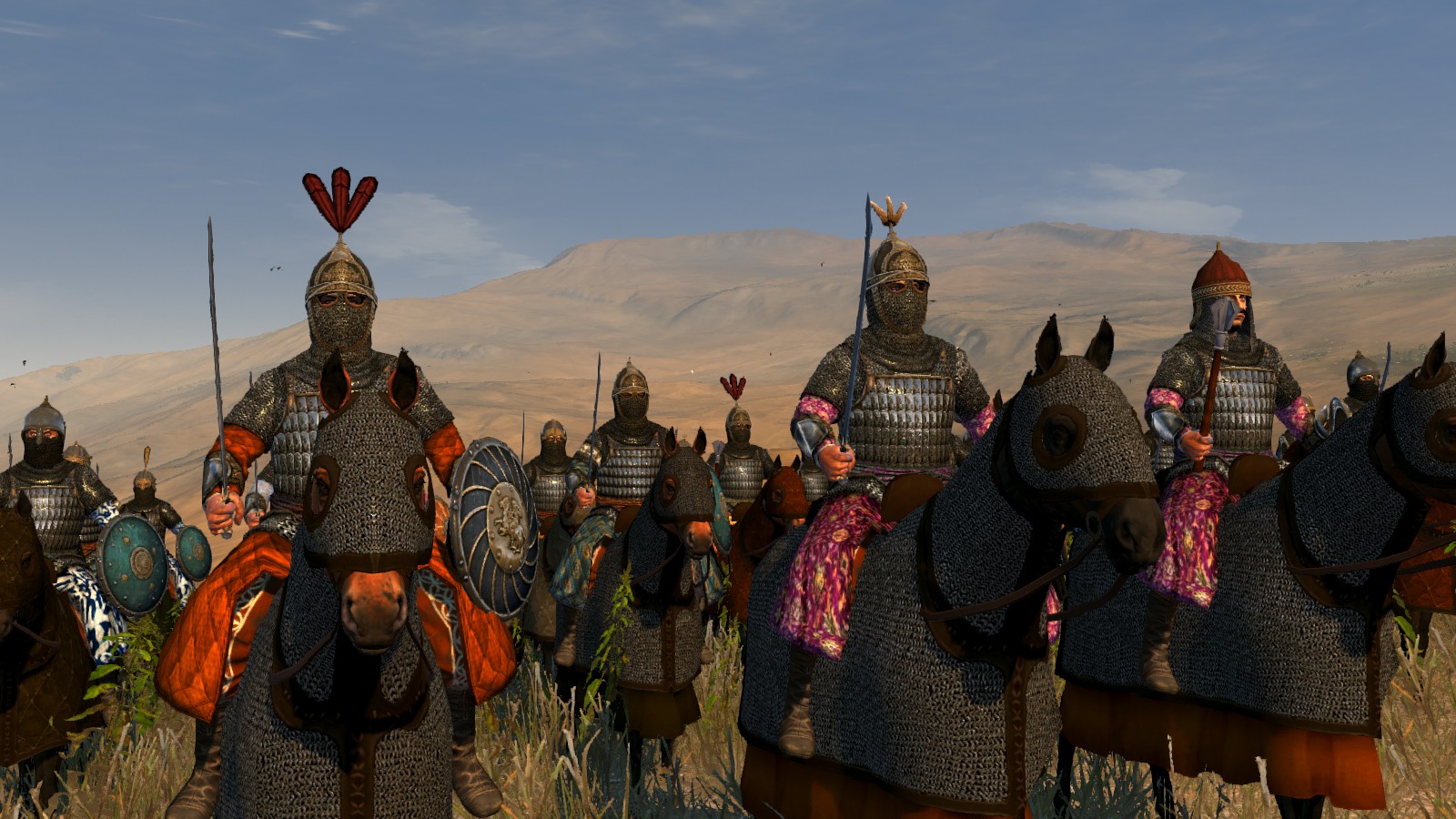
Jandars ('bodyguards') were made up of the most loyal and trustworthy soldiers of the Sultan. For the Ghurids, few could compare to the Ghulaman-i-saltan, in either equipment, skill or dedication to the throne.
Skirmisher Infantry Units :
Zupin Javelinmen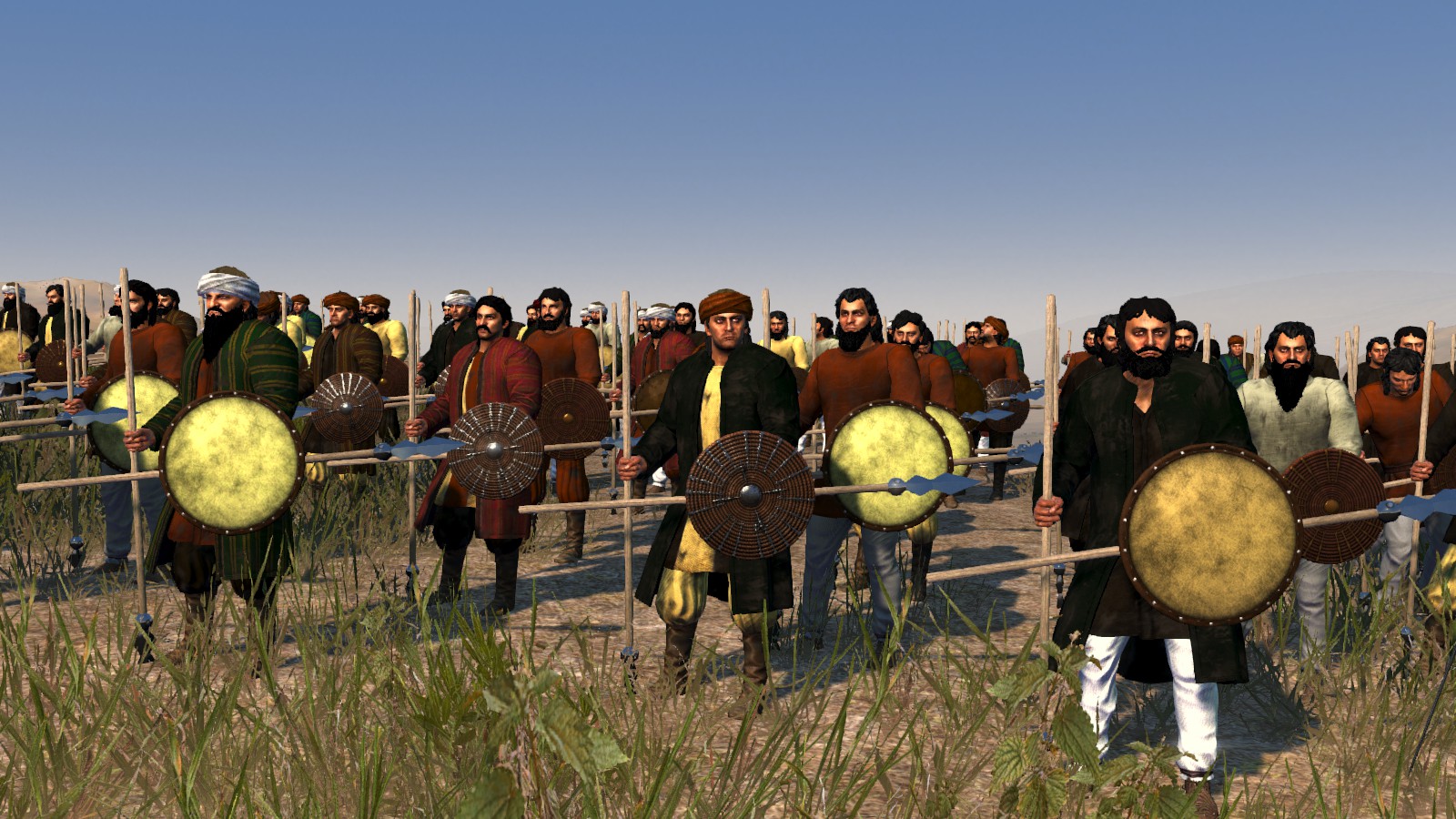
An interesting side-effect of the Ghaznavid conquest of Iran was the spread of military fashion. The zupin, a shortspear that also functioned as a javelin, was the traditional weapon of the people of Daylam, a mountainous region of North-Western Iran. The Daylami would loan out their services, finding work across the Muslim world, and the zupin would be used from Egypt to India. Zupin javelinmen are noted as being a part of the early military of the Ghurids, generally placed on the left wing.
Afghan Archers
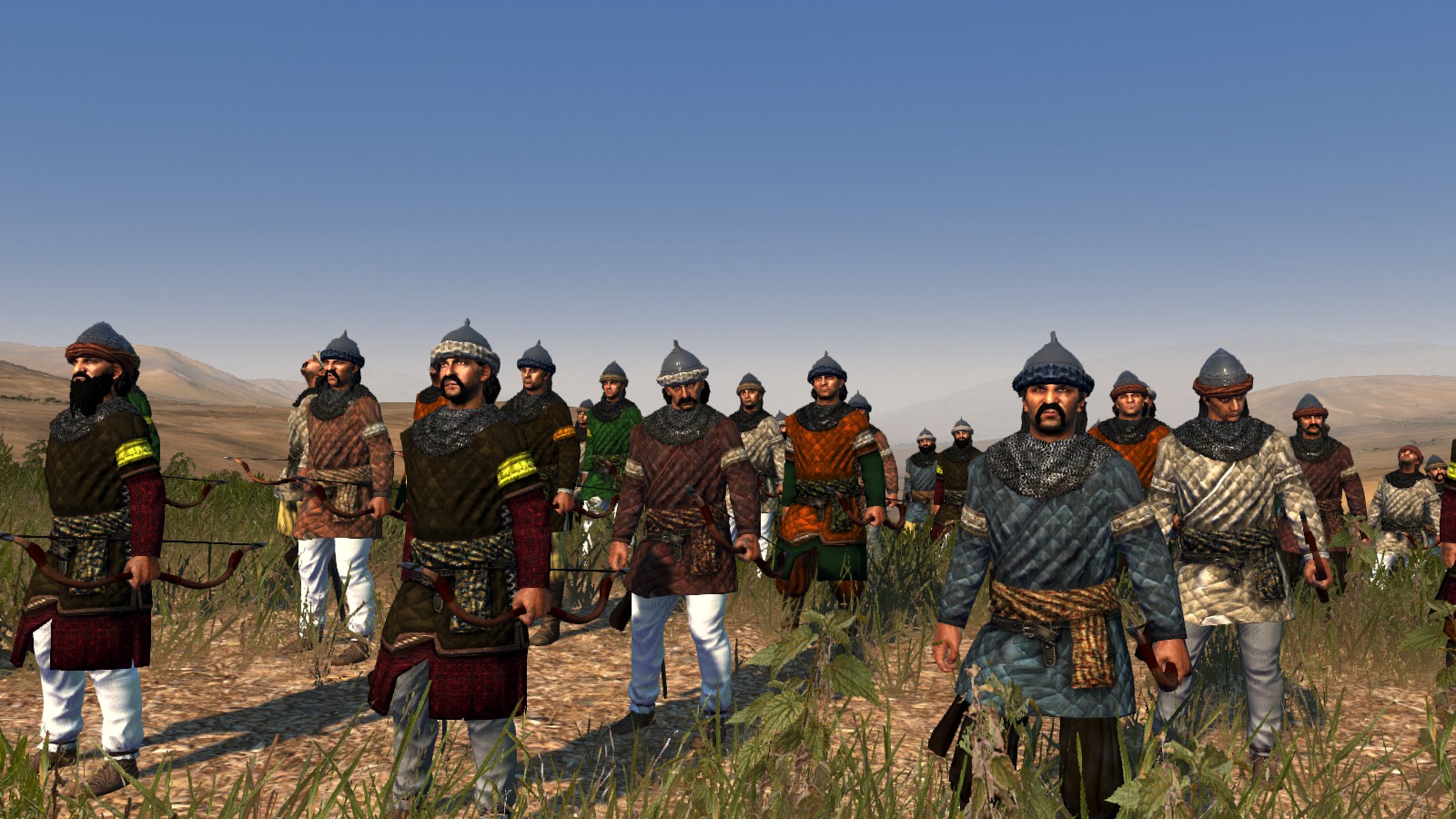
Archers formed the largest part of Muslim missile troops in the medieval period. The Ghurid archers were tactically placed behind both the first row of heavy spearmen and the reserve of heavy infantry.
Nawak Infantry
When discussing reasons for the success of Muslims in India during the Ghurid period, one of the main military technology development that the Muslims had over the Indian kingdoms was the crossbow, 'nawak'. The piercing bolts gave the Muslims the ability to effectively pierce the heavy armour of the Indians while the latter had no such answer.
Naphta Throwers
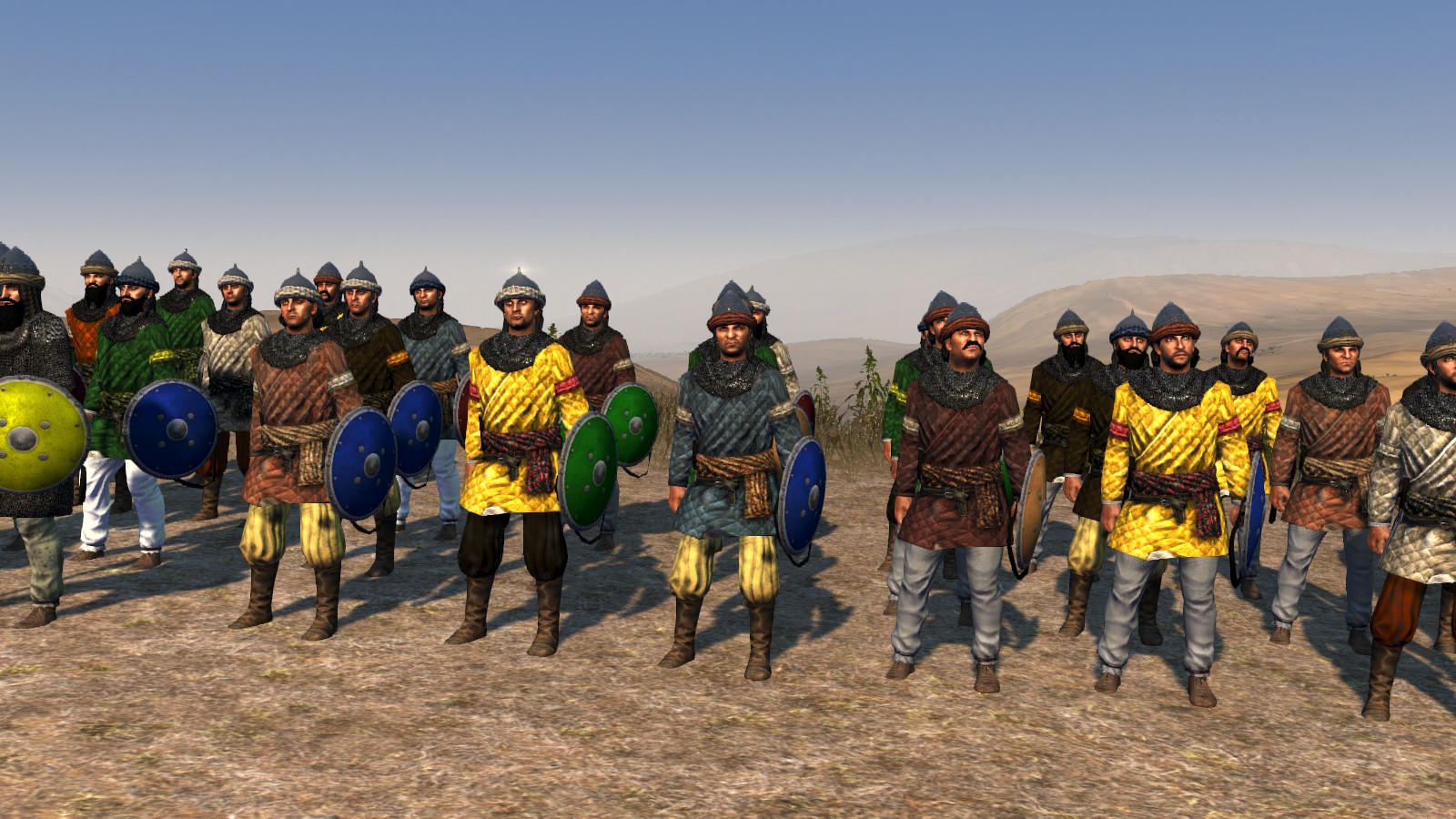
A common weapon in medieval Muslim armies was Naphta grenades. The Sultans in Delhi, most notably, kept a steady supply, and even found ingenious uses for it, such as throwing it down from an elephant-mounted howdah.
Melee Infantry Units :
Tajik Levy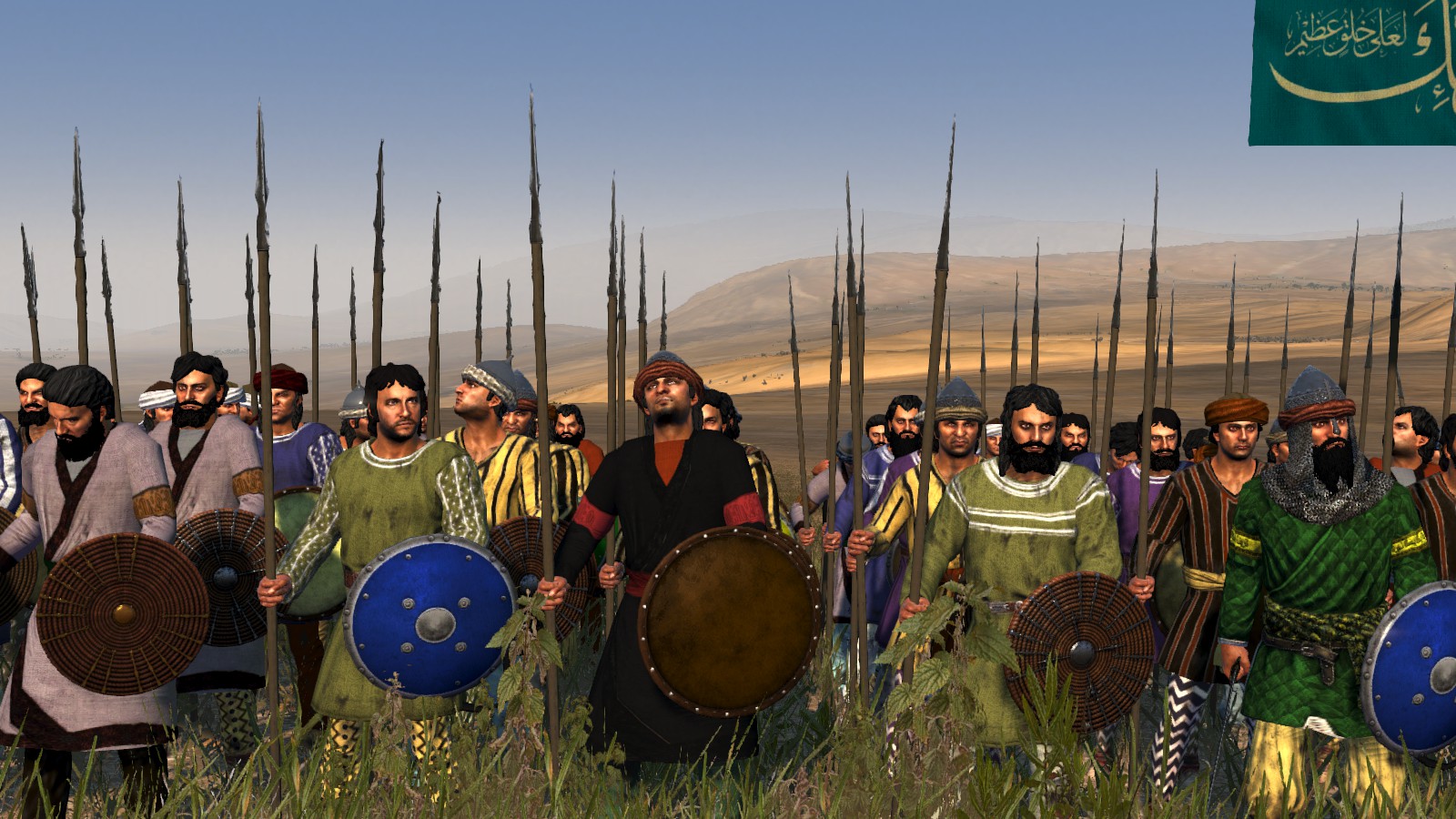
Tajiks were the Iranian-speaking settled population in Afghanistan (amongst other places, such as Khorasan). While best known for their contributions as administrators and scholars, tajik volunteers and levies played a certain role in military affairs, though to a much lesser degree as the tribal groups and Ghulaman.
Afghan Spearmen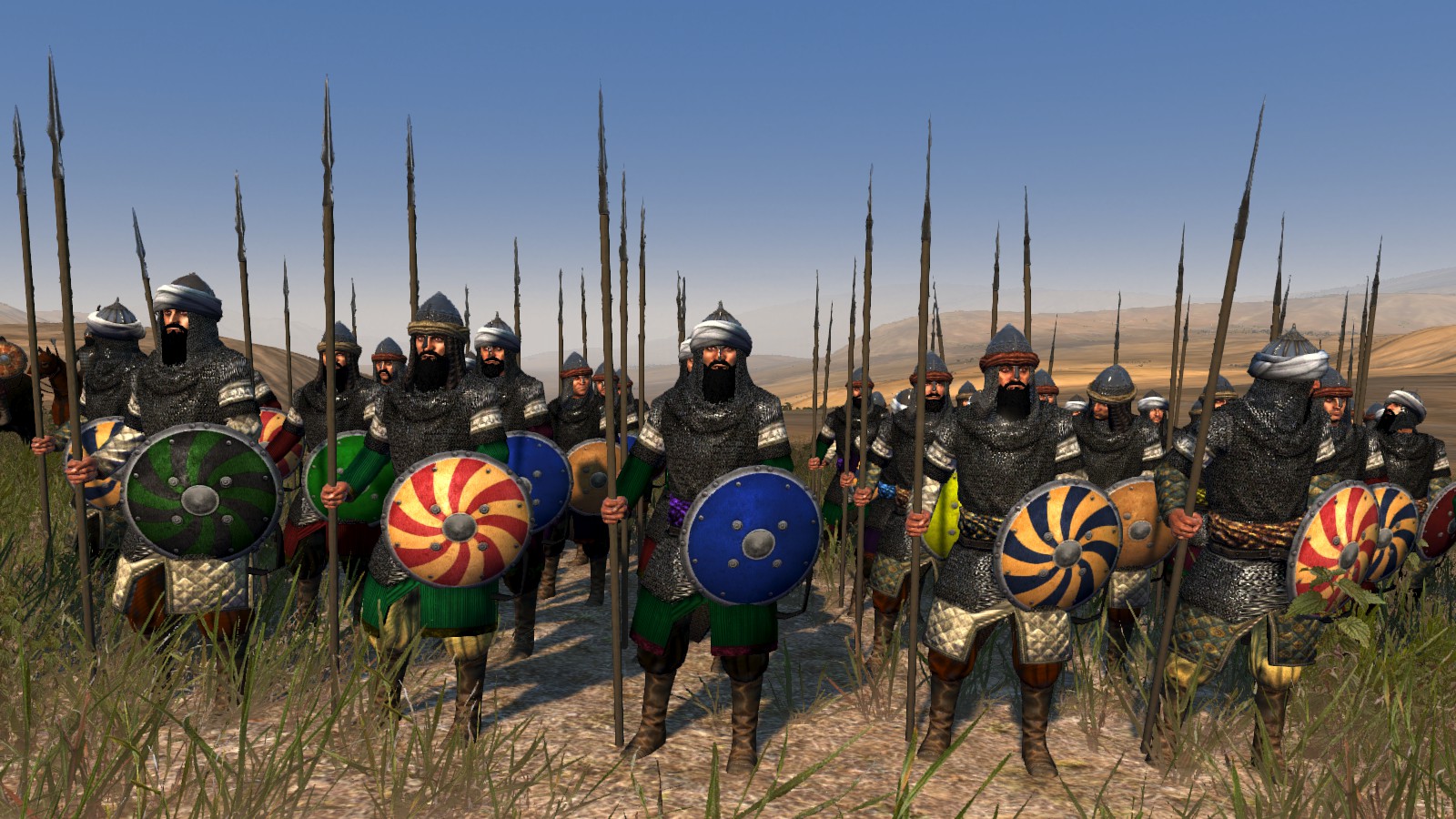
Afghans, from various backgrounds, were the main source of infantry for the Ghurid military. From volunteers (muttawwi'a) to urban militias to tribesmen, the Afghans could generally count on quality armour, as the region's rich deposits in iron allowed them to have a thriving industry, very well known across the Muslim world for their high-quality mail and lamellar armours.
Ghori Tribesmen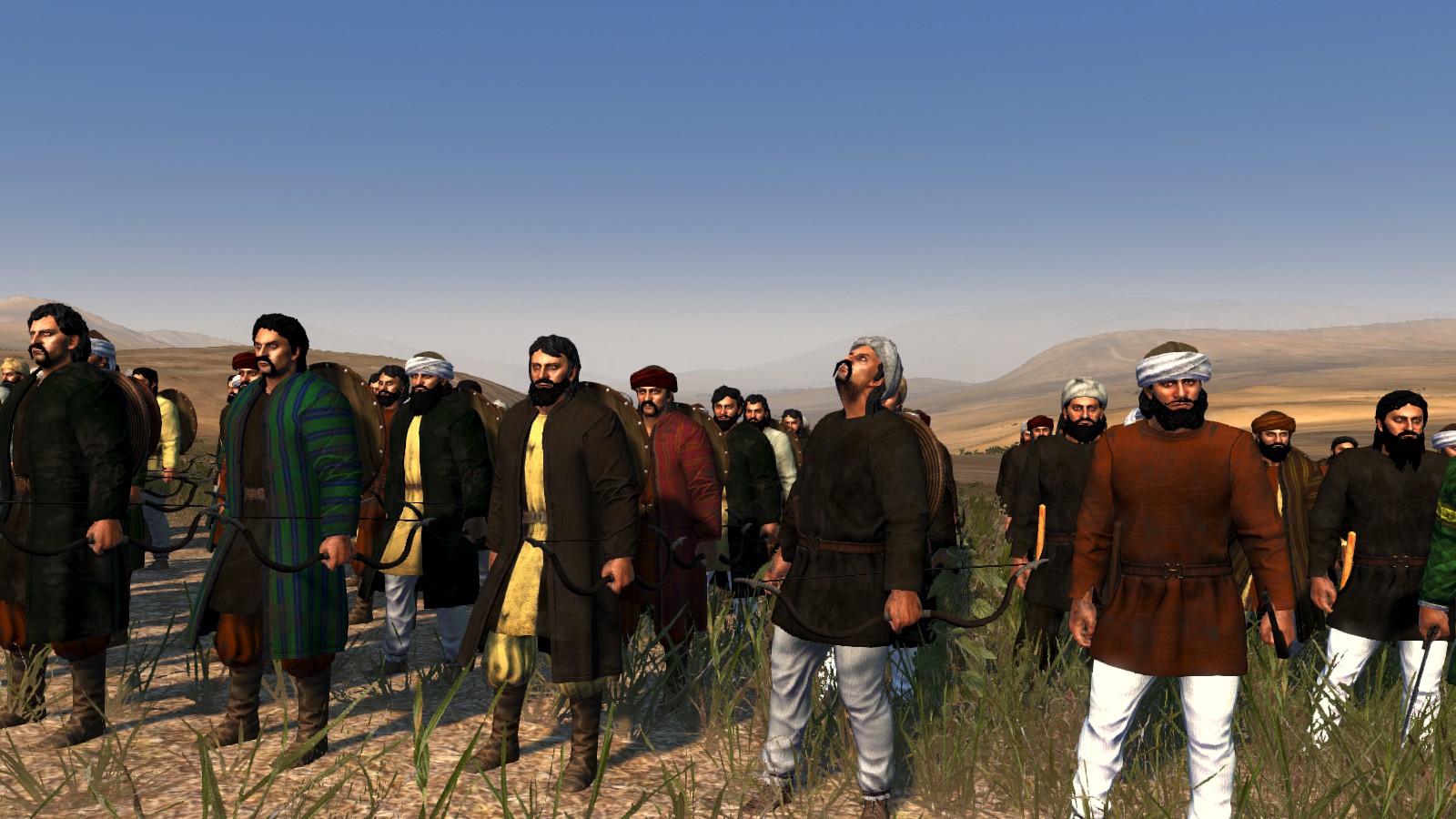
The Ghurid dynasty built their kingdom first and foremost through the military might of the mountain tribes. Fighting as infantrymen, the Ghori tribal soldiers were trained for fighting by their lifestyle, including the occasional raid.
Ghori Infantry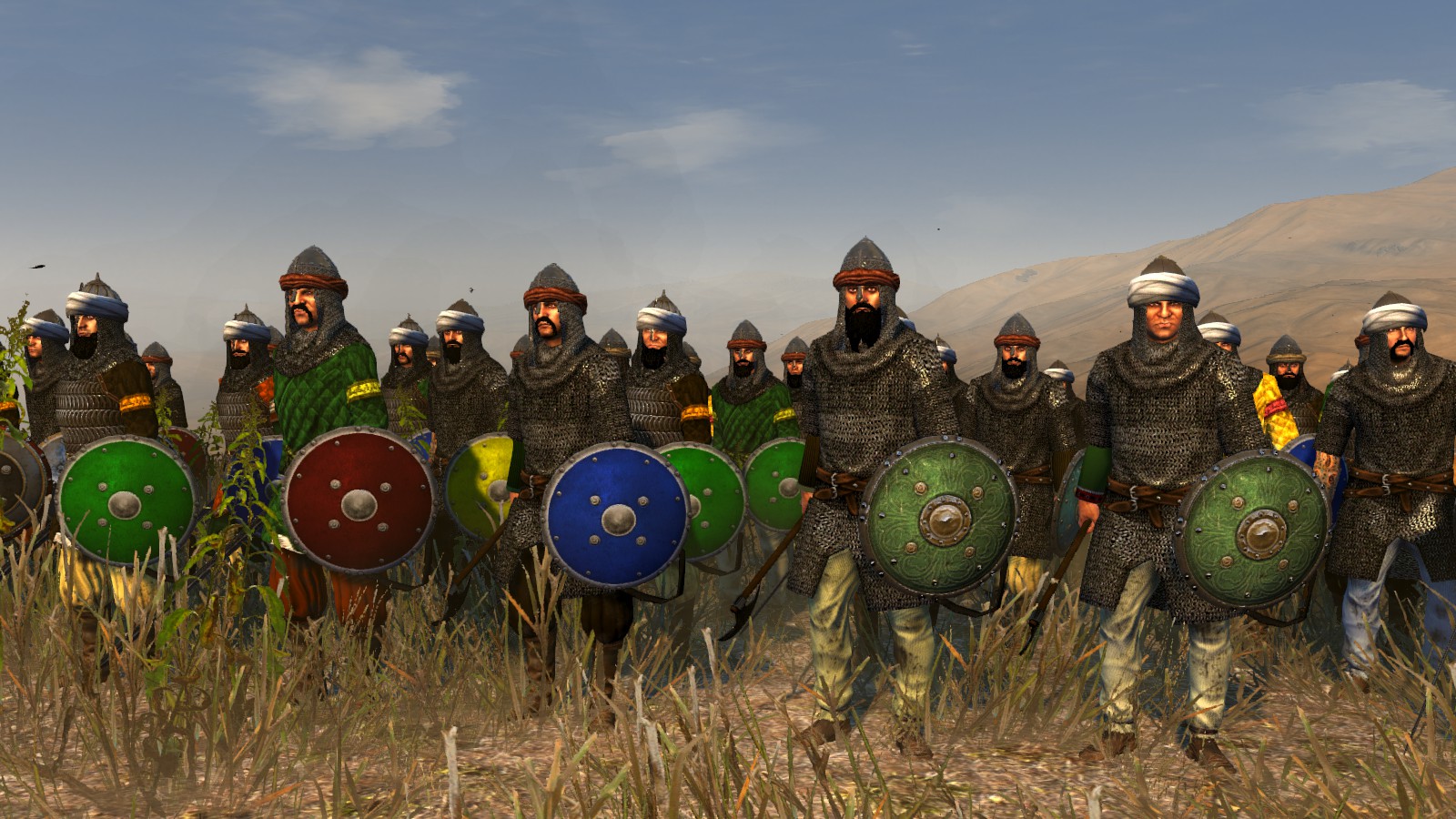
The Ghurid dynasty built their kingdom first and foremost through the military might of the mountain tribes. Fighting as infantrymen, the Ghori tribal soldiers were trained for fighting by their lifestyle, including the occasional raid. The heavier infantry of the Ghurids, generally held in reserve in the middle, was outfitted with high quality metal armour and khazaghands.
Skirmisher Cavalry Units :
Sawar-i Barahna wa-Jarida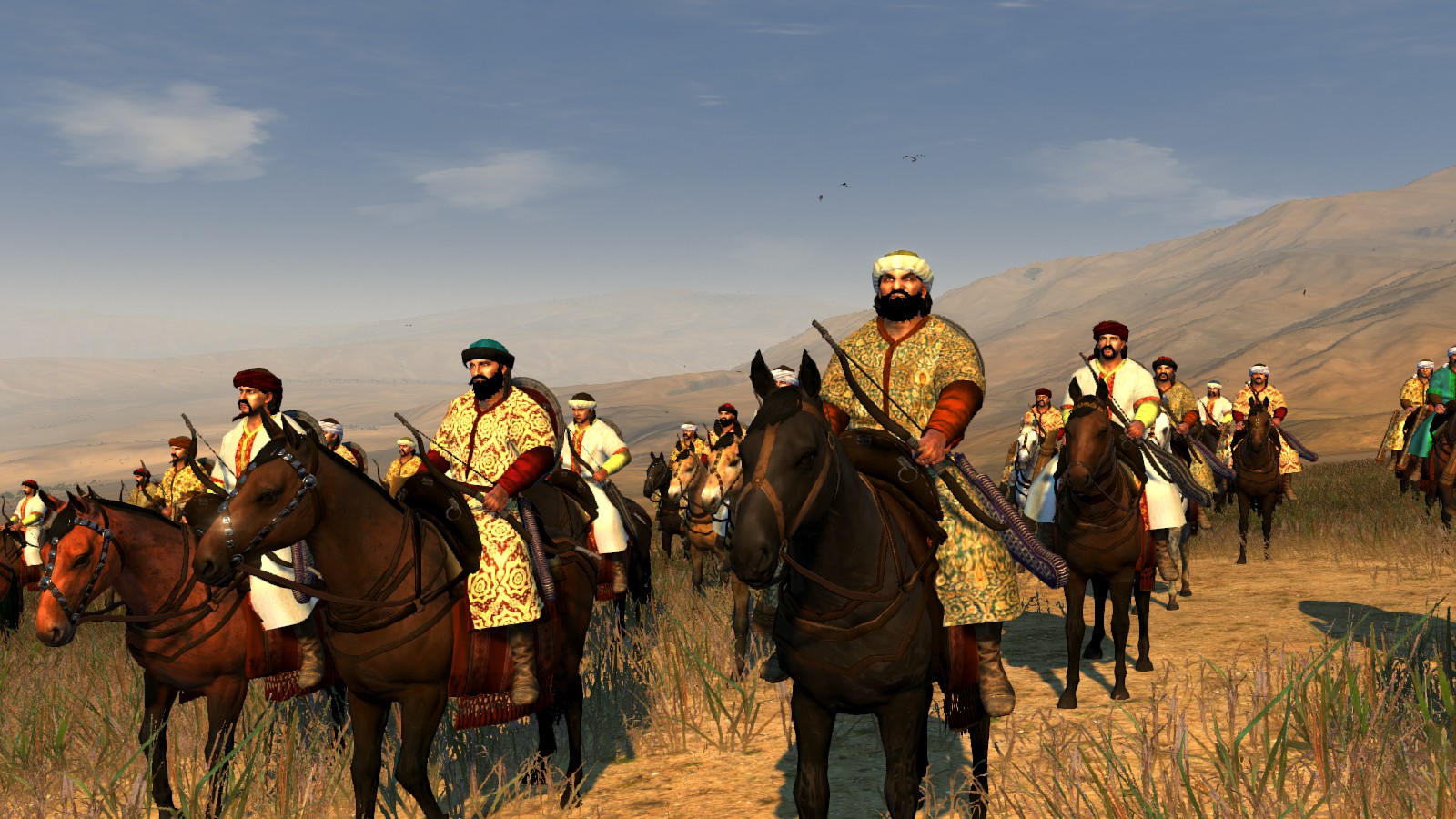
The Sawar-i Barahna wa-Jarida ('naked and battle-ready horsemen') are one of the named units from the Ghurid military. Consisting of picked light horse archers from Turkish tribes in Afghanistan, namely the Khalaj, their role in the crushing victory of the Ghurids in Tara'in is to be noted. Split into 4 groups of up to 10 000 riders, the horse archers of Mu'izz ad-Din peppered the Indians for a full day, completely demoralizing and breaking the cohesion of Privthiraj Chauhan's troops, before they joined the charge of the main body of heavy cavalry in a single charge, routing the much larger Indian force in a single sweep.
Ghuzz Mercenaries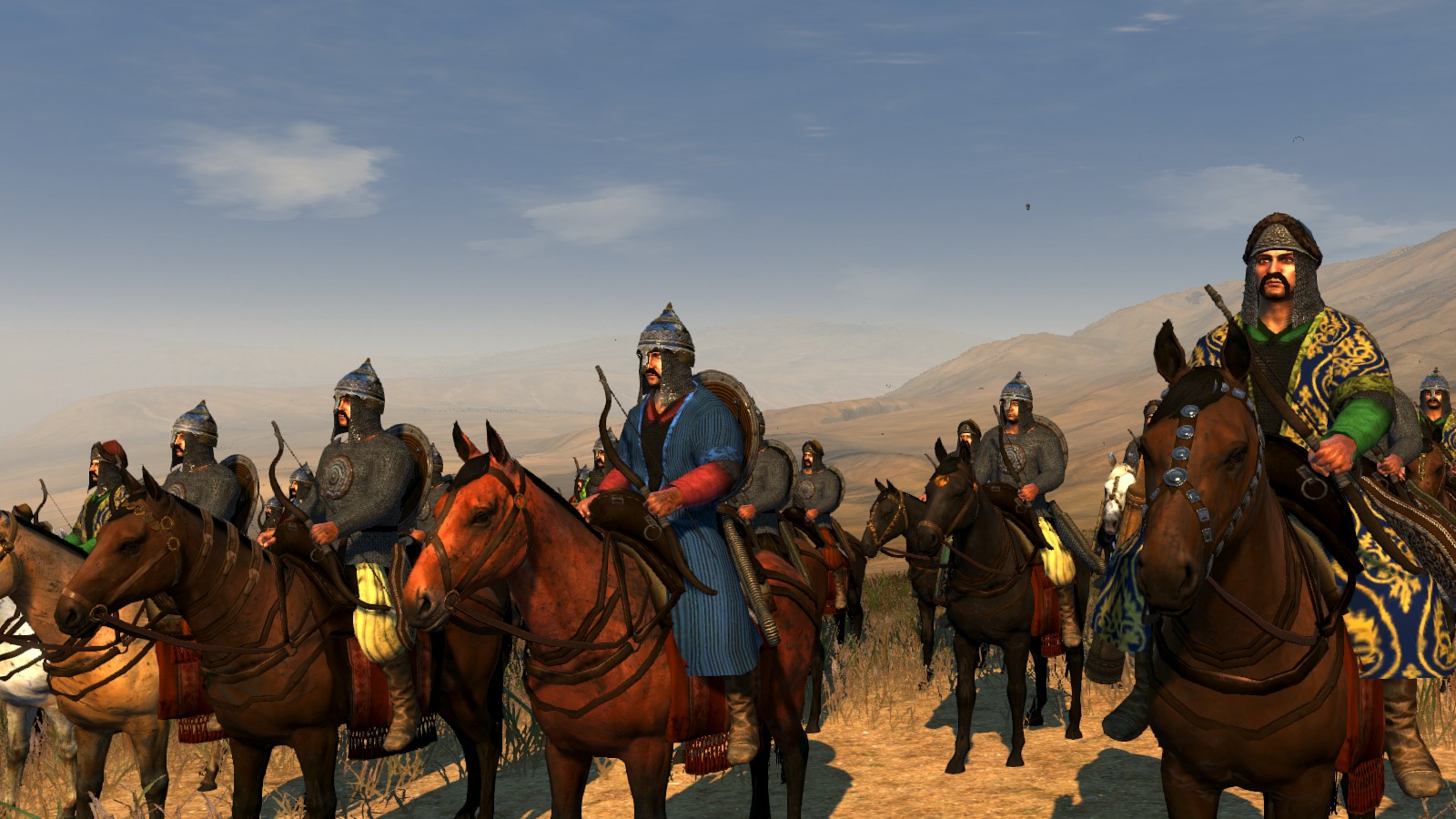
While Turks played a certain role in Ghurid military success, the death of Mu'izz ad-Din and the arms race that followed between all contestants for power led to a great number of Ghuzz mercenaries finding work in the Ghurid sultanate. Great soldiers, the Turks were however famous for being unreliable, acting according to their own free will and, most importantly, defecting quite frequently when it suited their interests.
Ghulaman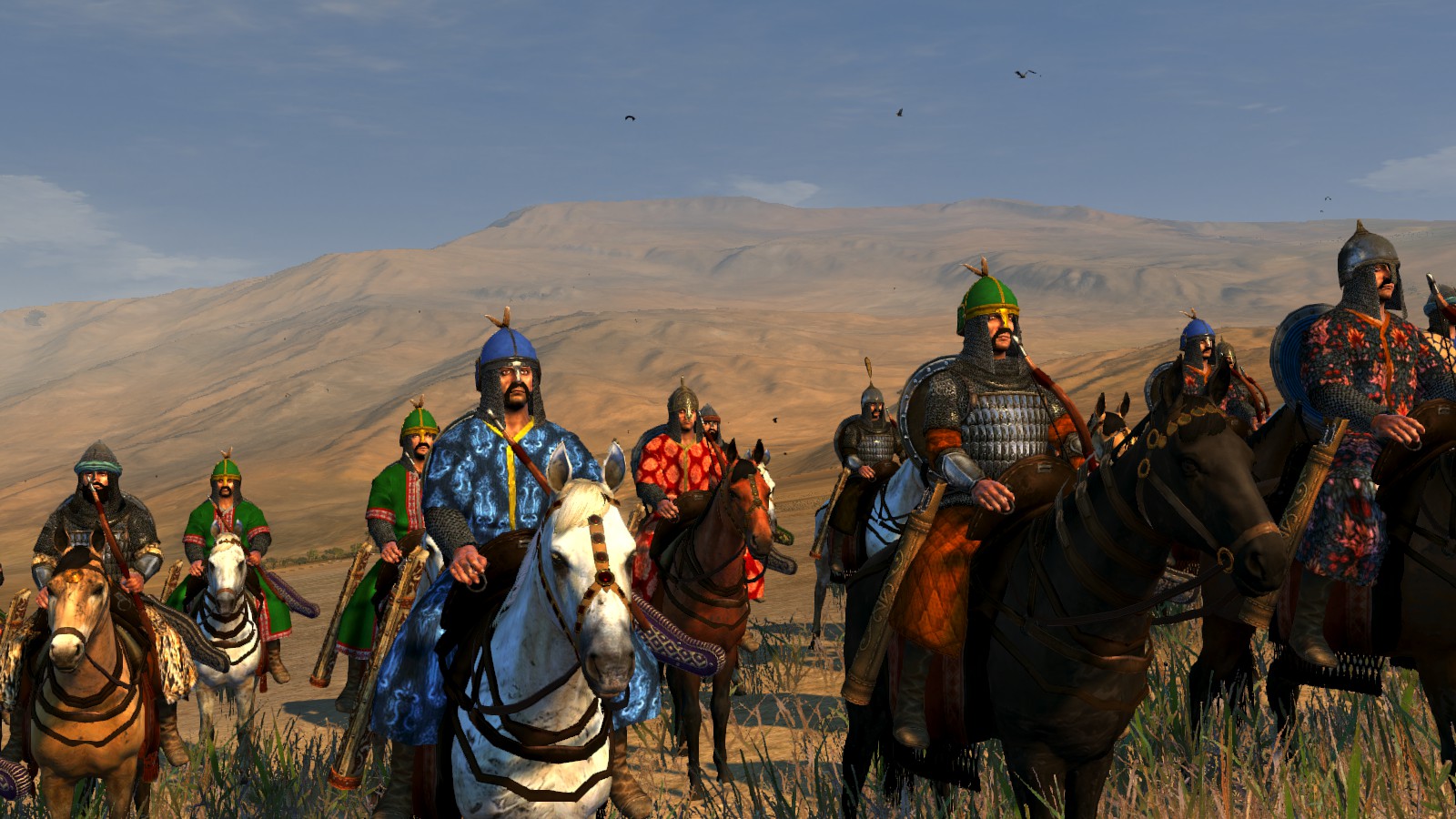
One of the more common sights in Muslim medieval armies was the institution of slave-soldiers. A Ghulam was typically a Turk taken as a slave, religiously indoctrinated and trained as a soldier. With no local support from fellow tribesmen, his loyalty, theoretically, would be solely to his master. Ghulaman became the elite class of soldiers in the Eastern Muslim world, being highly proficient as archers from horseback and with various weapons such as the lance and mace.
Melee/Shock Cavalry Units :
Khalaj Cavalry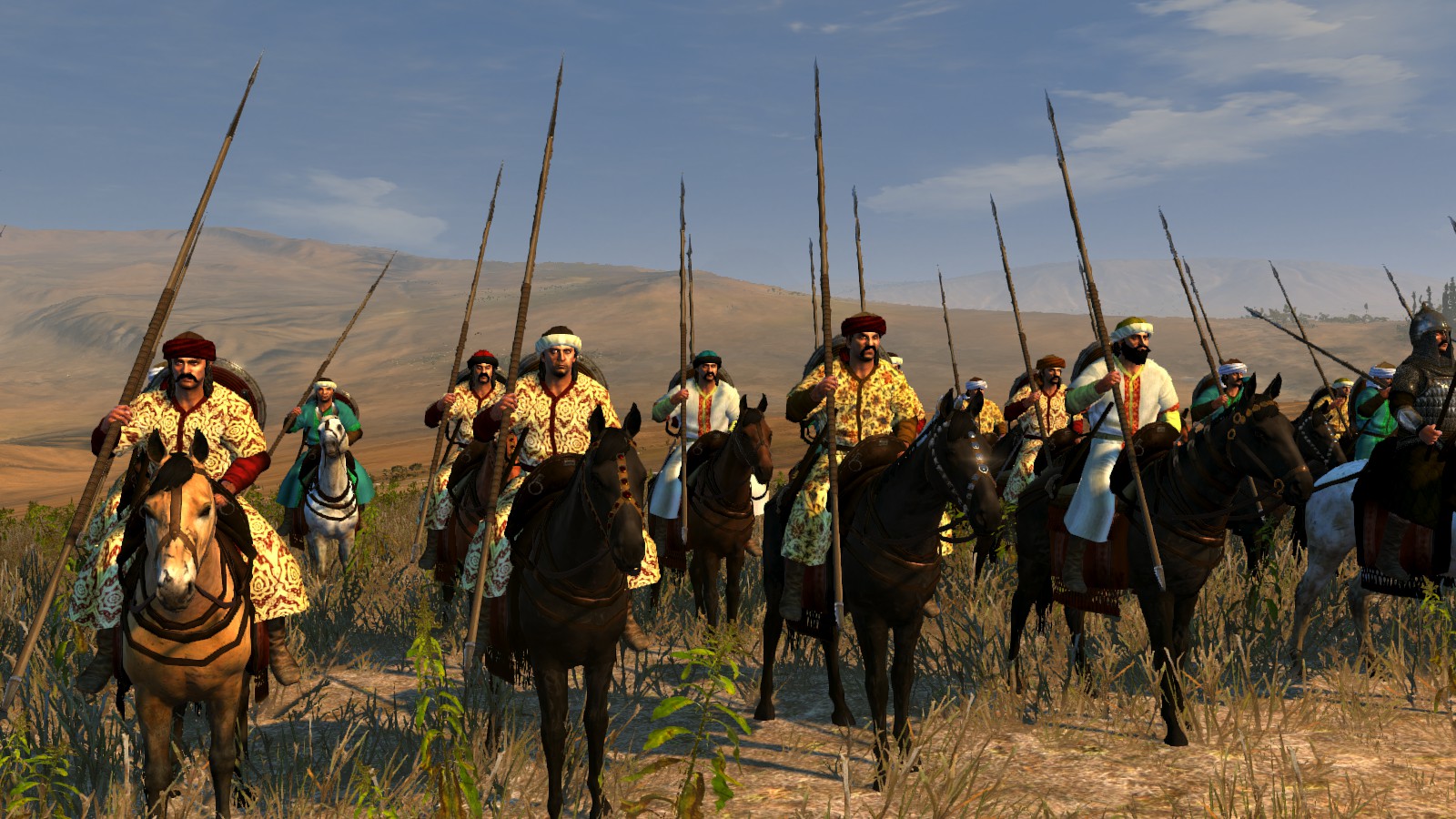
The Khalaj are a tribe of Turks that migrated from Central Asia and absorbed into Afghan tribal society. They still excel at the same things as typical Turkish tribesmen do, such as mounted combat and archery. Khalaj became an important source of manpower for the Ghurids, and later Sultans in Delhi, being reliable soldiers and eager for warfare. According to an account, when Mu'izz ad-Din was badly injured in the Ghurid defeat at Tara'in in 1191, it was a Khalaj who jumped from his mount to keep Mu'izz ad-Din from falling from his.
Ghori Maliks
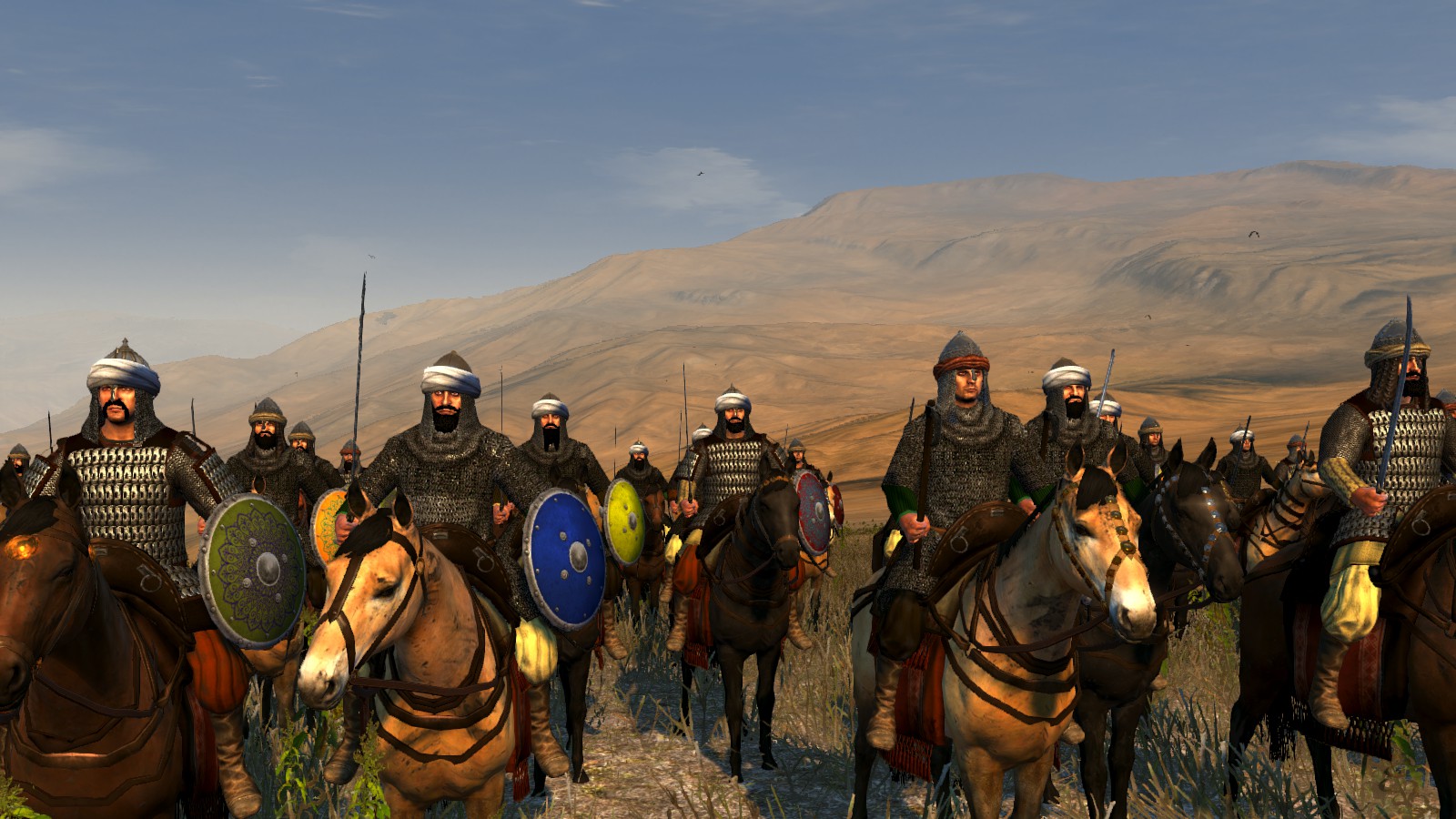
Ghori nobility is on the brink of extinction. An important part of the early Ghurid military, the Maliks, or noble chieftains, of the Ghori tribes have been slowly been replaced from important positions and administrative roles by the Ghulaman of the Sultan. Traditionally, the nobles of Ghor were well equipped with high quality armour and weapons made in the region.
Ghulam Lancers
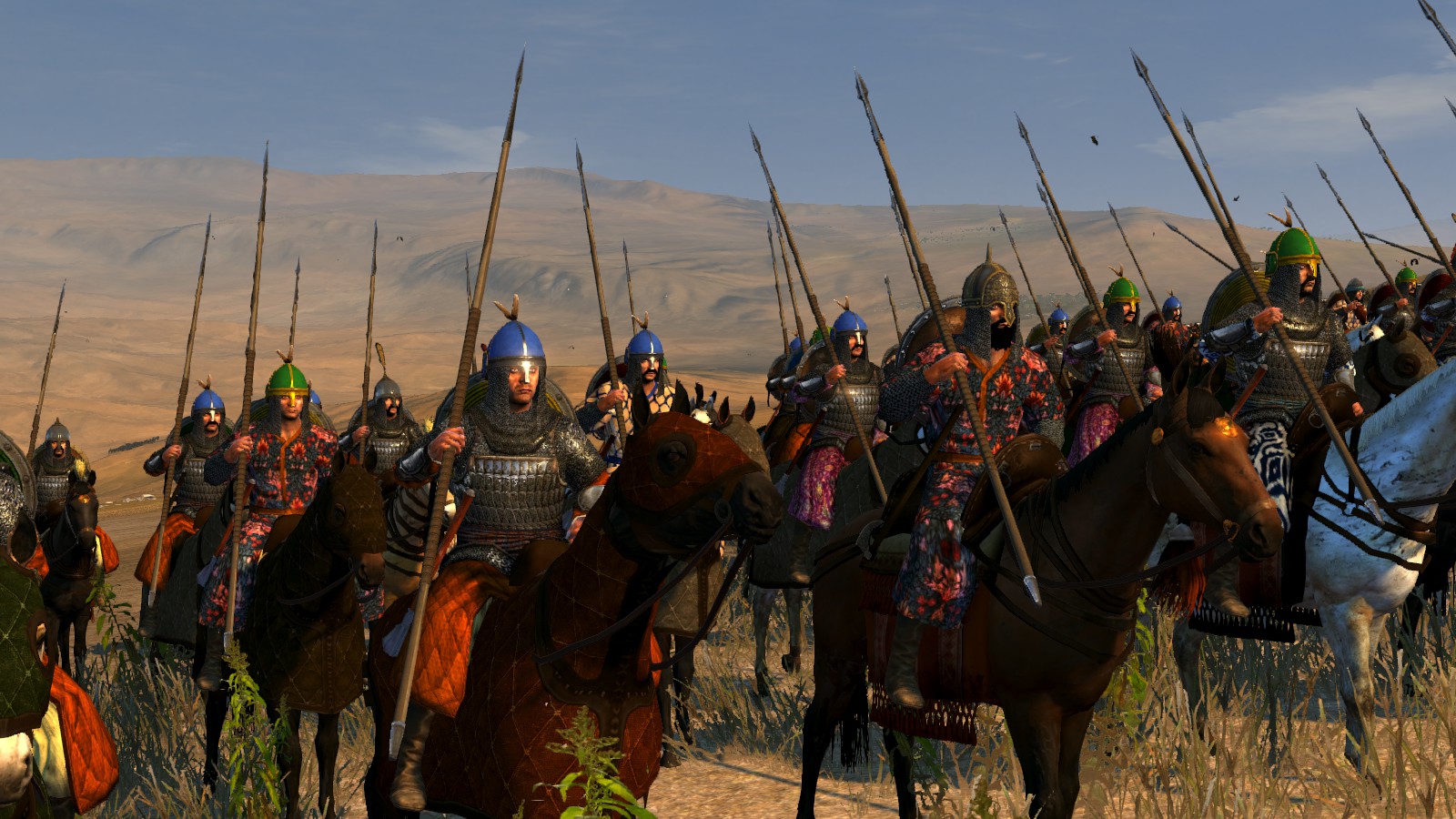
One of the more common sights in Muslim medieval armies was the institution of slave-soldiers. A Ghulam was typically a Turk taken as a slave, religiously indoctrinated and trained as a soldier. With no local support from fellow tribesmen, his loyalty, theoretically, would be solely to his master. Ghulaman became the elite class of soldiers in the Eastern Muslim world, being highly proficient as archers from horseback and with various weapons such as the lance and mace.
Ghulaman-i-saltan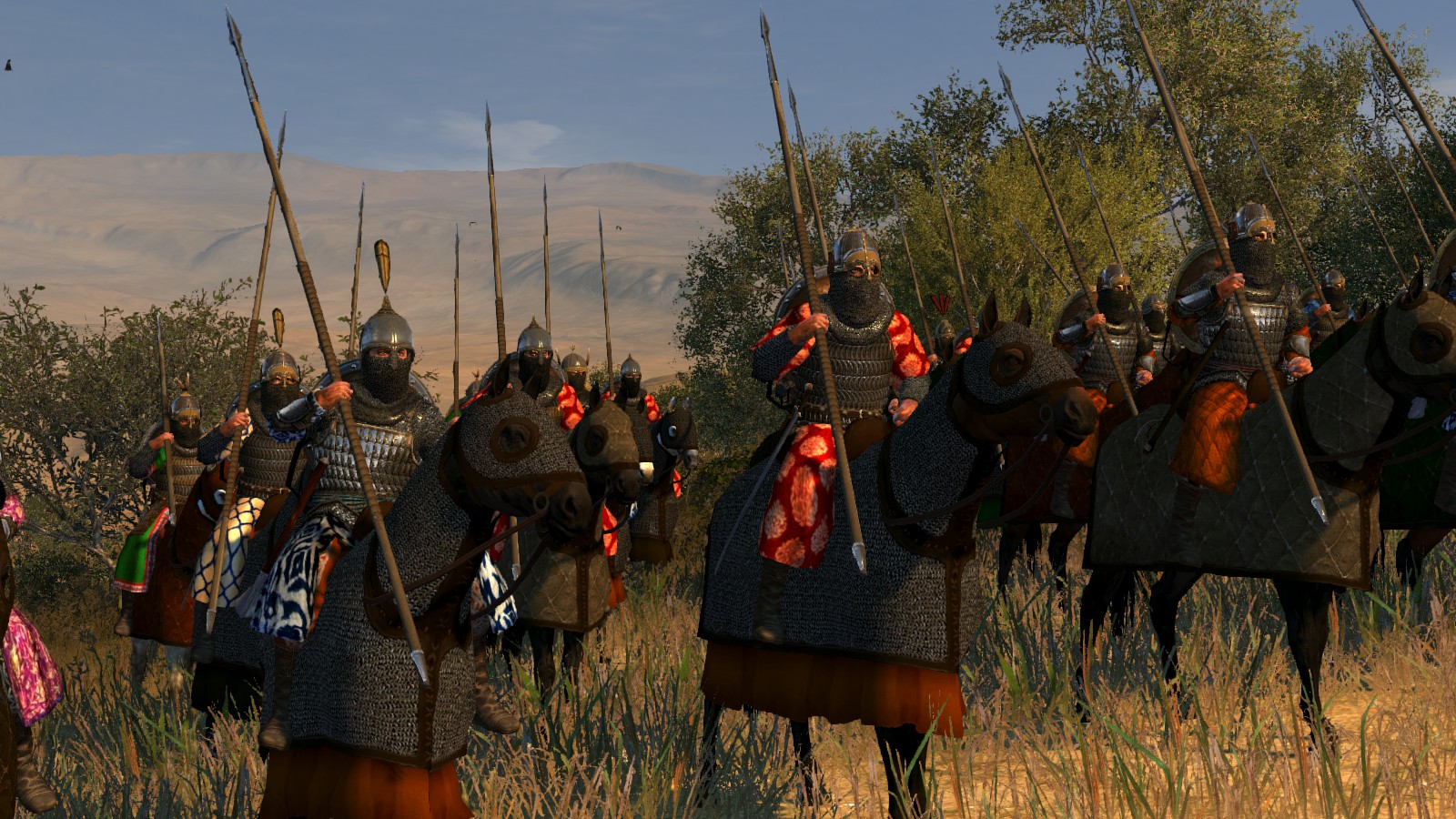
The biggest change in the military history of the Ghurid sultanate was the complete change from a mainly native-born fighting force of Ghori tribesmen to an almost complete army of cavalrymen by Mu'izz ad-Din. Finding the Ghori troops untrustworthy, he purchased very large quantities of slaves, who, history would show, were not only much more effective in combat, but also incredibly loyal. Ghulaman in the Muslim world were first and foremost used as horse archers, but Mu'izz ad-Din would generally prefer to use them as a large core of heavily armoured shock cavalry. The true elite of the Ghurid military, the Ghulaman-i-saltan ('Ghulams of the Sultan') were numbered at roughly 12 000 at Tara'in in 1192, wearing heavy armour and riding armoured (bar-gustuwani) horses. These soldiers, due to their military success, became iconic in the Ghurid realm, with coins showing such cavalrymen on one side from Afghanistan to Bengal. It was also from their ranks that would come many officers and officials, and the true successors of Mu'izz ad-Din Muhammad, the military leaders that would fight over his crumbling empire.
Elephants :
Indian Elephants
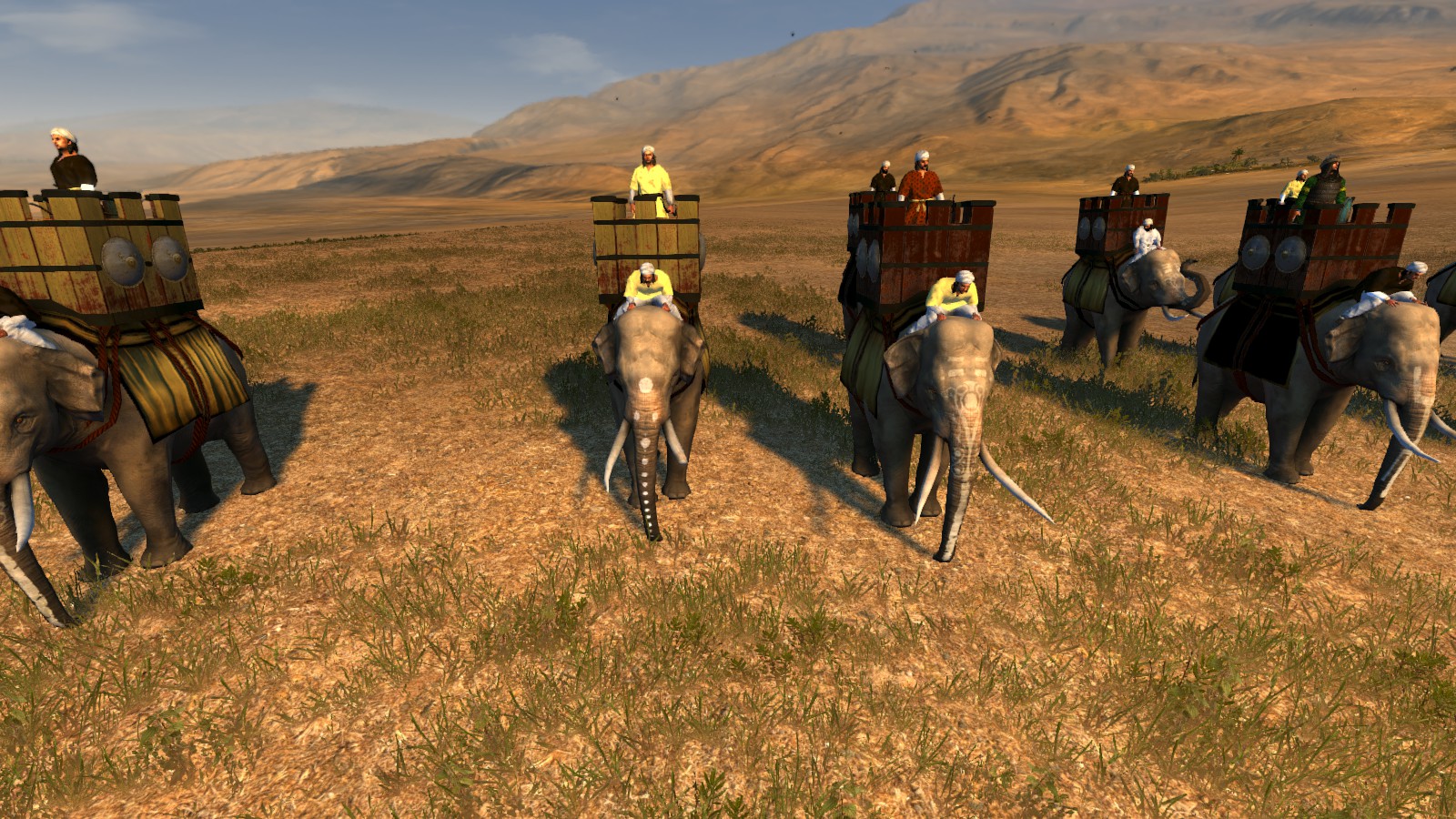
The Ghaznavids are best known for their great use of war elephants and the Ghurid successor in Delhi would eventually adopt elephants into their military. A terrifying force on the battlefield, Turks would eventually be able to overcome their power with their light cavalry, but dynasties that establish themselves in India were quick to adopt them into their own armies.
War Elephants
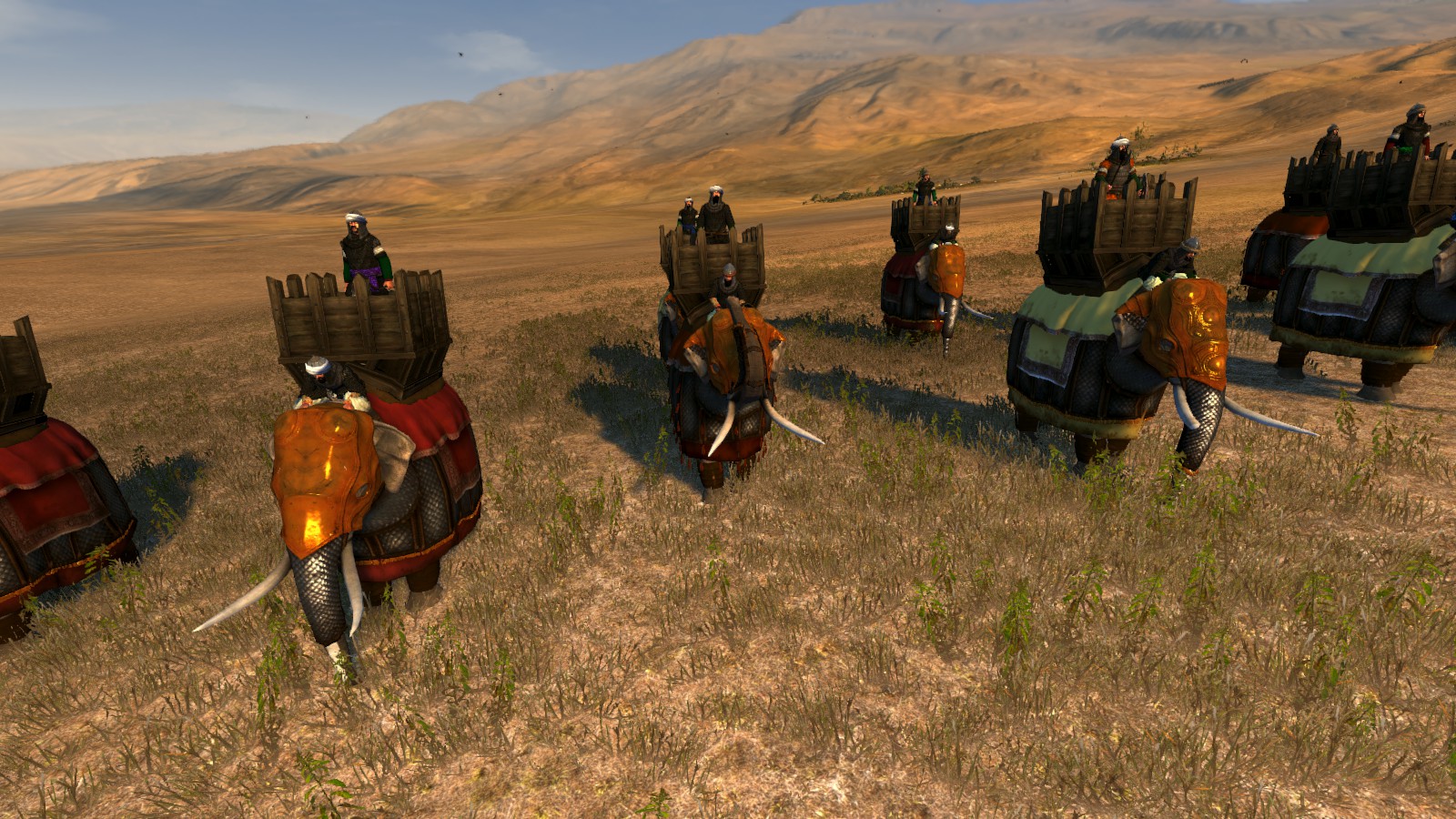
The Ghaznavids are best known for their great use of war elephants and the Ghurid successor in Delhi would eventually adopt elephants into their military. A terrifying force on the battlefield, Turks would eventually be able to overcome their power with their light cavalry, but dynasties that establish themselves in India were quick to adopt them into their own armies. Privthiraj Chauhan notably used heavily armoured elephants, making them look like mountains of metal. One of the few surviving military artifacts of the Ghurid and Sultanate period is elephant barding made of scales.
KHILJI REFORM UNITS (HIGH ERA)
The Khilji uprising led to major changes from the previous Ghulam dynasties of Delhi in Hindustan. The Khilji sultans were of Khalaj turk stock from Afghanistan and granted a title, before turning rebellious and taking over the capital under Jalal ad-Din Khilji. Ala ad-Din Khilji eventually rebelled against his uncle and slew him, taking over as Sultan and enacting massive reforms to the military and administration. Keen in observation, Ala ad-Din found that the great instability of the Ghulam dynasties were chiefly due to the power of the nobles, in that they were responsible for raising the majority of the armed forces, were capable of maintaining large personal armies and could raise local support in a bid for the throne.
The most important change in military structure was a massive centralization effort, creating a state-funded standing army of professional cavalrymen who owed loyalty to no specific individual but the throne. If chronicles are to be exact, the army under Ala ad-Din would have numbered, at its greatest extent, some 475 000 career soldiers, rising up to 900 000 under Muhammad bin Tughluq. The horsemen were given arms, armour, clothing and a fixed salary from the Sultan. The highest rank of the Murattab was to provide his own mounts for war, receiving a salary three times as large as the next rank of Do-aspa, who was given one mount from the office of the Ariz-i-Mumalik, and expected to provide the other.
Beyond equipment and pay, Ala ad-Din instituted a system of branding for horses provided by the Sultan's court. Being of higher quality, these horses were marked to ensure that they were the ones used in war and not the possession of rider who wished to keep the better horse for himself. Soldier rolls were instituted so that the salaried soldiers were the ones present and not a substitute. Seasonal hunts were now mandatory to keep soldiers well trained. Officer positions were based on the decimal system used by Central Asian armies such as the Mongols.
With regards to administrative reforms, Ala ad-Din paid for his army by fixing market prices, which allowed him to raise taxes without affecting peoples' quality of life.
General units :
Ala ad-Din Khilji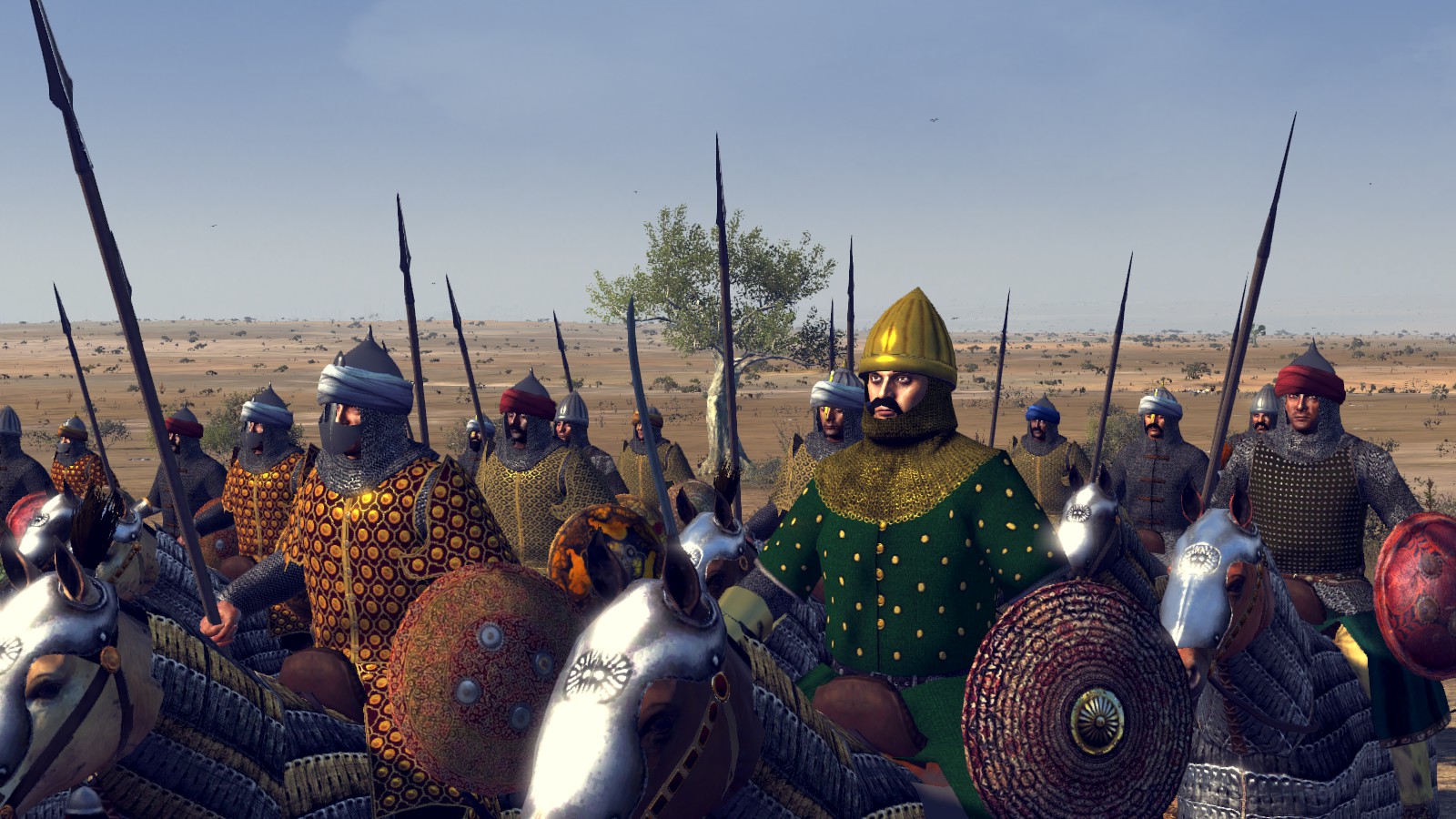
In an effort to prevent a coup or assassination, Ala ad-Din Khilji recruited a personal guard of Hindu soldiers who would have no loyalty to nobles. The prestige of the guard attracted more native nobility into the Delhi court. and their loyalty was proven quickly as they thwarted an assassination attempt during a hunt early in his reign.
Sipahsalar and Jandars
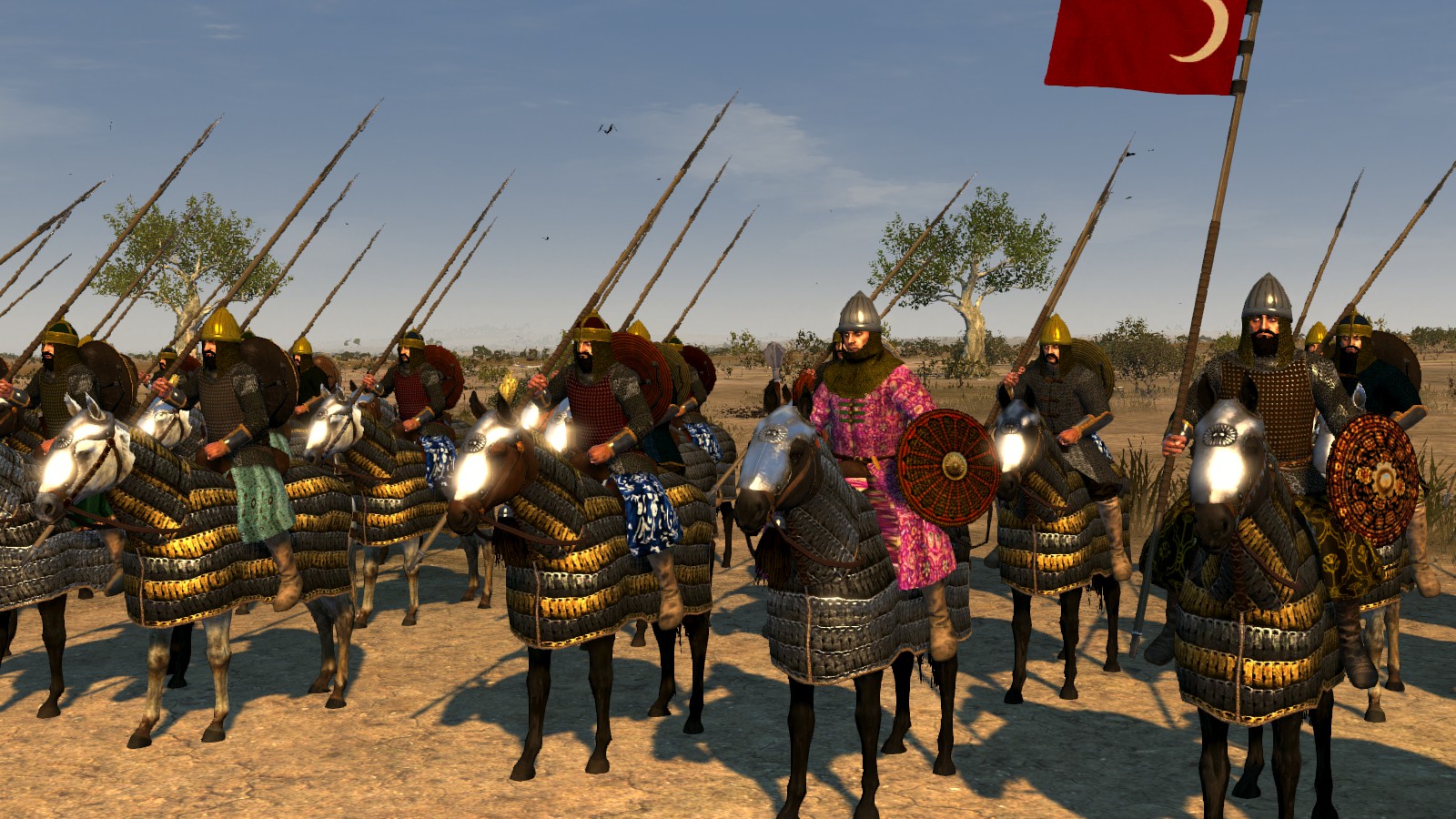
The Sipahsalar was a high ranking officer and lead large number of soldiers into battle. Battlefield commanders were traditionaly flanked by bodyguards ('jandars').
Skirmisher Infantry Units :
Zupin Javelinmen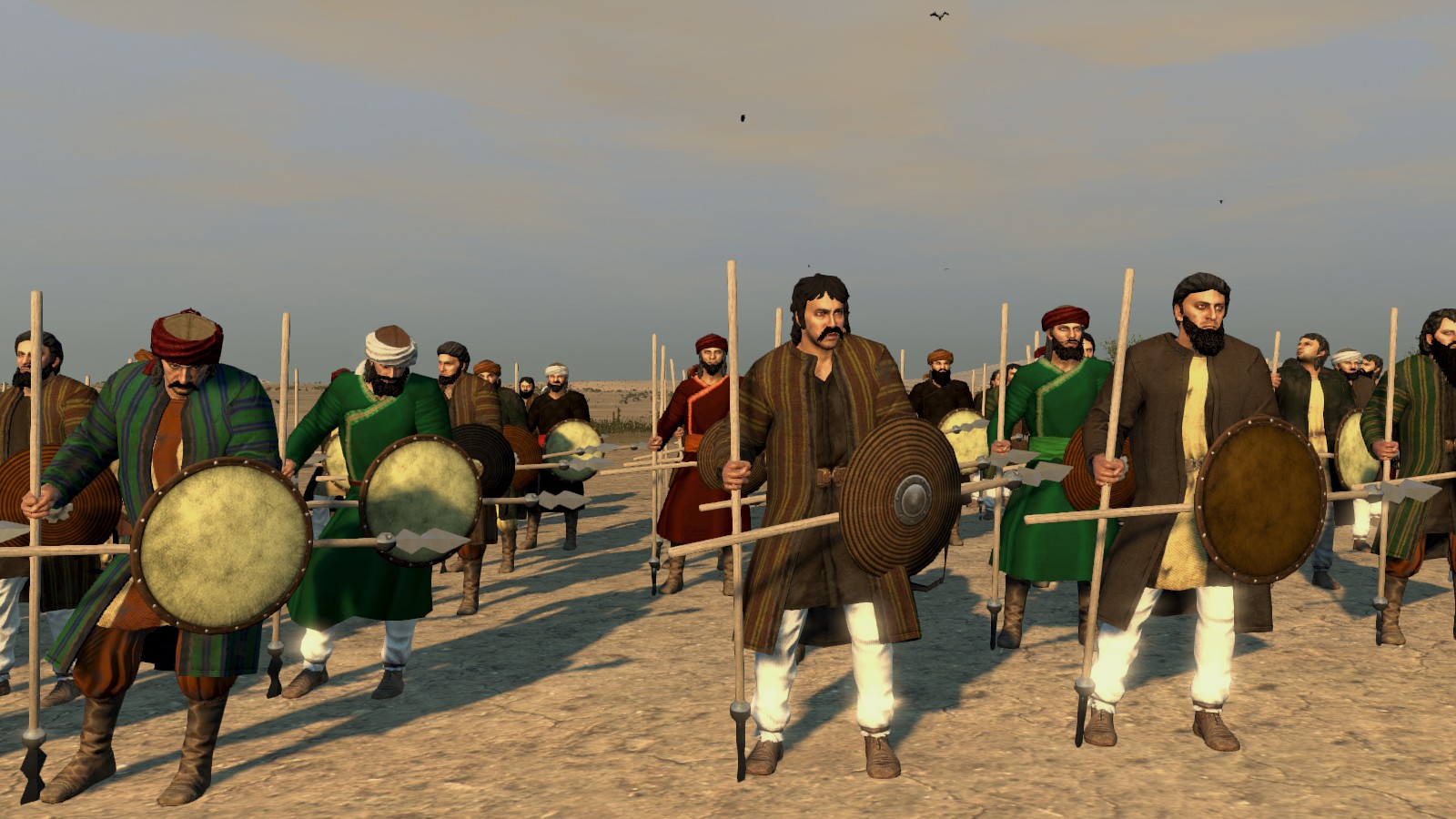
An interesting side-effect of the Ghaznavid conquest of Iran was the spread of military fashion. The zupin, a shortspear that also functioned as a javelin, was the traditional weapon of the people of Daylam, a mountainous region of North-Western Iran. The Daylami would loan out their services, finding work across the Muslim world, and the zupin would be used from Egypt to India. Zupin javelinmen are noted as being a part of the early military of the Ghurids, generally placed on the left wing.
Afghan Archers
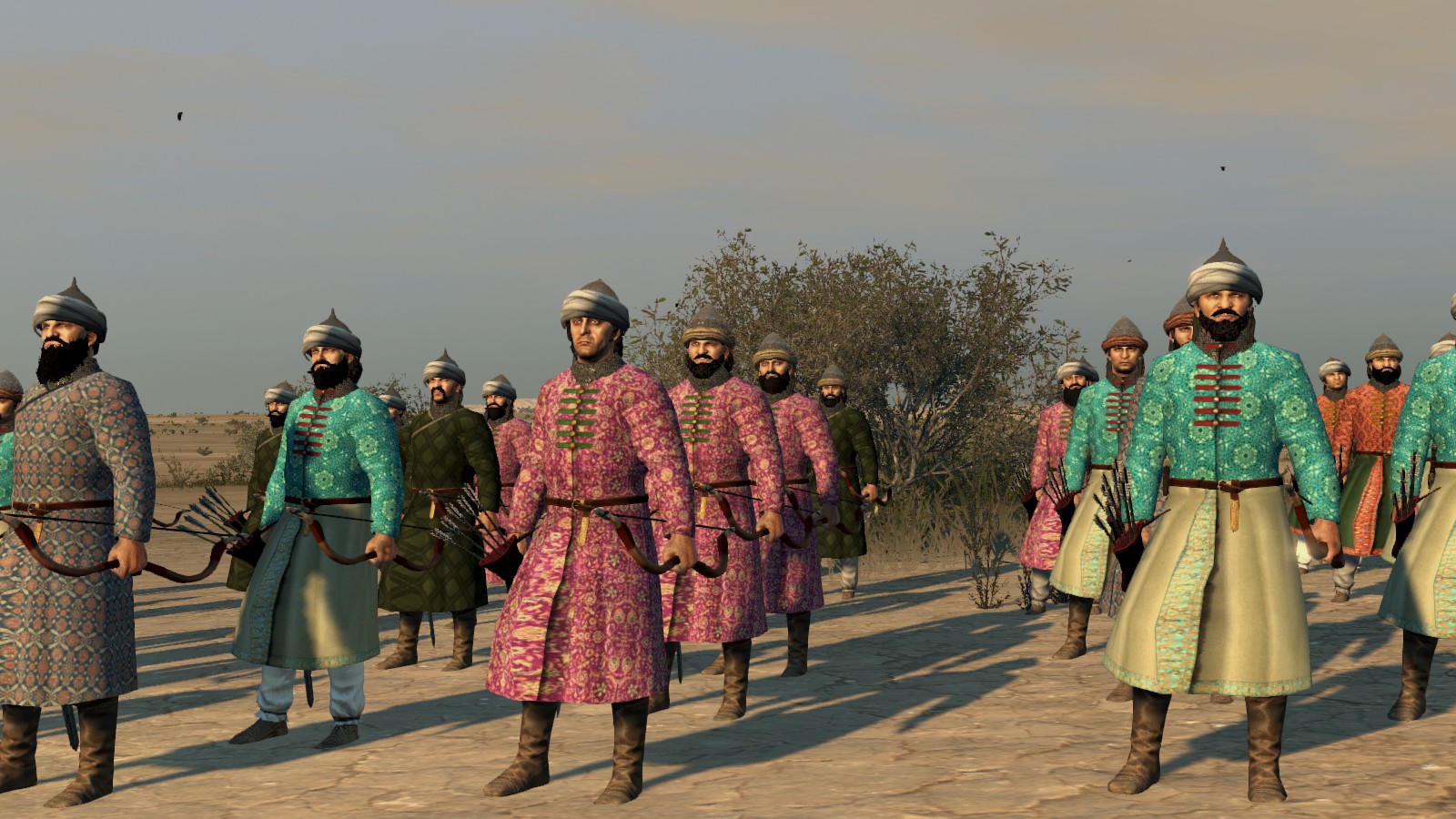
Archers formed the largest part of Muslim missile troops in the medieval period. The Ghurid archers were tactically placed behind both the first row of heavy spearmen and the reserve of heavy infantry. The Delhi sultanate found itself ruling over a largely foreign population in both ethnicity and religion, but found in Afghans a large, reliable pool of manpower for their infantry. Migrations of Afghans into Hindustan accelerated following the Mongol conquest of that region and Muslim rulers in India were quite eager to find place for Muslims whose affinity was mostly to these Afghan or Turkish nobles.
Nawak Infantry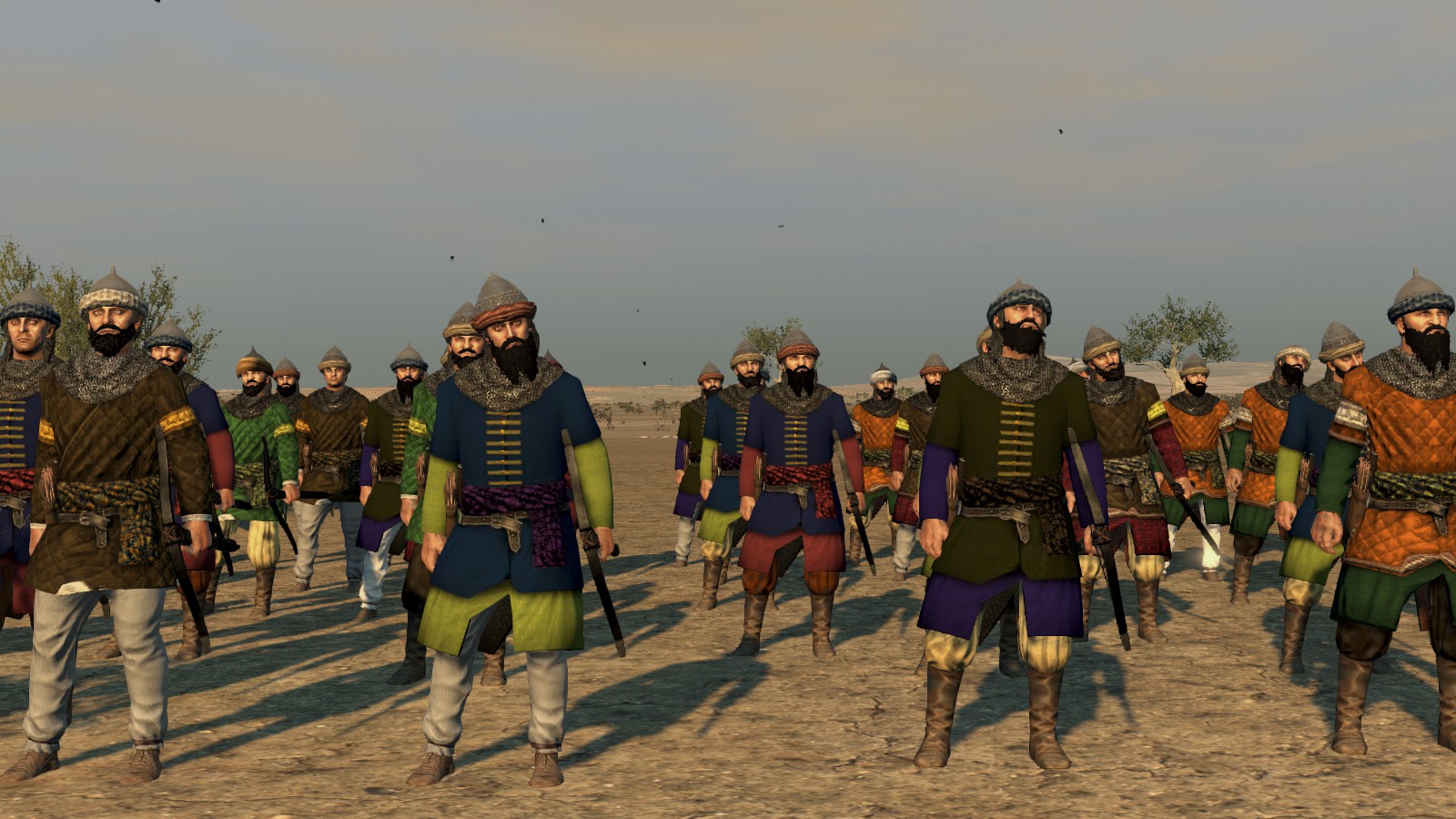
When discussing reasons for the success of Muslims in India during the Ghurid period, one of the main military technology development that the Muslims had over the Indian kingdoms was the crossbow, 'nawak'. The piercing bolts gave the Muslims the ability to effectively pierce the heavy armour of the Indians while the latter had no such answer. The Delhi sultanate found itself ruling over a largely foreign population in both ethnicity and religion, but found in Afghans a large, reliable pool of manpower for their infantry. Migrations of Afghans into Hindustan accelerated following the Mongol conquest of that region and Muslim rulers in India were quite eager to find place for Muslims whose affinity was mostly to these Afghan or Turkish nobles.
Naphta Throwers
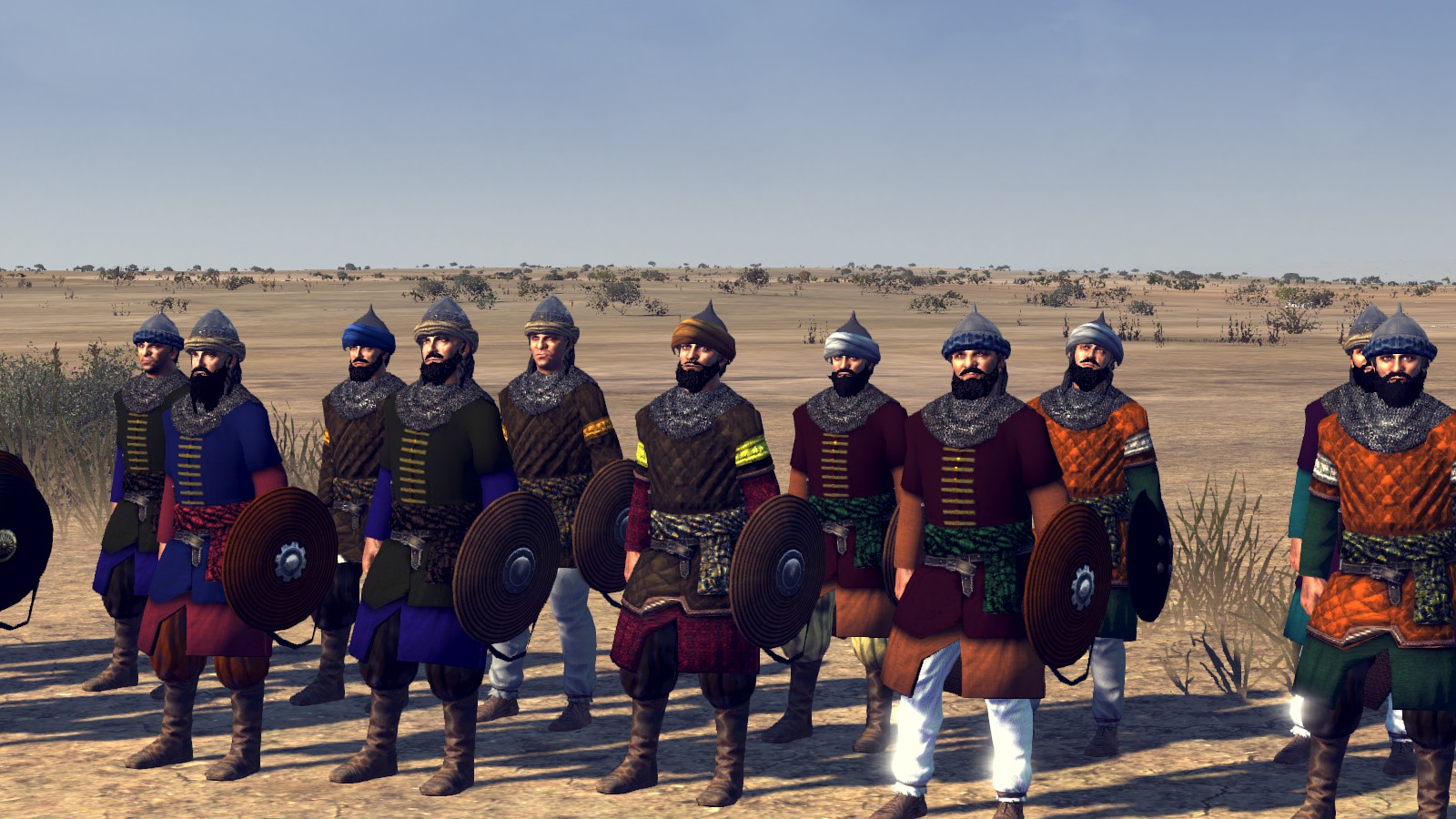
A common weapon in medieval Muslim armies was Naphta grenades. The Sultans in Delhi, most notably, kept a steady supply, and even found ingenious uses for it, such as throwing it down from an elephant-mounted howdah.
Dhanuks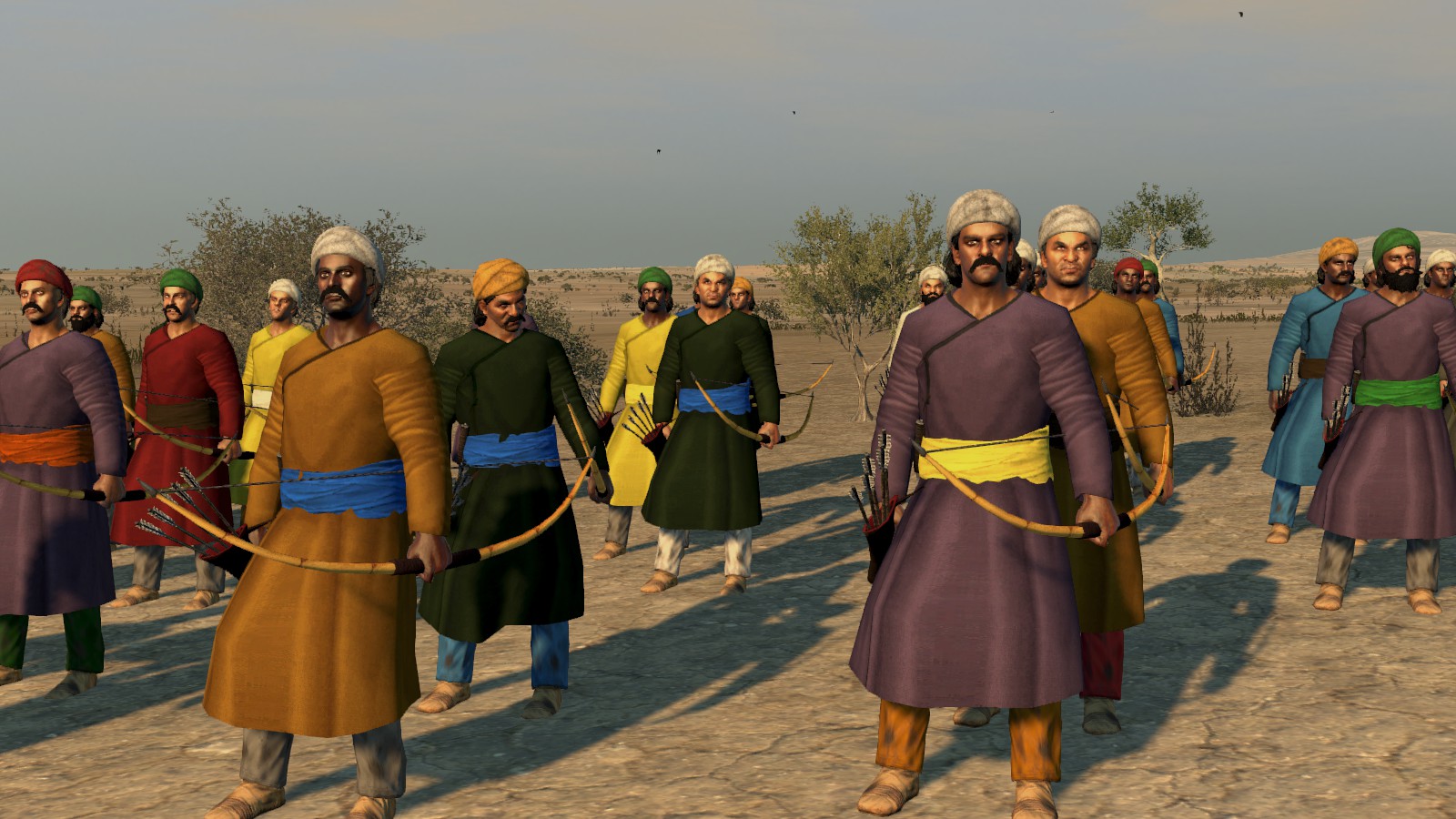
Dhanuks ('archers') form a significant part of the indian infantry. They are armed with bamboo or cane self bows, who have excellent power in closer ranges and are better fit to the hot and humid climate of India. As with the vast majority of indian soldiers, they wear no real armour.
Melee Infantry Units :
Tajik Levy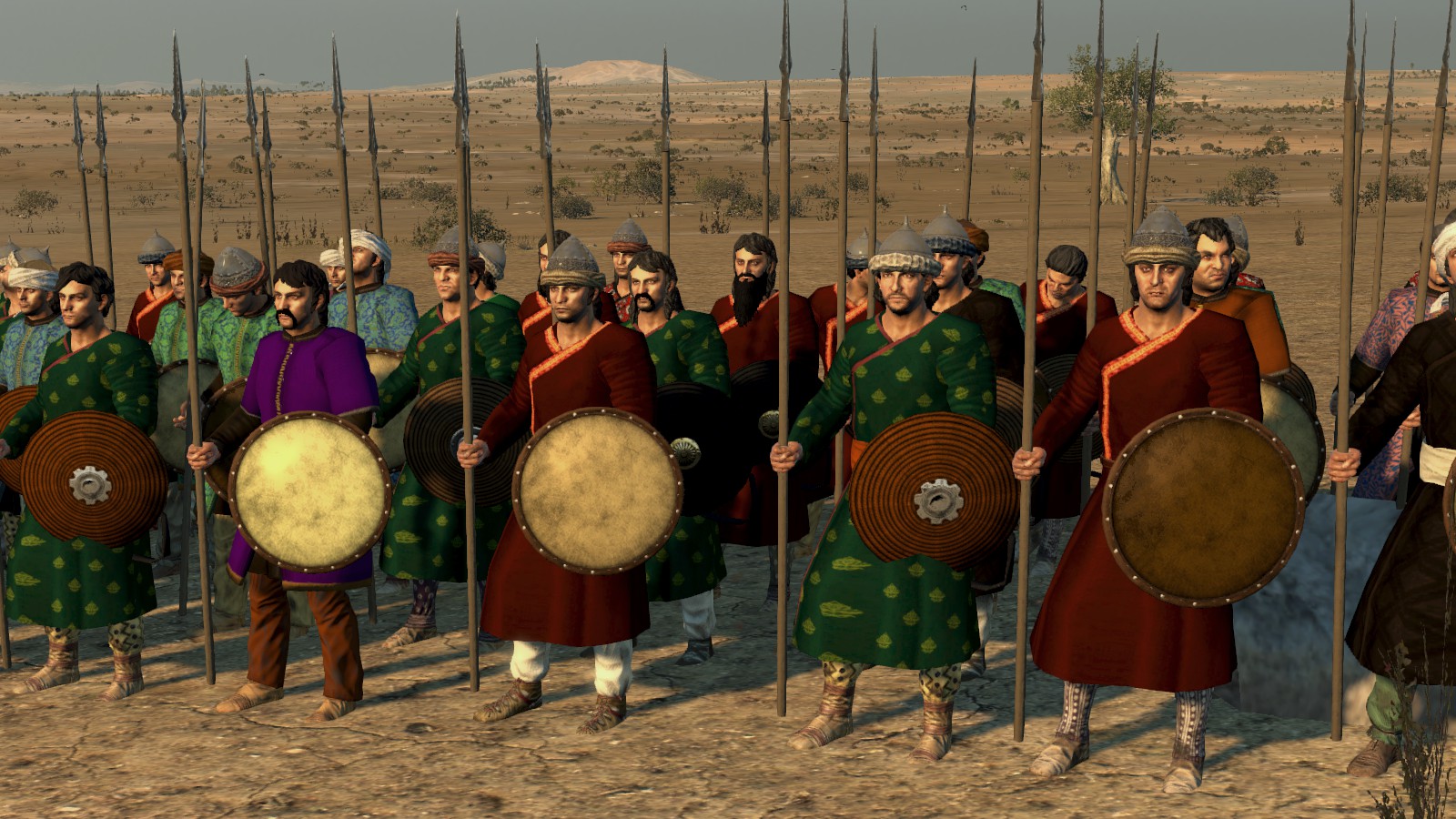
Tajiks were the Iranian-speaking settled population in Afghanistan (amongst other places, such as Khorasan). While best known for their contributions as administrators and scholars, tajik volunteers and levies played a certain role in military affairs. A fair number of Tajiks migrated to India following the Ghurid conquests and even more following the coming of the Mongols.
Afghan Spearmen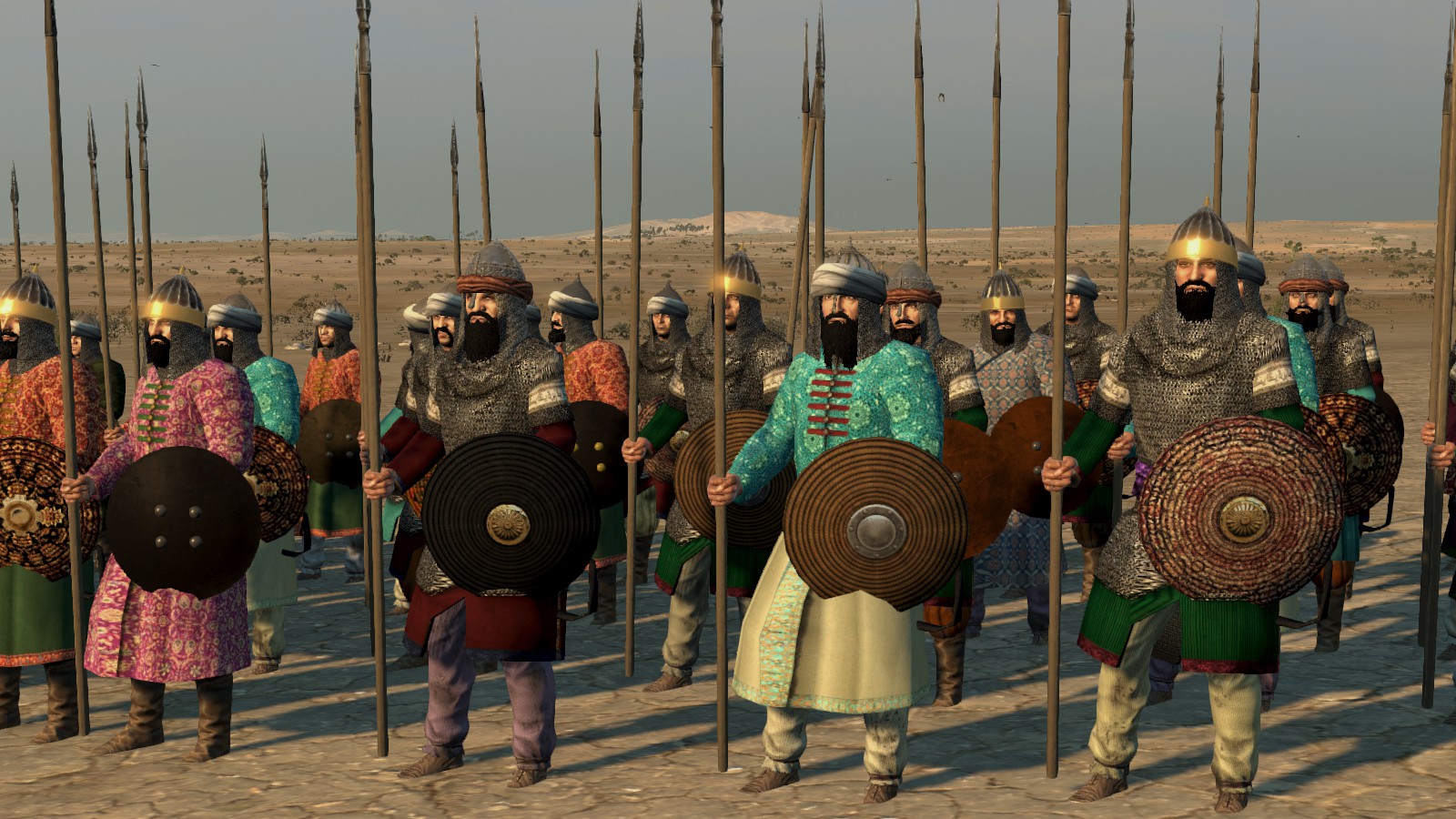
Afghans, from various backgrounds, were the main source of infantry for the Ghurid military. From volunteers (muttawwi'a) to urban militias to tribesmen, the Afghans could generally count on quality armour, as the region's rich deposits in iron allowed them to have a thriving industry, very well known across the Muslim world for their high-quality mail and lamellar armours. The Delhi sultanate found itself ruling over a largely foreign population in both ethnicity and religion, but found in Afghans a large, reliable pool of manpower for their infantry. Migrations of Afghans into Hindustan accelerated following the Mongol conquest of that region and Muslim rulers in India were quite eager to find place for Muslims whose affinity was mostly to these Afghan or Turkish nobles.
Afghan Tribesmen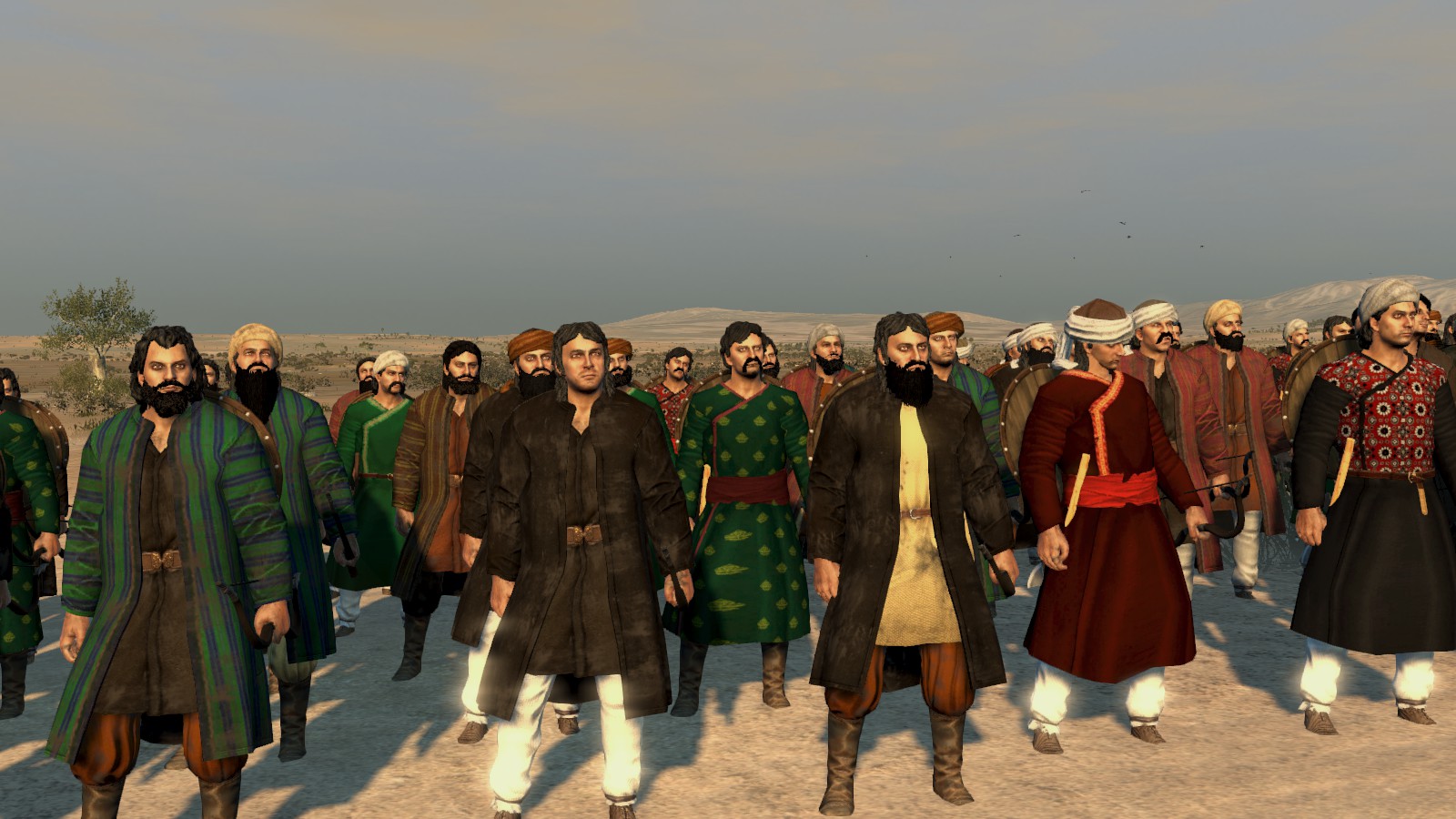
The Ghurid dynasty built their kingdom first and foremost through the military might of the mountain tribes. Fighting as infantrymen, the Ghori tribal soldiers were trained for fighting by their lifestyle, including the occasional raid. The Delhi sultanate found itself ruling over a largely foreign population in both ethnicity and religion, but found in Afghans a large, reliable pool of manpower for their infantry. Migrations of Afghans into Hindustan accelerated following the Mongol conquest of that region and Muslim rulers in India were quite eager to find place for Muslims whose affinity was mostly to these Afghan or Turkish nobles.
Afghan Infantry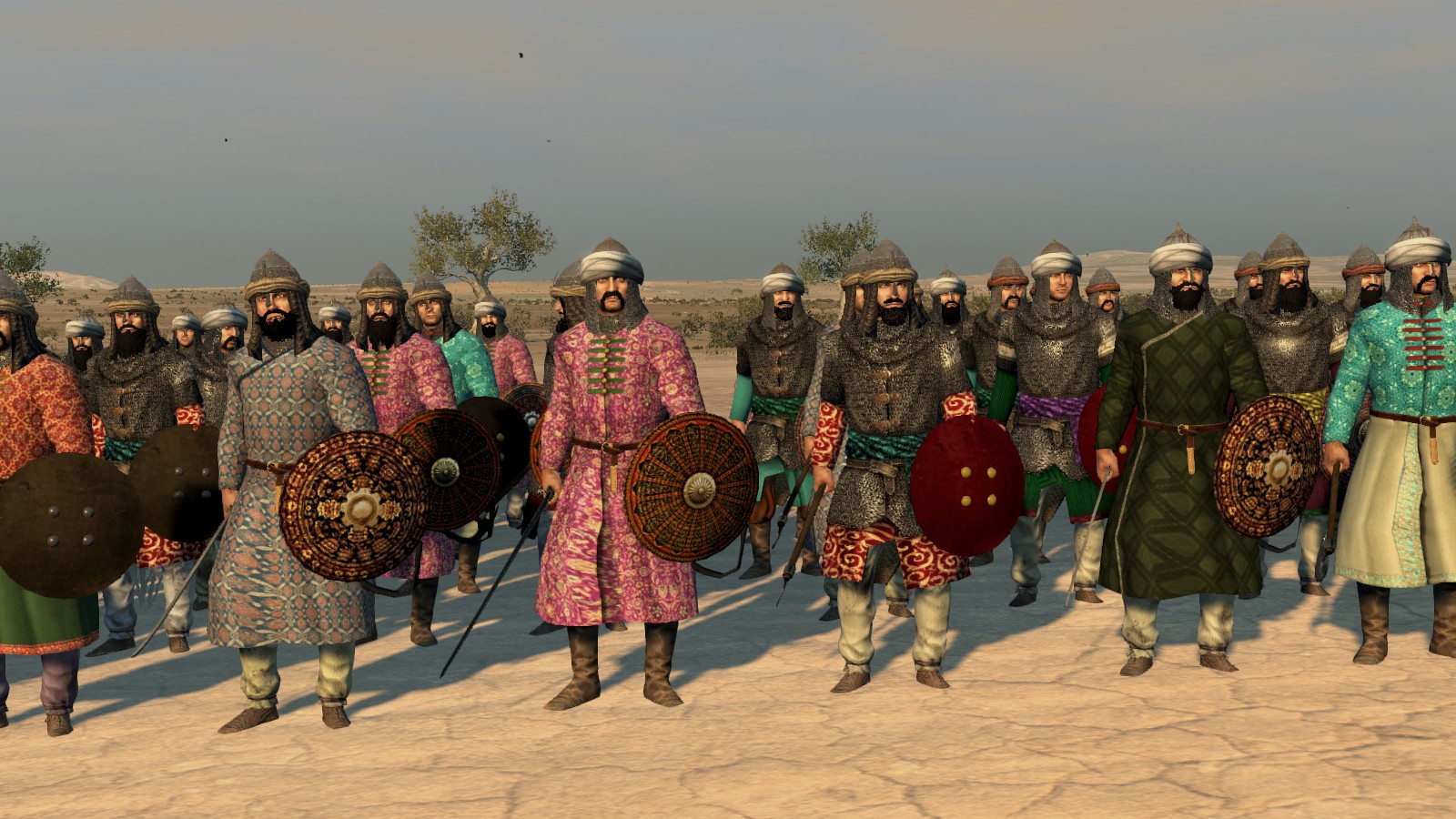
The Delhi sultanate found itself ruling over a largely foreign population in both ethnicity and religion, but found in Afghans a large, reliable pool of manpower for their infantry. Migrations of Afghans into Hindustan accelerated following the Mongol conquest of that region and Muslim rulers in India were quite eager to find place for Muslims whose affinity was mostly to these Afghan or Turkish nobles. A great number of Afghans were hired as mercenaries and were an important part in maintaining Afghan (or Pathan as they would later be called) or Persianate dynasties across India.
Paik Spearmen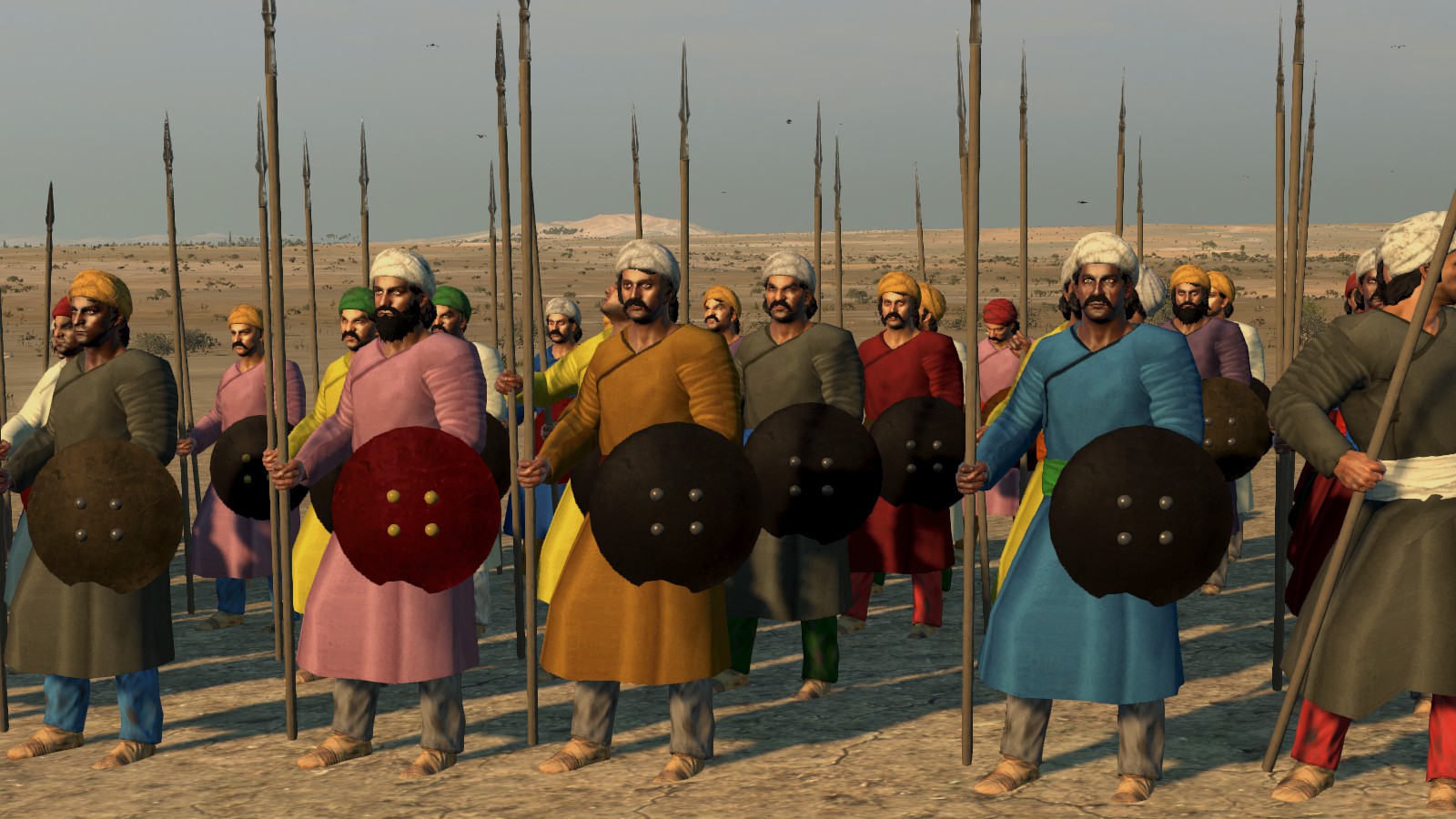
Paik is the generic term for infantry in Muslim India. Largely made up of Indians, their organization and role are a heirloom from the Rajput dynasties of prior centuries. Peasants would be allowed to exploit land from feudal lords in exchange for service, namely military. The local nobles would then raise these semi-professional soldiers for war when called to arms by the Rajput clans, which continued under Muslim rulers who kept the status quo in exchange for loyalty and tax revenue. Paiks would typically not wear armour, save for a shield.
Paiks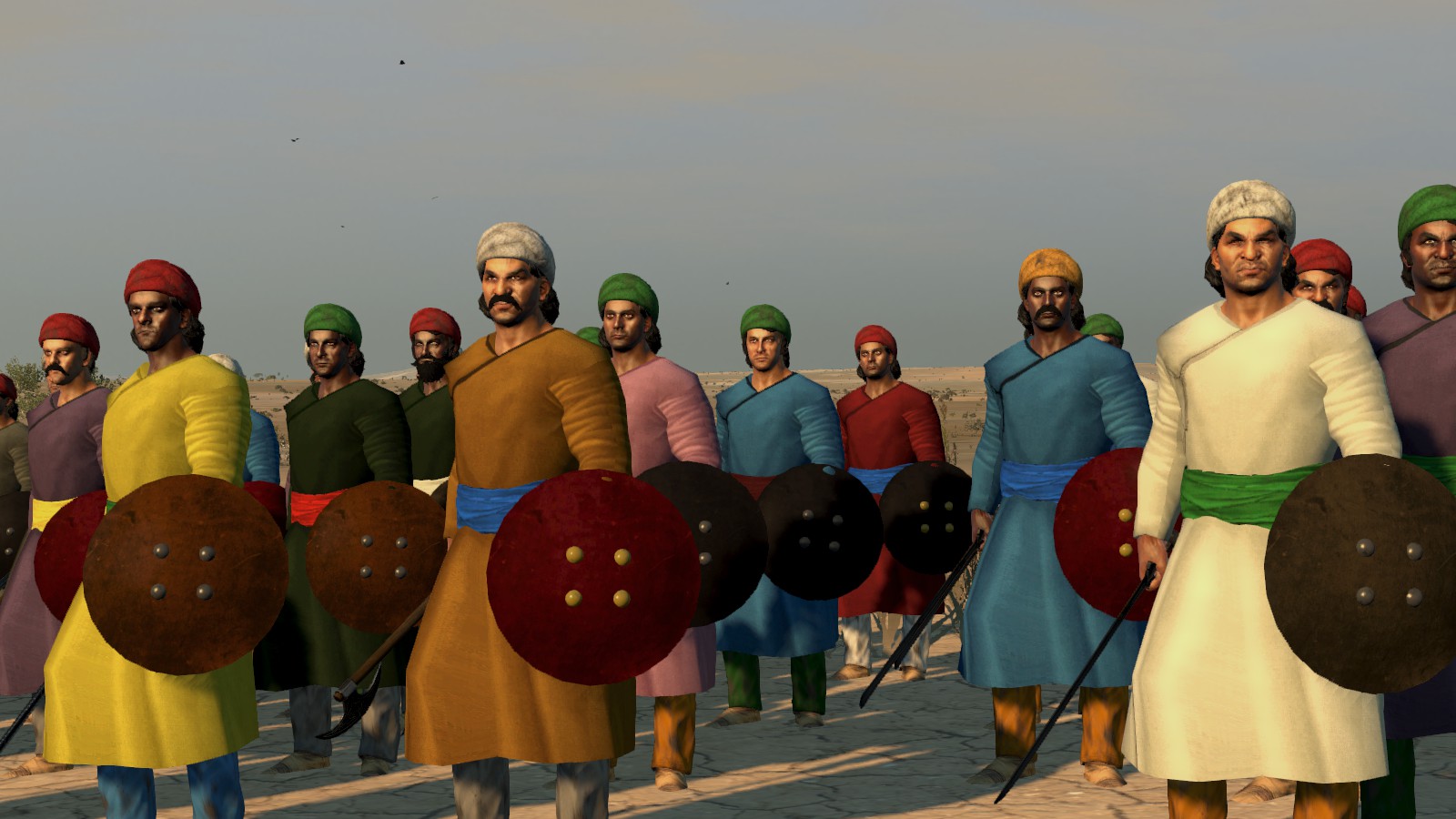
Paik is the generic term for infantry in Muslim India. Largely made up of Indians, their organization and role are a heirloom from the Rajput dynasties of prior centuries. Peasants would be allowed to exploit land from feudal lords in exchange for service, namely military. The local nobles would then raise these semi-professional soldiers for war when called to arms by the Rajput clans, which continued under Muslim rulers who kept the status quo in exchange for loyalty and tax revenue. Paiks would typically not wear armour, save for a shield.
Rajputs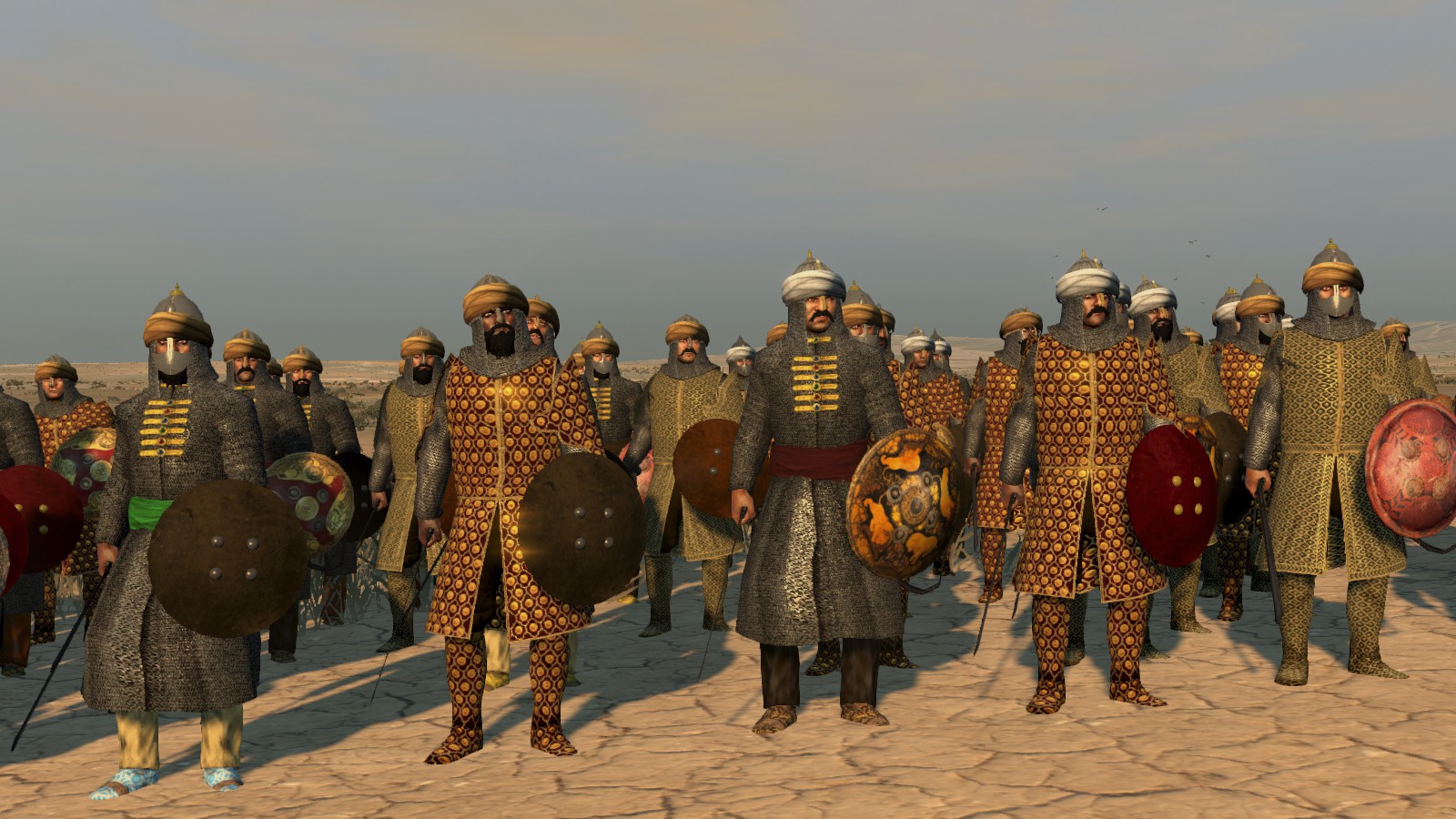
The greatest warriors of India, the Rajputs were the equivalent of European knights, ruling over large amounts of land as some kind of feudal lords. They were well-trained in combat and thought of it as a chivalrous endeavour, and with their heavy armour, could fight any soldier once in melee combat. Numerous Rajput kingdoms fell to Muslim invaders, but they were never completely conquered and successfully kept fended off enemies in the region of Mewar until its conquest by the Mughals under Akhbar. A fair few Rajput clans submitted to the Sultans of Delhi, but it was not uncommon for Rajputs to charge out to certain death rather than sue for peace, a practice called Saka.
Royal Paiks
In an effort to prevent a coup or assassination, Ala ad-Din Khilji recruited a personal guard of Hindu soldiers who would have no loyalty to nobles. The prestige of the guard attracted more native nobility into the Delhi court. and their loyalty was proven quickly as they thwarted an assassination attempt during a hunt early in his reign.
Skirmisher Cavalry Units :
Sawar-i Barahna wa-Jarida
The Sawar-i Barahna wa-Jarida ('naked and battle-ready horsemen') are one of the named units from the Ghurid military. Consisting of picked light horse archers from Turkish tribes in Afghanistan, namely the Khalaj, their role in the crushing victory of the Ghurids in Tara'in is to be noted. Split into 4 groups of up to 10 000 riders, the horse archers of Mu'izz ad-Din peppered the Indians for a full day, completely demoralizing and breaking the cohesion of Privthiraj Chauhan's troops, before they joined the charge of the main body of heavy cavalry in a single charge, routing the much larger Indian force in a single sweep.
Khwud-aspas
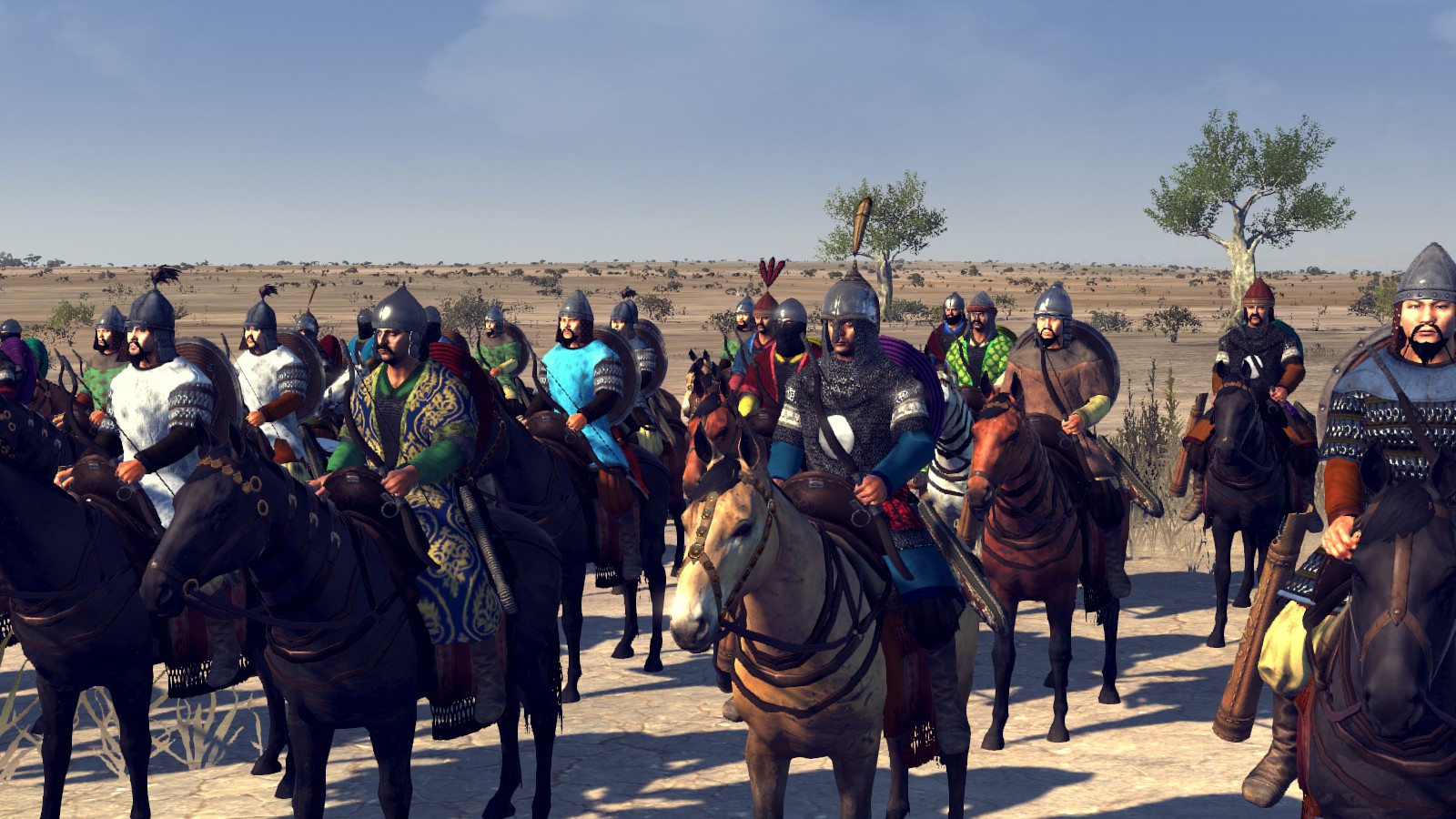
Khwud-aspas were irregular cavalrymen that joined the mustered armies of the Sultanate, joining with their own mounts (as the name indicates, literally meaning 'with own horse'). Notable among the Sultanate forces were Mongol and Turkish adventurers looking for wealth in warfare.
Jagirdars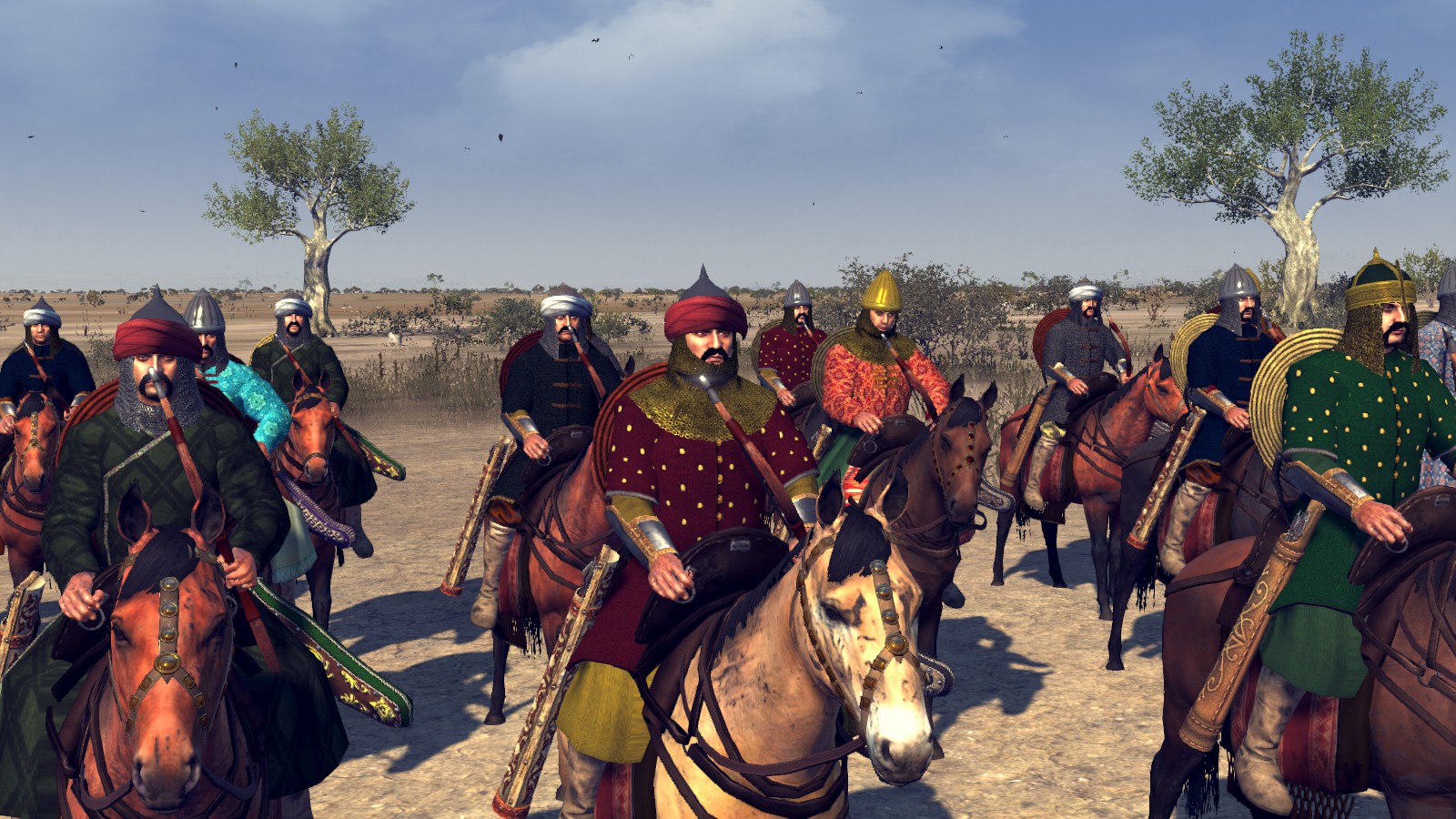
The Jagir is the North Indian implementation of the Iqta system prevalent across the Muslim world. Jagirdars were expected to maintain and supply troops along with joining the Sultanate army. One important change during the 14th century was that the power of the nobility was heavily curbed by the central power in Delhi, namely preventing them from amassing large personal armies.
Melee/Shock Cavalry Units :
Camel Cavalry
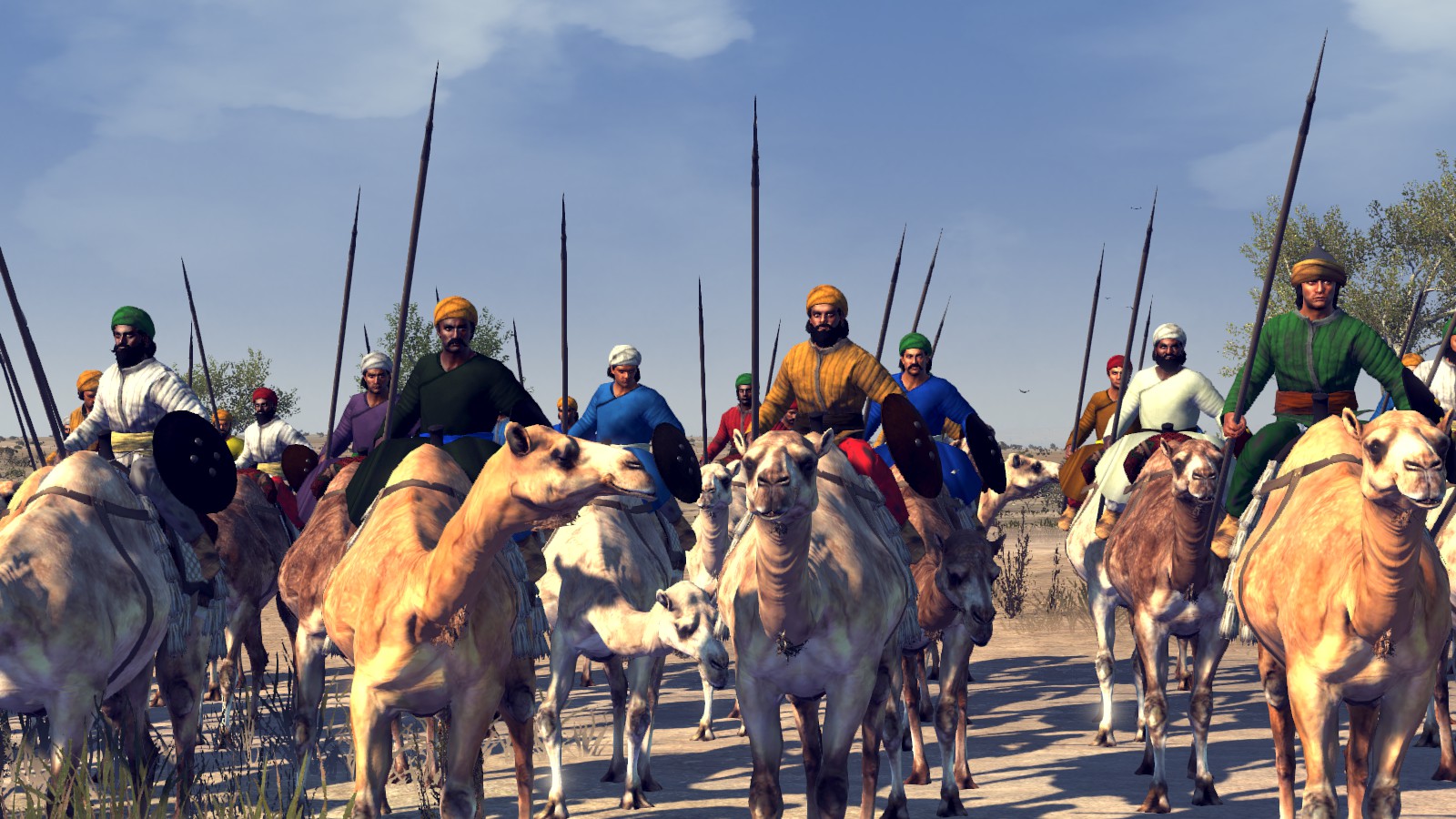
Camels form part of the Indian landscape, most notably in modern-day Rajasthan. Camel-riding soldiers have been part of Indian military history for some time (and is still used to this day) due to their incredible endurance and ability as beasts of burden.
Khalaj Cavalry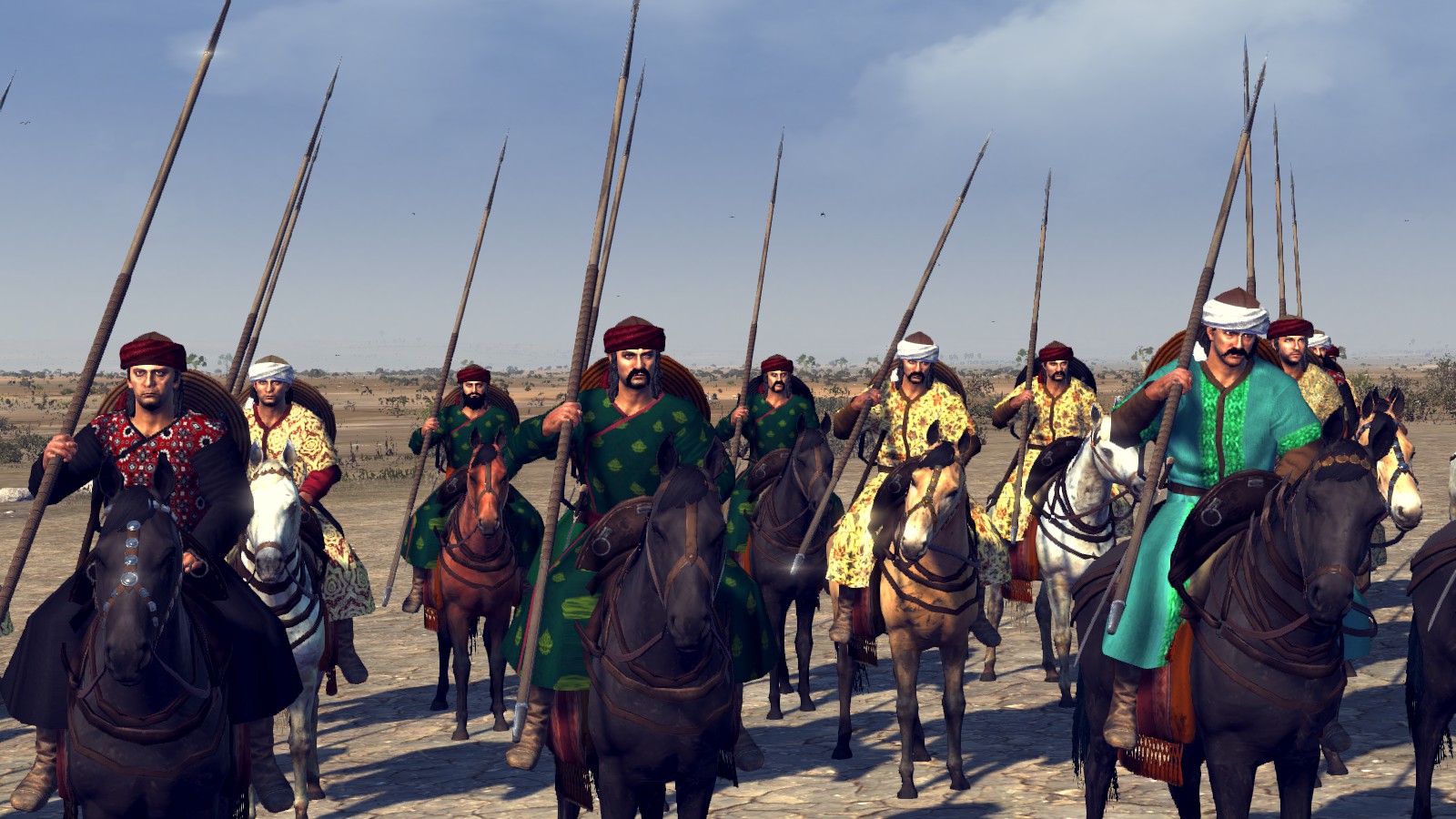
The Khalaj are a tribe of Turks that migrated from Central Asia and absorbed into Afghan tribal society. They still excel at the same things as typical Turkish tribesmen do, such as mounted combat and archery. Khalaj became an important source of manpower for the Ghurids, and later Sultans in Delhi, being reliable soldiers and eager for warfare. According to an account, when Mu'izz ad-Din was badly injured in the Ghurid defeat at Tara'in in 1191, it was a Khalaj who jumped from his mount to keep Mu'izz ad-Din from falling from his.
Ashraf Sawaran
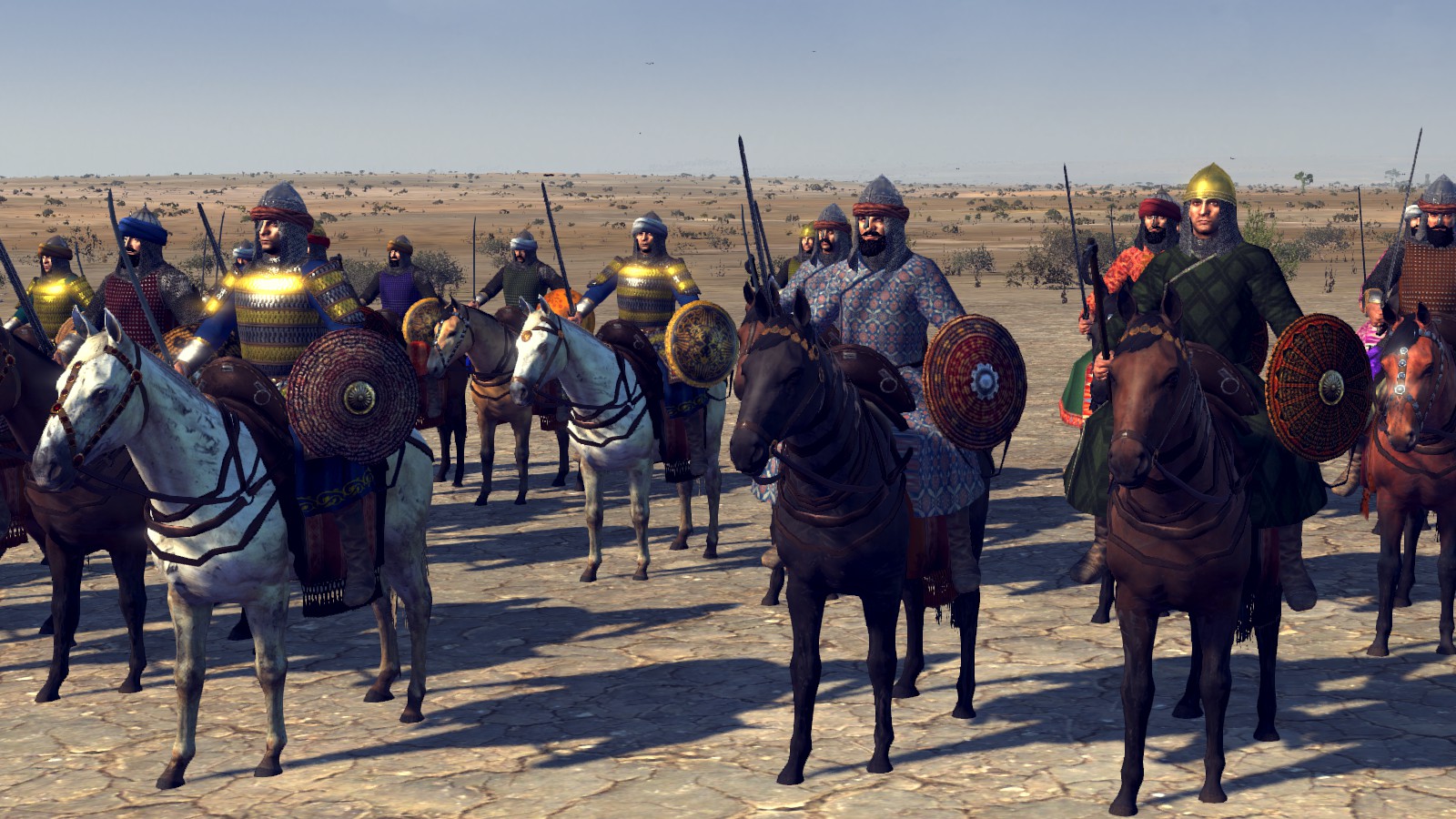
Migration from Muslims into India was heavily favoured by all Sultanates, at which point where a large number of Tajiks, Persians, Arabs, Turks and most importantly Afghans formed the majority of the nobility, the 'ashraf'. Migration of Afghan clans and nobles continued for years after the initial conquest and took a commanding presence amongst the upper caste of society, firmly implanting themselves in rulership, as later dynasties such as the Lodi dynasty and the Sur Empire. The equipment of such individuals largely followed the Persian fashion and was either manufactured in that style or was imported directly from Iran.
Do-aspas
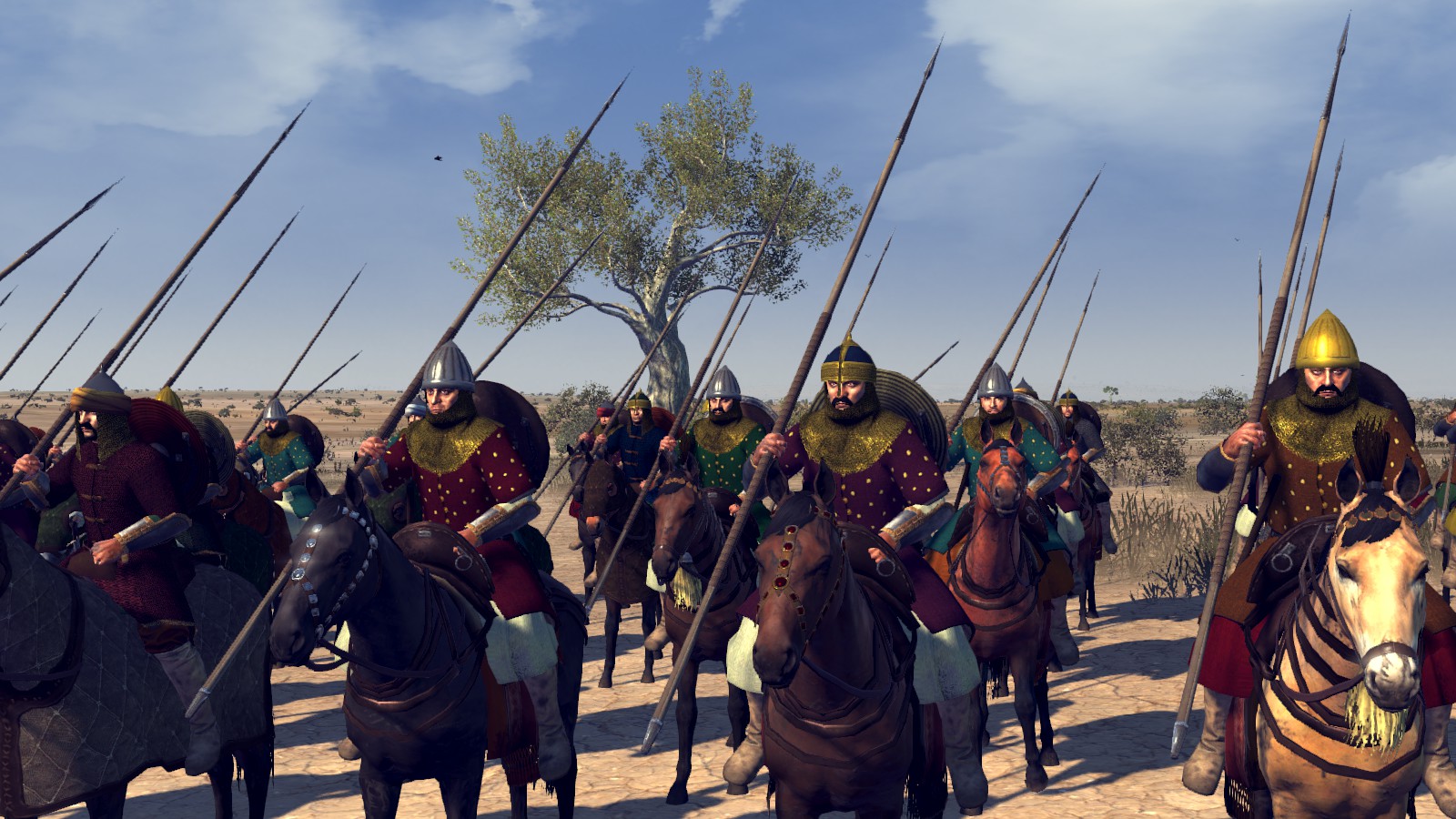
A Do-aspa (two horse) is one of the named ranks of the professional soldiers in the Khilji and Tughluq army. Their pay was significantly lower than the Murattabs, but they were provided one mount from the Ariz-i-Mumalik along with weapons and armour. Barani suggests that their horses were generally not heavily armoured, but he also mentions that, with regards to the Indian success against Mongols, a Do-aspa could 'bring in ten Mongols yoked together'.
Murattabs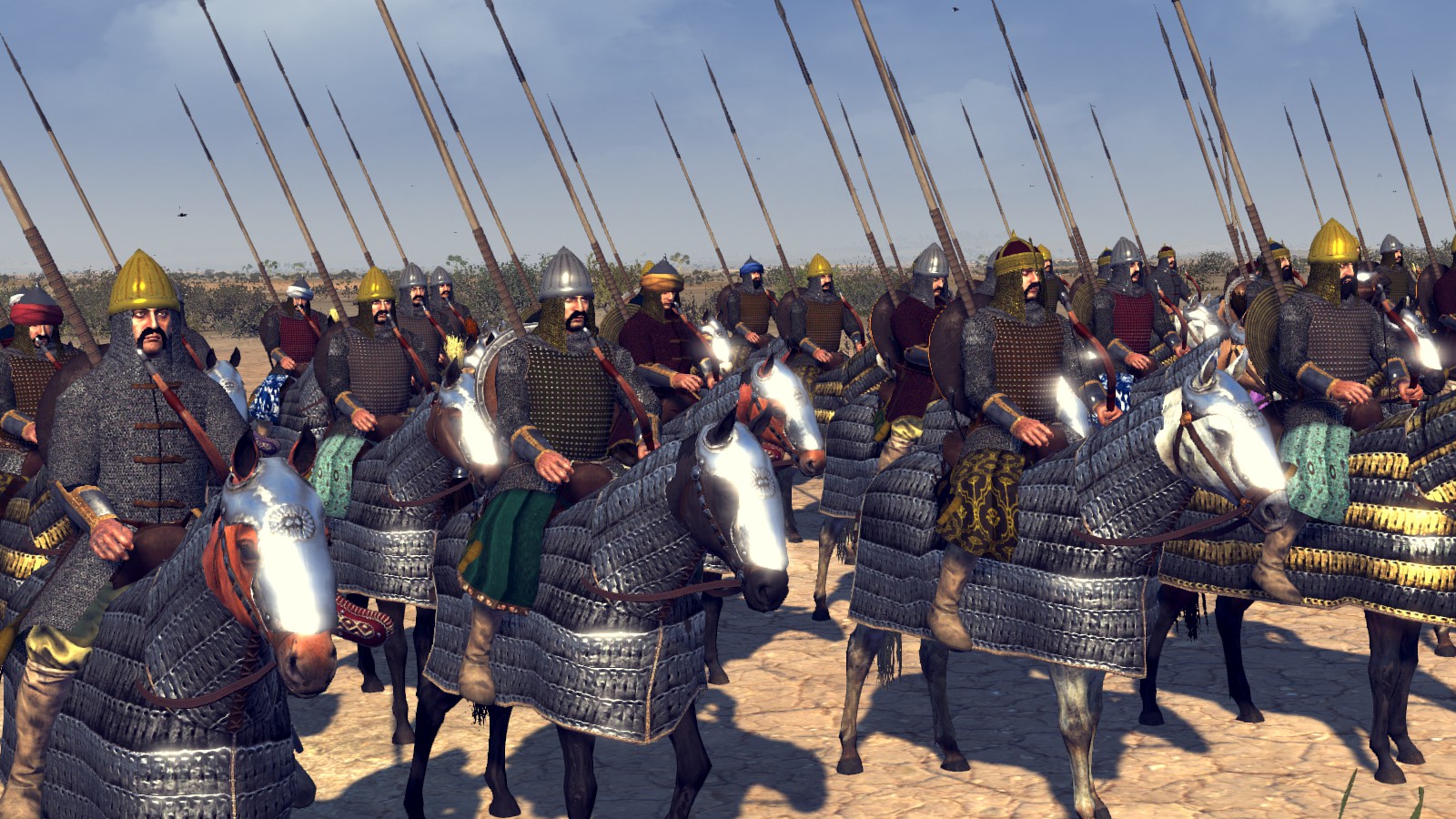
From the account of Barani, it is understood that the Murattab is the top soldier in the Khilji and Tughluq army. They were expected to provide their own mounts due to their large salary, horses Barani mentions being heavily barded. They were supposedly armed enough for 2 men and while the Do-aspa could 'bring in ten Mongols yoked together', a single Murattab 'drove a hundred before him'.
Zamindars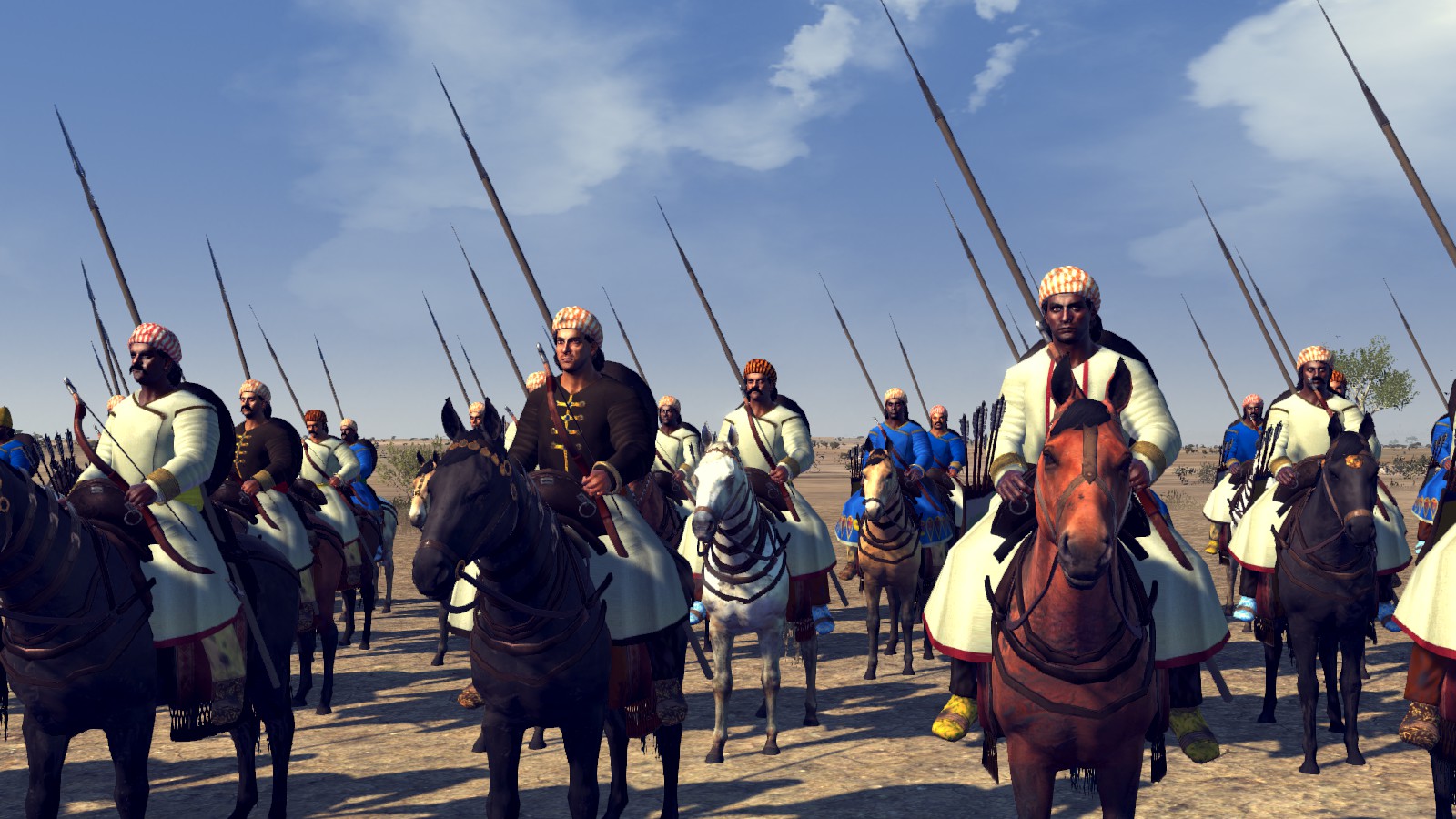
Zamindars were the land owning class of India. A hold-over from pre-Sultanate India, Zamindars were wealthy nobles who would lend their land for peasants to exploit. The increasing Turkish influence on India soldiers is displayed in the Hall of Heroes of Jodhpur, where wealthy cavalrymen are shown with missile weapons on horseback, along with the traditional spear.
Gunpowder units :
Tufangchiyan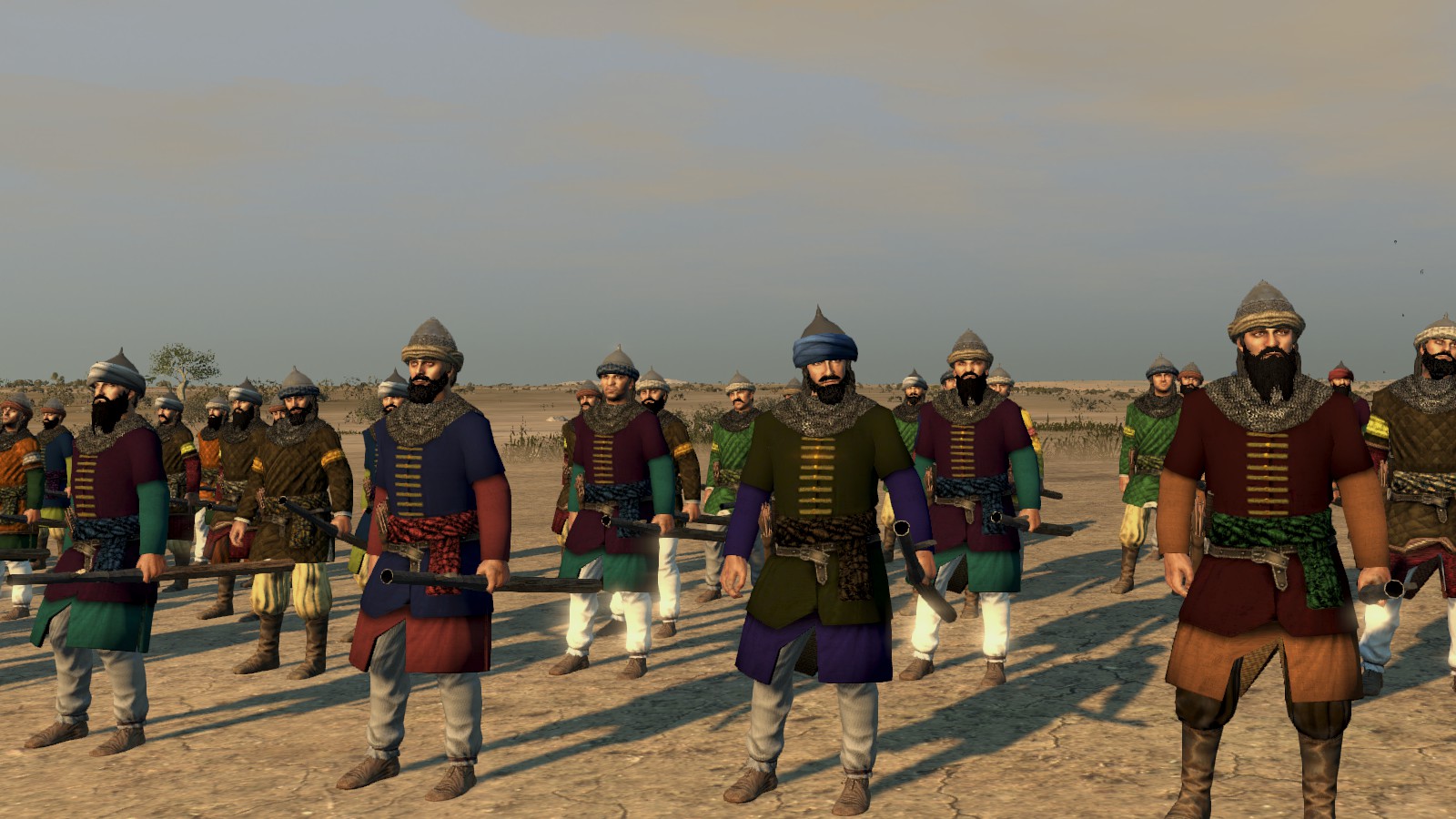
With the spread of gunpowder weapons, handguns were implemented into the Muslim armies of India at a gradual pace. Ala ad-Din Khilji is said to be the first to make use of such weapons in war.
Elephants :
War Elephants (Naphta)
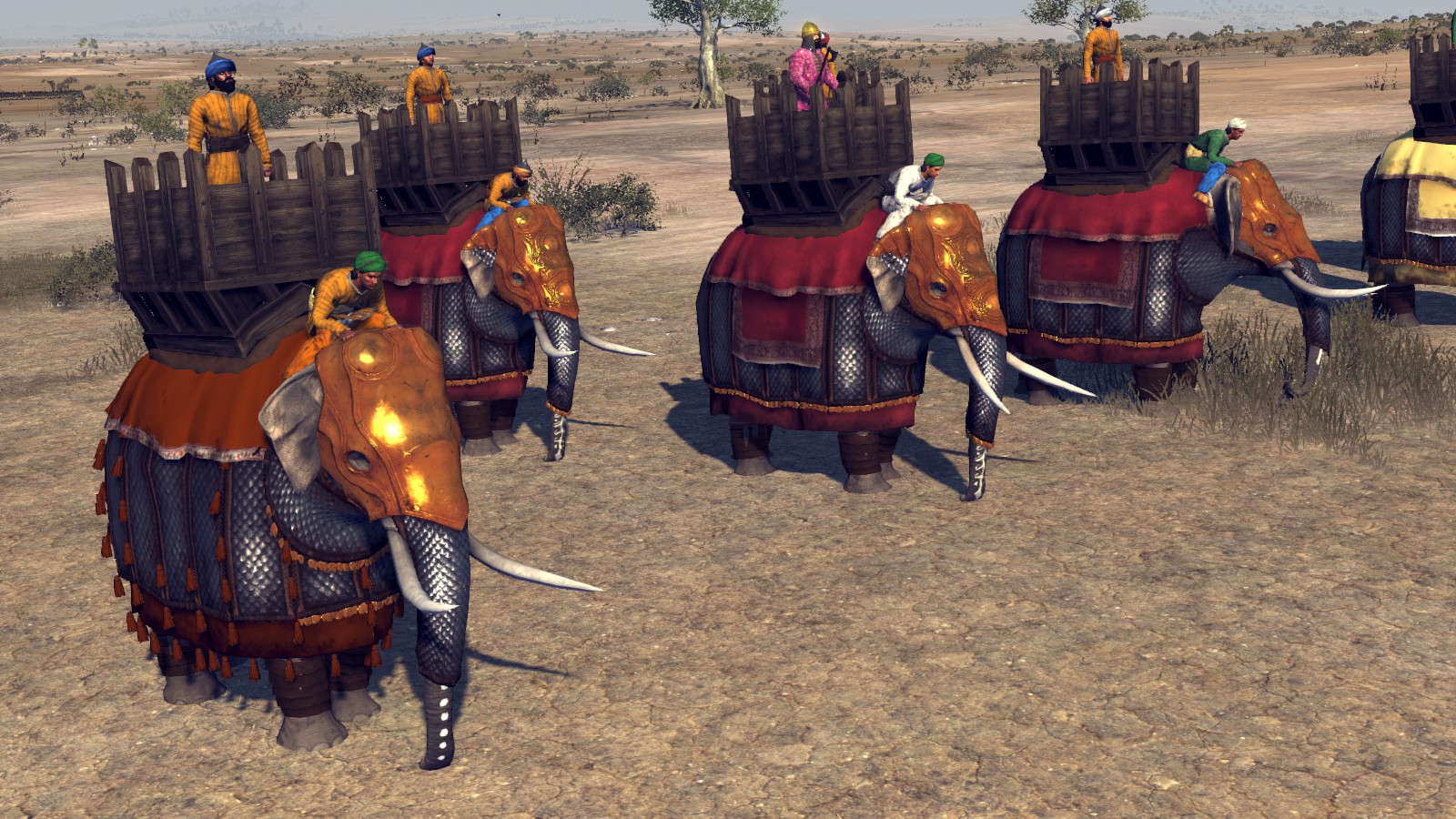
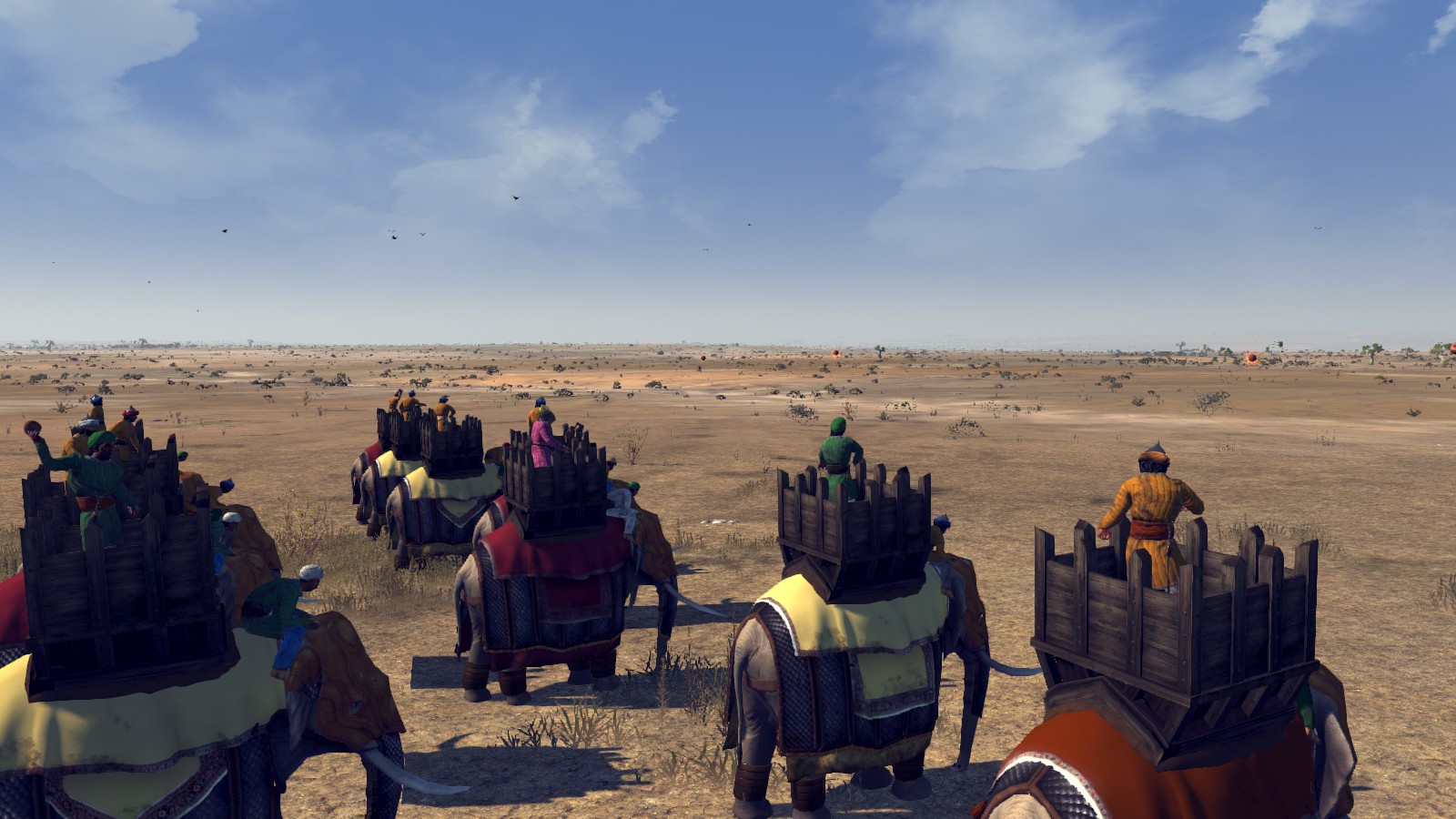
Elephants were one of the staples of Indian militaries and the Muslim dynasties quickly adopted them. With armour, the beasts were said to look like 'mountains of metal'. From the howdahs on the elephant back, different kind of weapons were used, such as bows, crossbows, rockets and grenades.
LATE ERA
General units :
Bahlul Kahn Lodi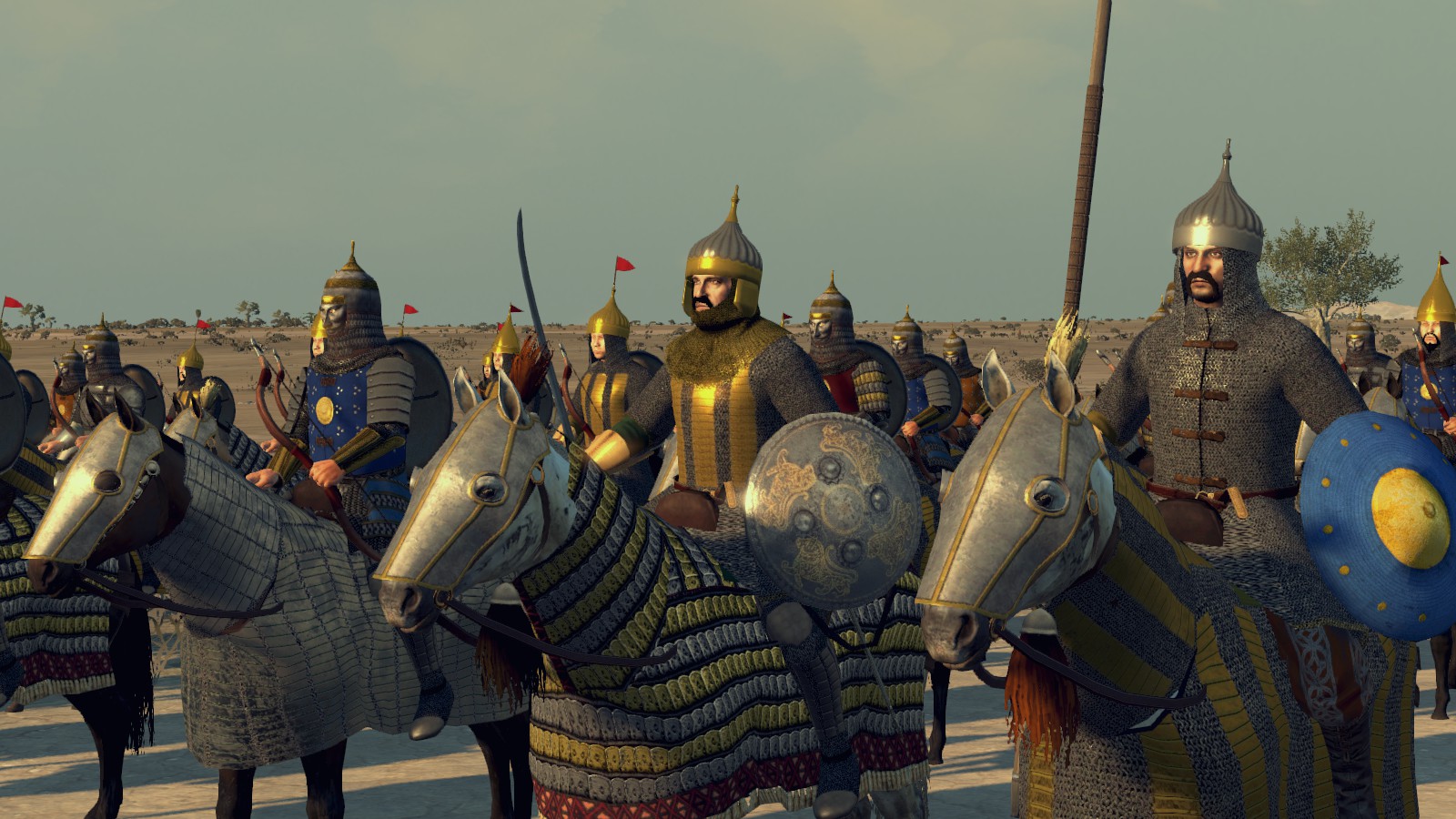
Bahlul Khan Lodi was an Afghan ruler in Northern India who took over the throne after the abdication of the last ruler of the weak Sayyid dynasty. During his long reign, he managed to greatly strengthen the power of the rump state in Delhi, conquering Jaunpur and turning the Delhi sultanate back into a major regional power. A great admirer of Mongol warriors, he settled many princes and kept a large retinue of Mongol soldiers called the Khasa Khali, on top of recruiting several thousand into the royal army.
Sipahsalar and Jandars (late)

The Sipahsalar was a high ranking officer and lead large number of soldiers into battle. Battlefield commanders were traditionaly flanked by bodyguards ('jandars').
Skirmisher Infantry Units :
Zupin Javelinmen (late)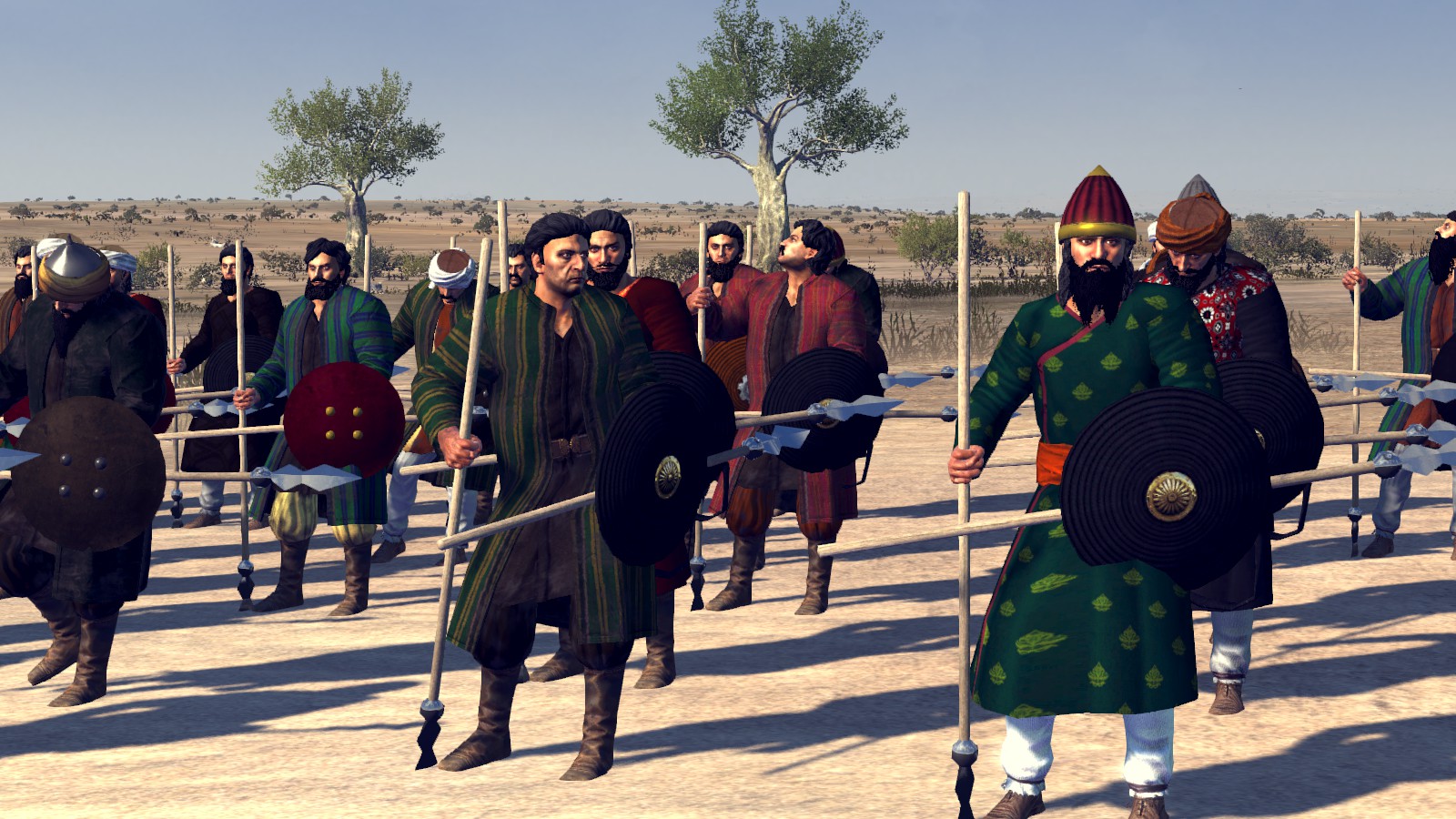
An interesting side-effect of the Ghaznavid conquest of Iran was the spread of military fashion. The zupin, a shortspear that also functioned as a javelin, was the traditional weapon of the people of Daylam, a mountainous region of North-Western Iran. The Daylami would loan out their services, finding work across the Muslim world, and the zupin would be used from Egypt to India. Zupin javelinmen are noted as being a part of the early military of the Ghurids, generally placed on the left wing.
Afghan Archers (late)
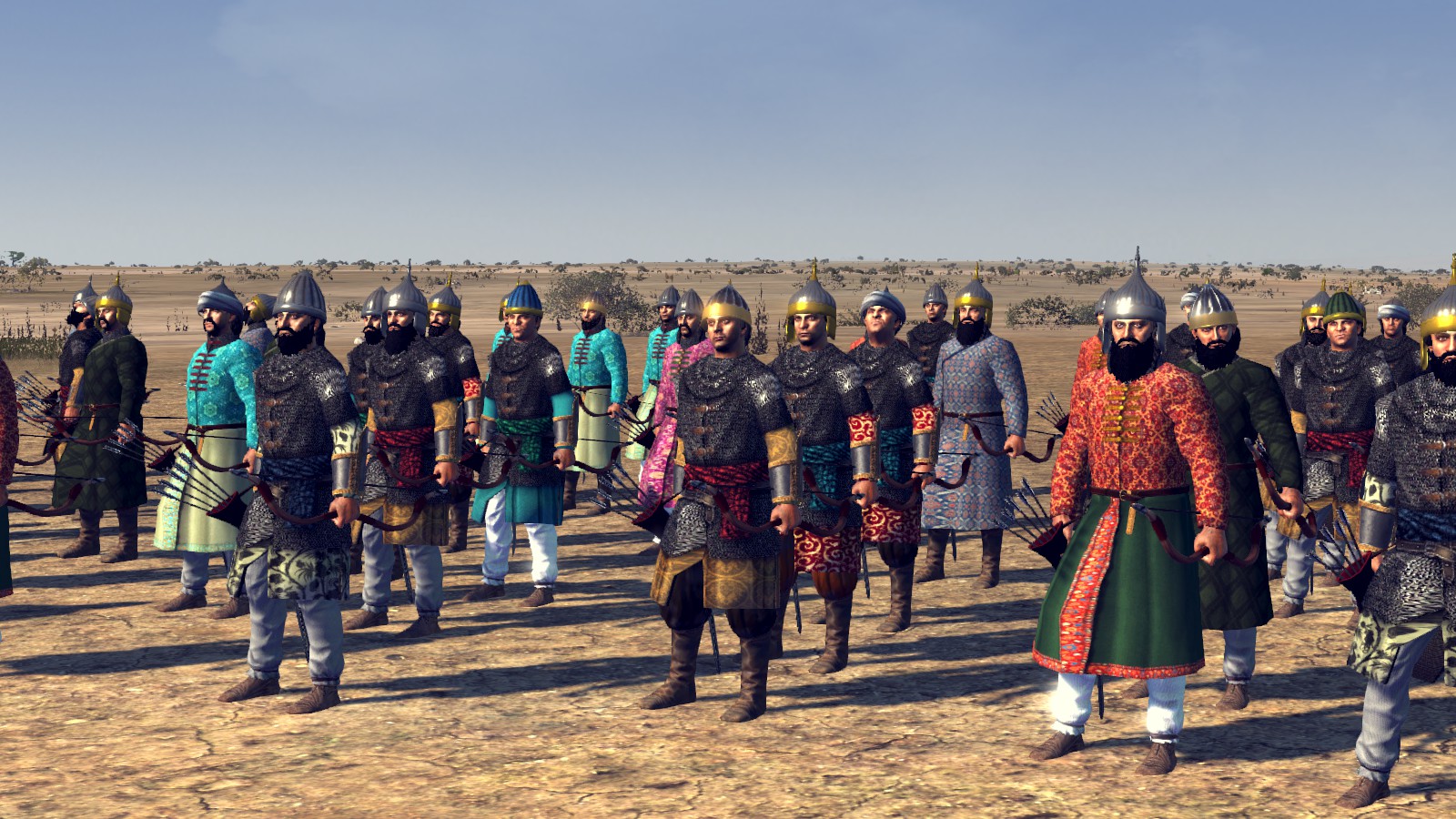
Archers formed the largest part of Muslim missile troops in the medieval period. The Ghurid archers were tactically placed behind both the first row of heavy spearmen and the reserve of heavy infantry. The Delhi sultanate found itself ruling over a largely foreign population in both ethnicity and religion, but found in Afghans a large, reliable pool of manpower for their infantry. Migrations of Afghans into Hindustan accelerated following the Mongol conquest of that region and Muslim rulers in India were quite eager to find place for Muslims whose affinity was mostly to these Afghan or Turkish nobles.
Nawak Infantry (late)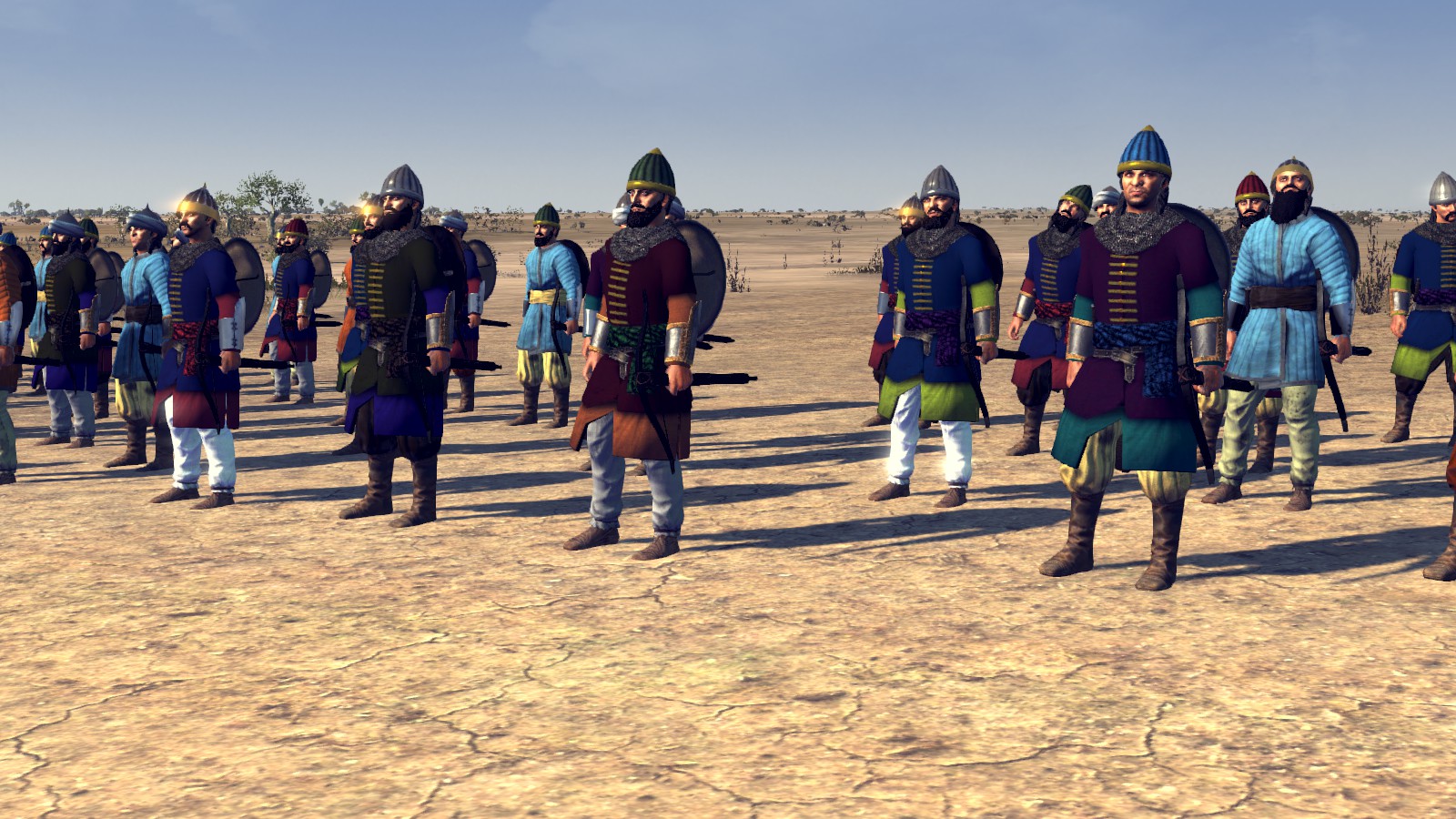
When discussing reasons for the success of Muslims in India during the Ghurid period, one of the main military technology development that the Muslims had over the Indian kingdoms was the crossbow, 'nawak'. The piercing bolts gave the Muslims the ability to effectively pierce the heavy armour of the Indians while the latter had no such answer. The Delhi sultanate found itself ruling over a largely foreign population in both ethnicity and religion, but found in Afghans a large, reliable pool of manpower for their infantry. Migrations of Afghans into Hindustan accelerated following the Mongol conquest of that region and Muslim rulers in India were quite eager to find place for Muslims whose affinity was mostly to these Afghan or Turkish nobles.
Naphta Throwers (late)

A common weapon in medieval Muslim armies was Naphta grenades. The Sultans in Delhi, most notably, kept a steady supply, and even found ingenious uses for it, such as throwing it down from an elephant-mounted howdah.
Dhanuks (late)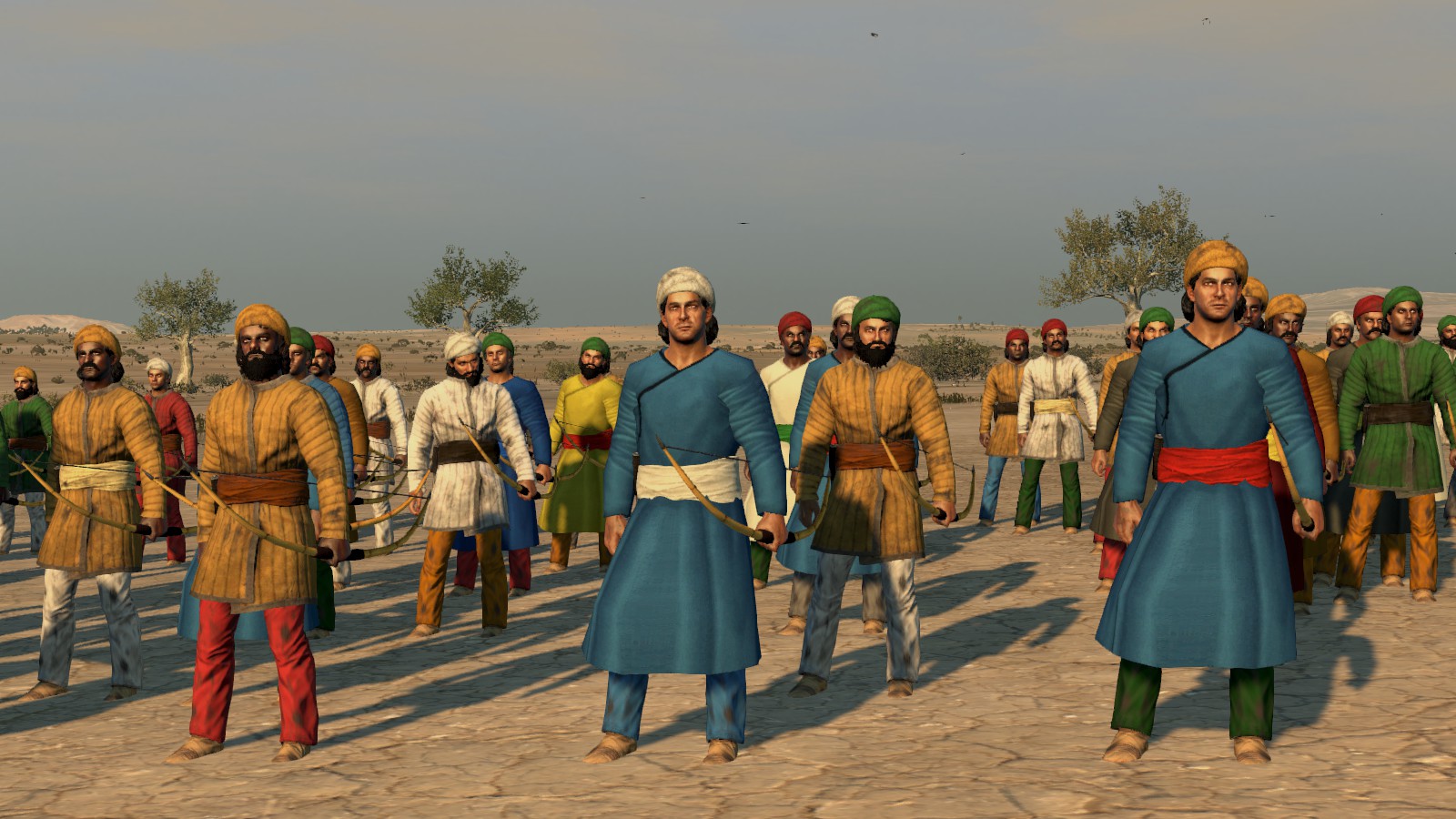
Dhanuks ('archers') form a significant part of the indian infantry. They are armed with bamboo or cane self bows, who have excellent power in closer ranges and are better fit to the hot and humid climate of India. As with the vast majority of indian soldiers, they wear no real armour.
Melee Infantry Units :
Tajik Levy (late)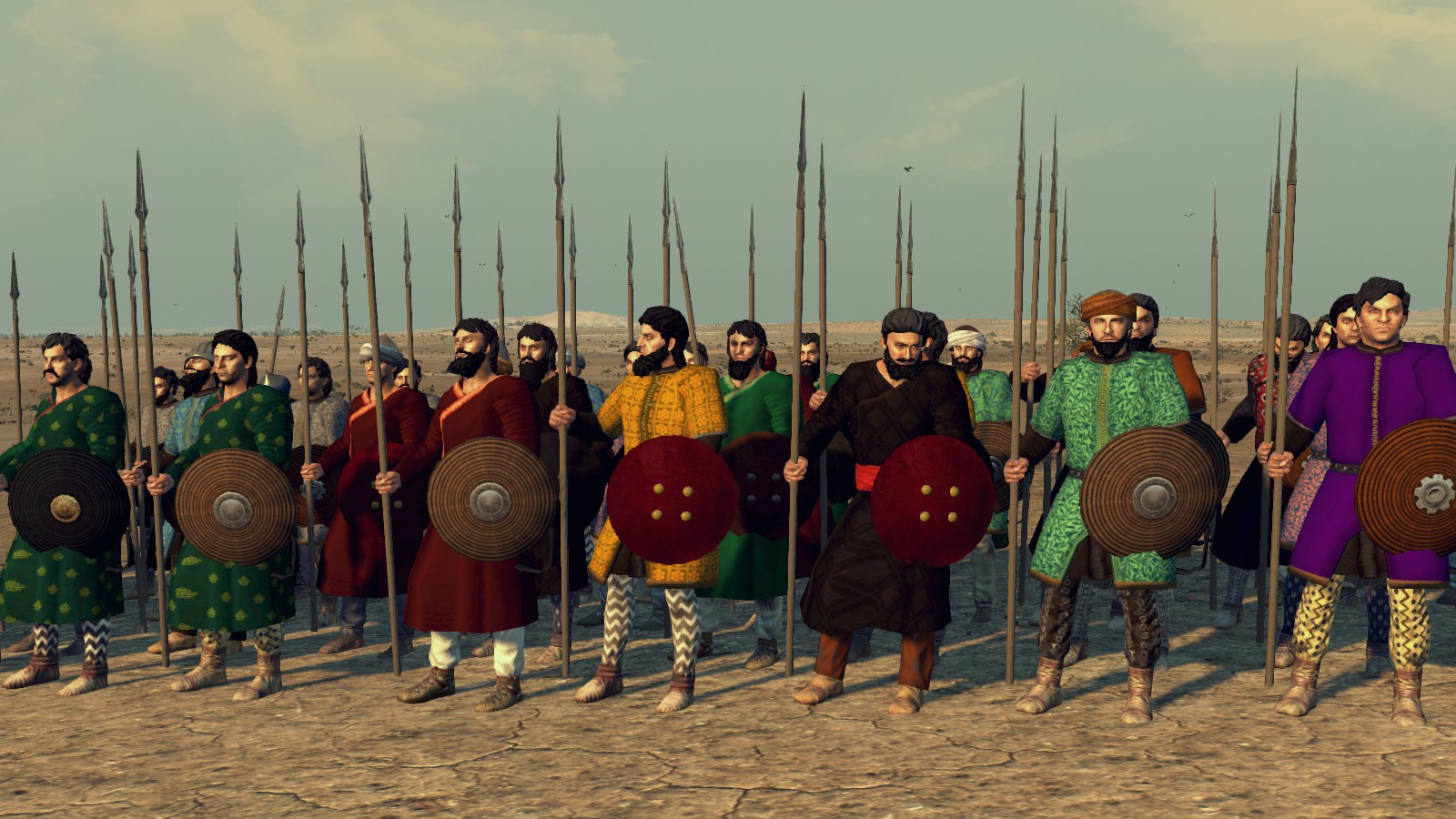
Tajiks were the Iranian-speaking settled population in Afghanistan (amongst other places, such as Khorasan). While best known for their contributions as administrators and scholars, tajik volunteers and levies played a certain role in military affairs. A fair number of Tajiks migrated to India following the Ghurid conquests and even more following the coming of the Mongols.
Afghan Spearmen (late)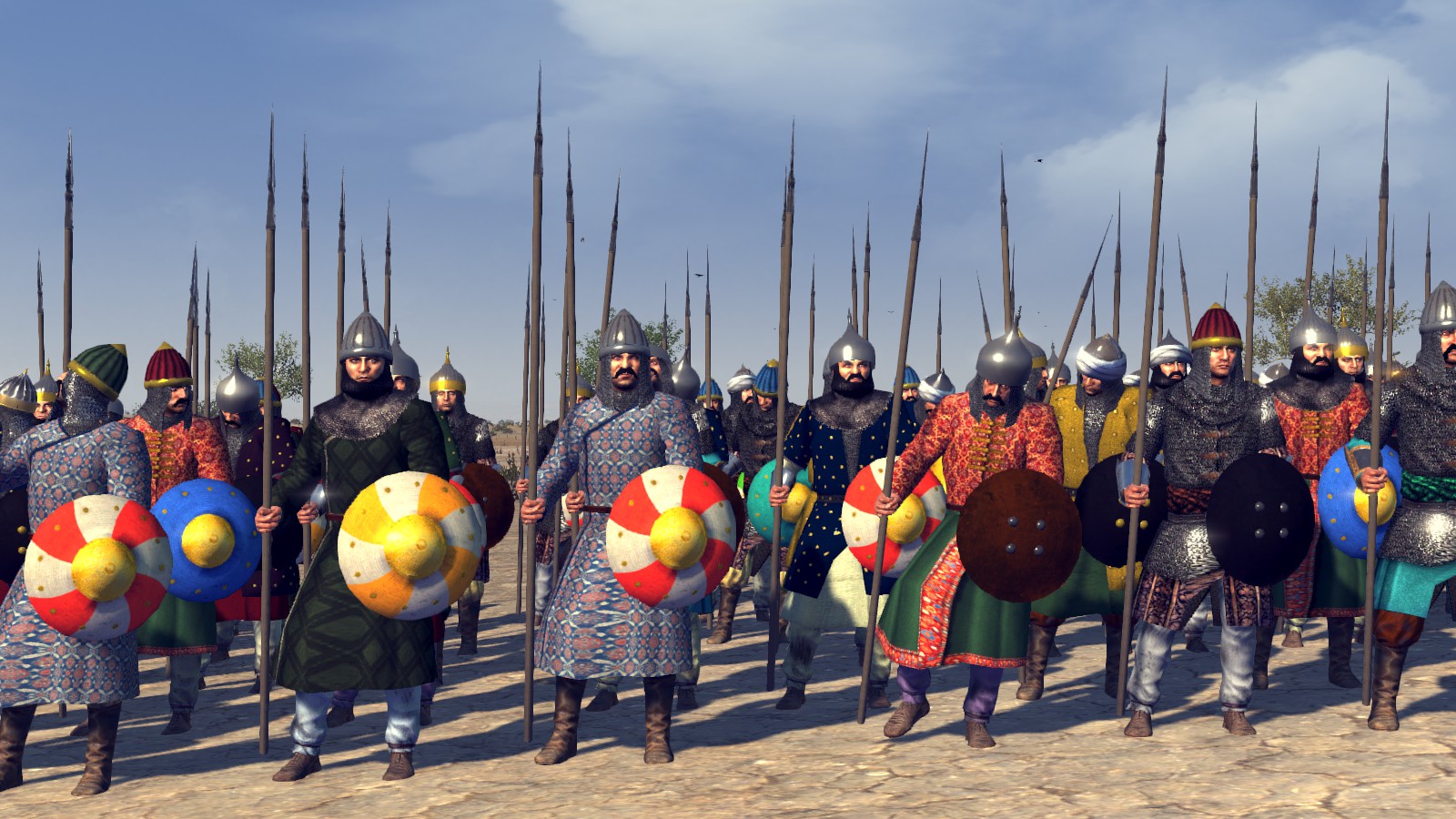
Afghans, from various backgrounds, were the main source of infantry for the Ghurid military. From volunteers (muttawwi'a) to urban militias to tribesmen, the Afghans could generally count on quality armour, as the region's rich deposits in iron allowed them to have a thriving industry, very well known across the Muslim world for their high-quality mail and lamellar armours. The Delhi sultanate found itself ruling over a largely foreign population in both ethnicity and religion, but found in Afghans a large, reliable pool of manpower for their infantry. Migrations of Afghans into Hindustan accelerated following the Mongol conquest of that region and Muslim rulers in India were quite eager to find place for Muslims whose affinity was mostly to these Afghan or Turkish nobles.
Afghan Tribesmen (late)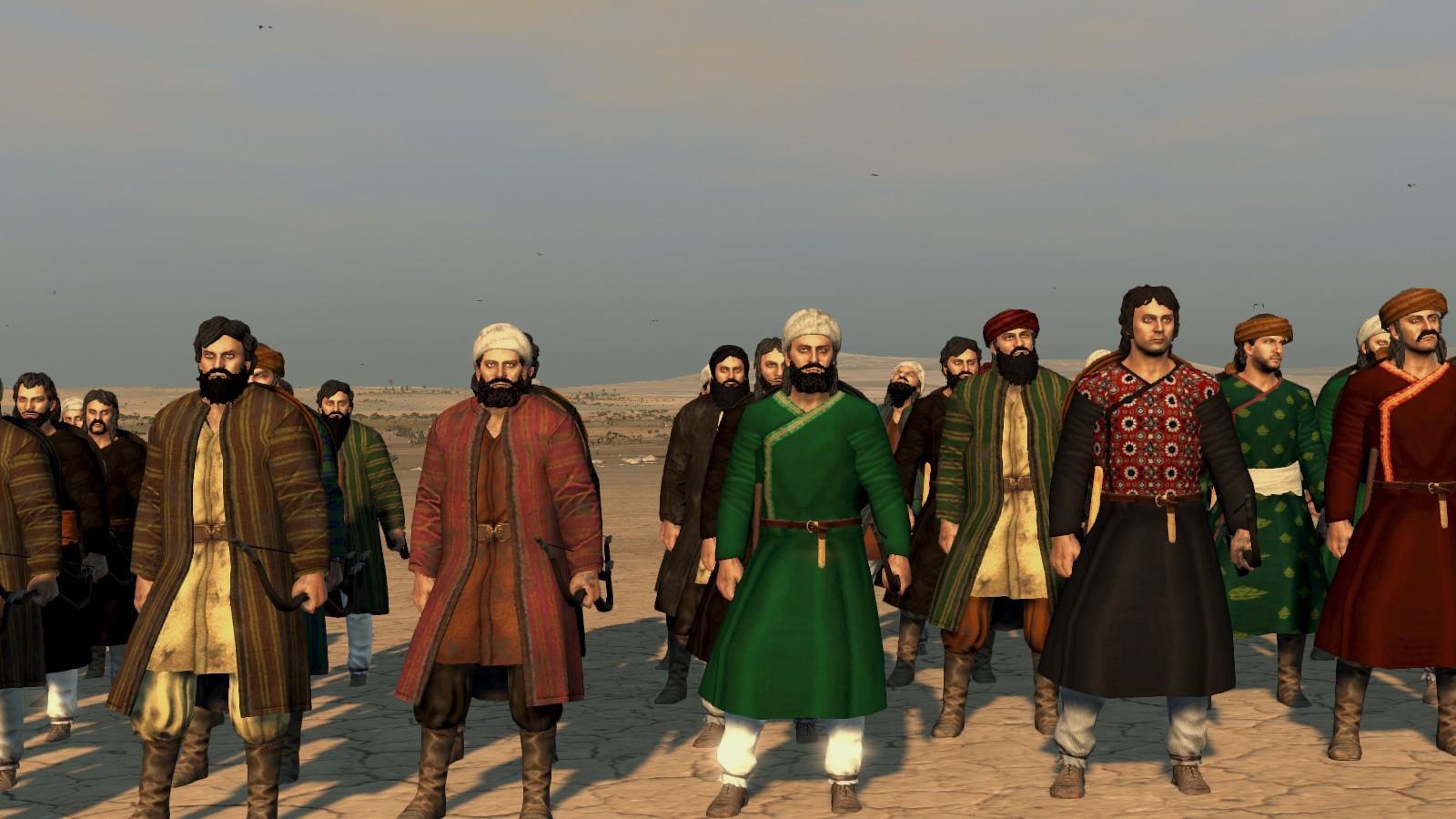
The Ghurid dynasty built their kingdom first and foremost through the military might of the mountain tribes. Fighting as infantrymen, the Ghori tribal soldiers were trained for fighting by their lifestyle, including the occasional raid. The Delhi sultanate found itself ruling over a largely foreign population in both ethnicity and religion, but found in Afghans a large, reliable pool of manpower for their infantry. Migrations of Afghans into Hindustan accelerated following the Mongol conquest of that region and Muslim rulers in India were quite eager to find place for Muslims whose affinity was mostly to these Afghan or Turkish nobles.
Afghan Infantry (late)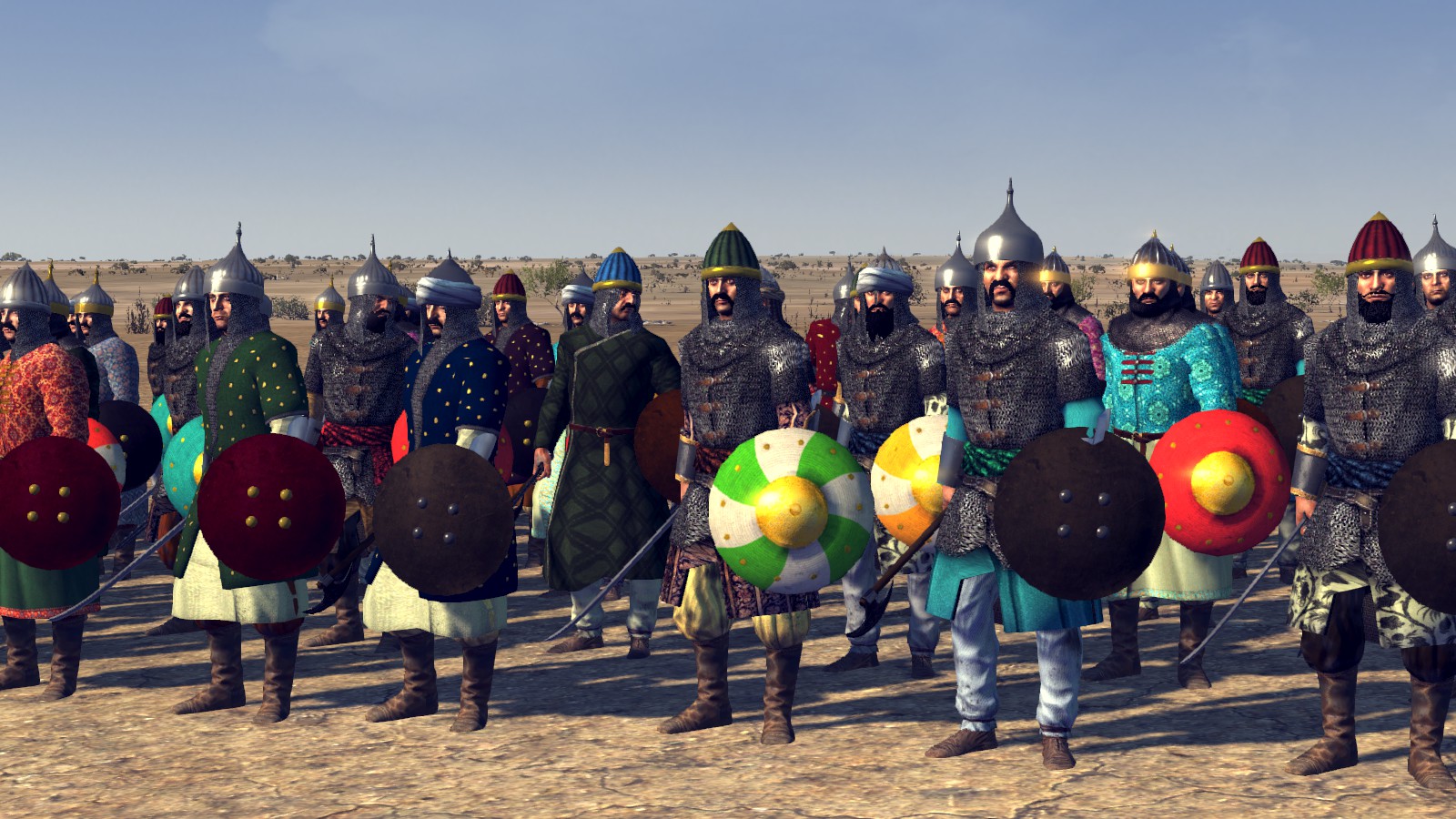
The Delhi sultanate found itself ruling over a largely foreign population in both ethnicity and religion, but found in Afghans a large, reliable pool of manpower for their infantry. Migrations of Afghans into Hindustan accelerated following the Mongol conquest of that region and Muslim rulers in India were quite eager to find place for Muslims whose affinity was mostly to these Afghan or Turkish nobles. A great number of Afghans were hired as mercenaries and were an important part in maintaining Afghan (or Pathan as they would later be called) or Persianate dynasties across India.
Paik Spearmen (late)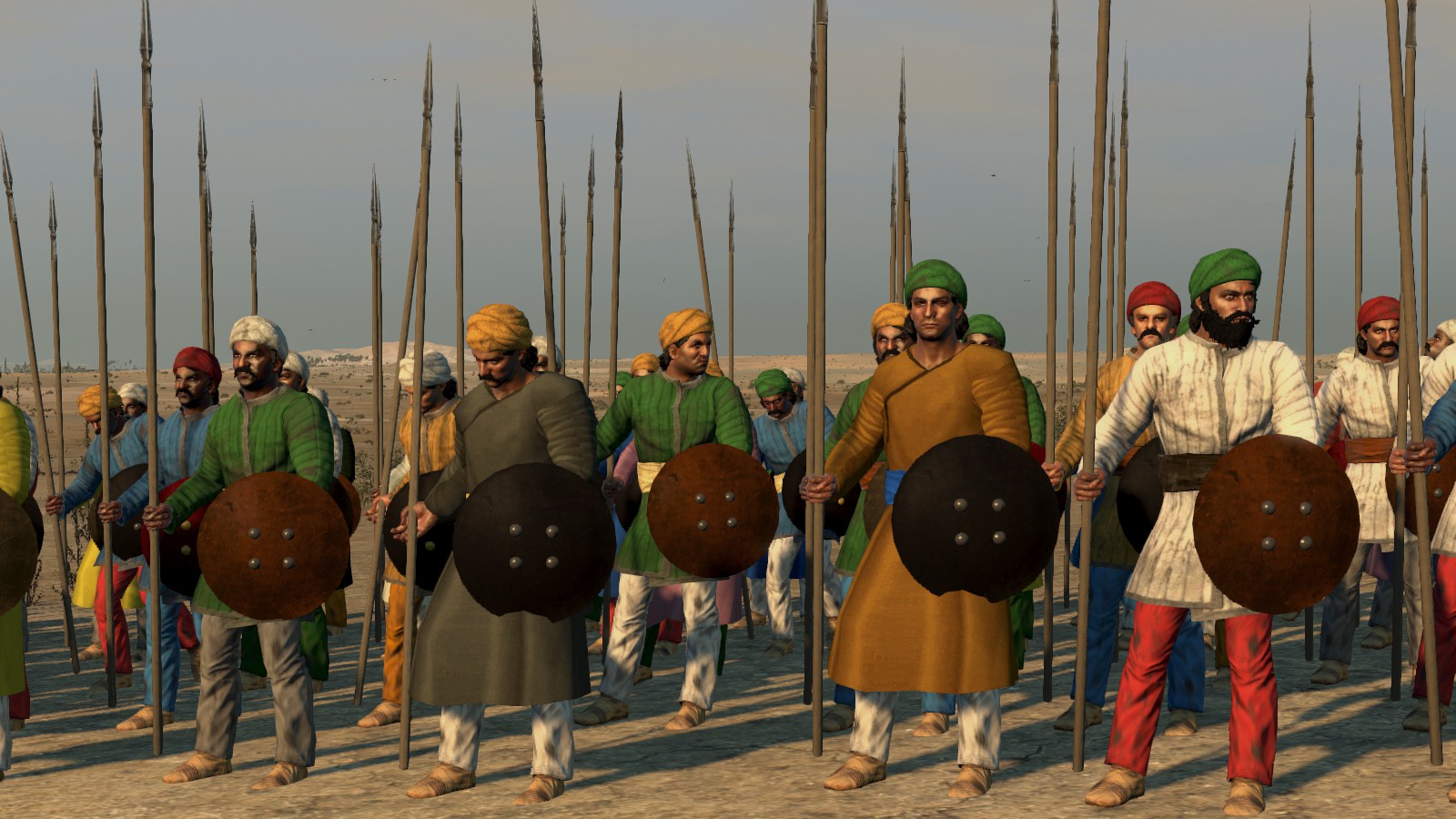
Paik is the generic term for infantry in Muslim India. Largely made up of Indians, their organization and role are a heirloom from the Rajput dynasties of prior centuries. Peasants would be allowed to exploit land from feudal lords in exchange for service, namely military. The local nobles would then raise these semi-professional soldiers for war when called to arms by the Rajput clans, which continued under Muslim rulers who kept the status quo in exchange for loyalty and tax revenue. Paiks would typically not wear armour, save for a shield.
Paiks (late)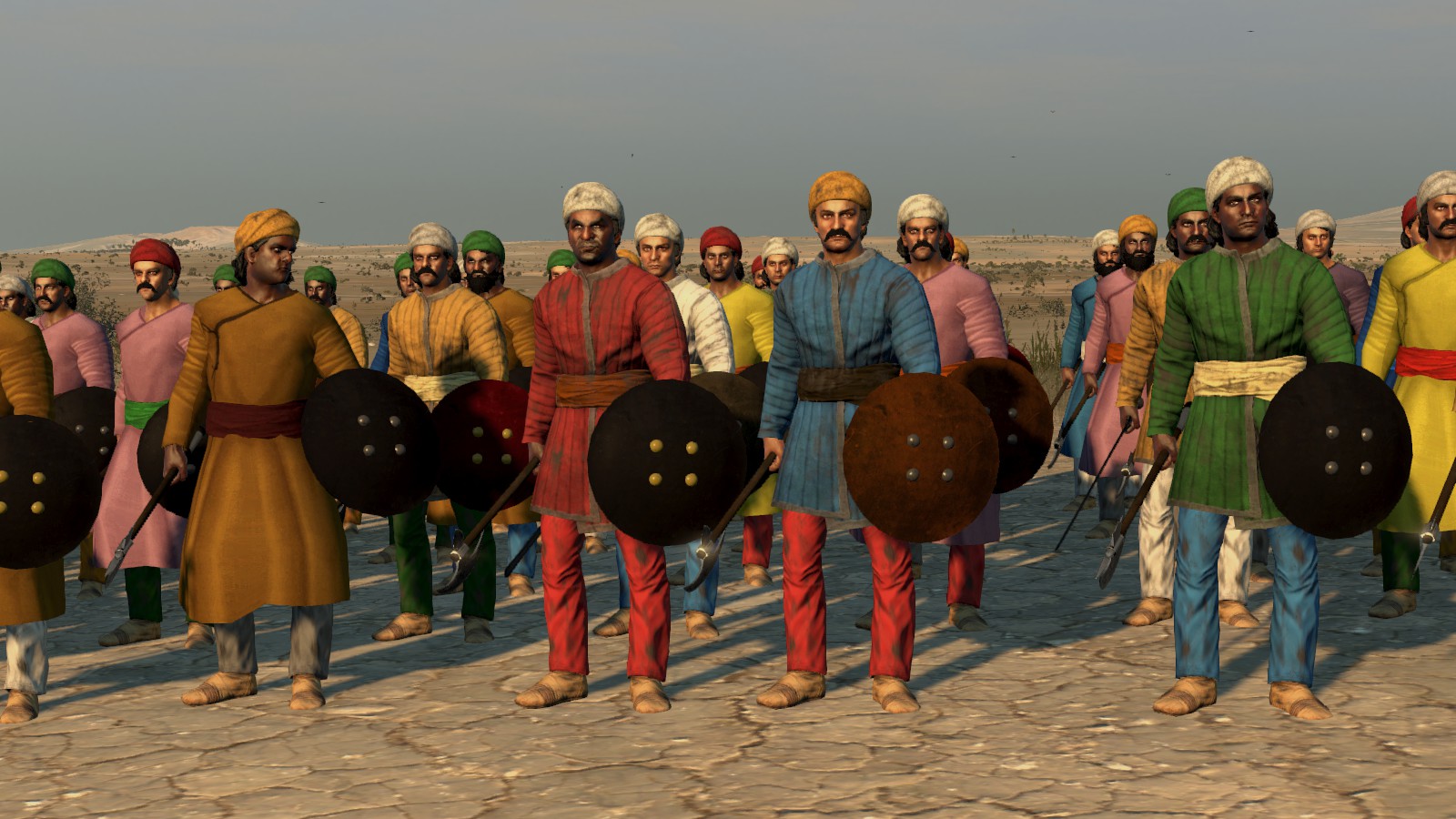
Paik is the generic term for infantry in Muslim India. Largely made up of Indians, their organization and role are a heirloom from the Rajput dynasties of prior centuries. Peasants would be allowed to exploit land from feudal lords in exchange for service, namely military. The local nobles would then raise these semi-professional soldiers for war when called to arms by the Rajput clans, which continued under Muslim rulers who kept the status quo in exchange for loyalty and tax revenue. Paiks would typically not wear armour, save for a shield.
Rajputs (late)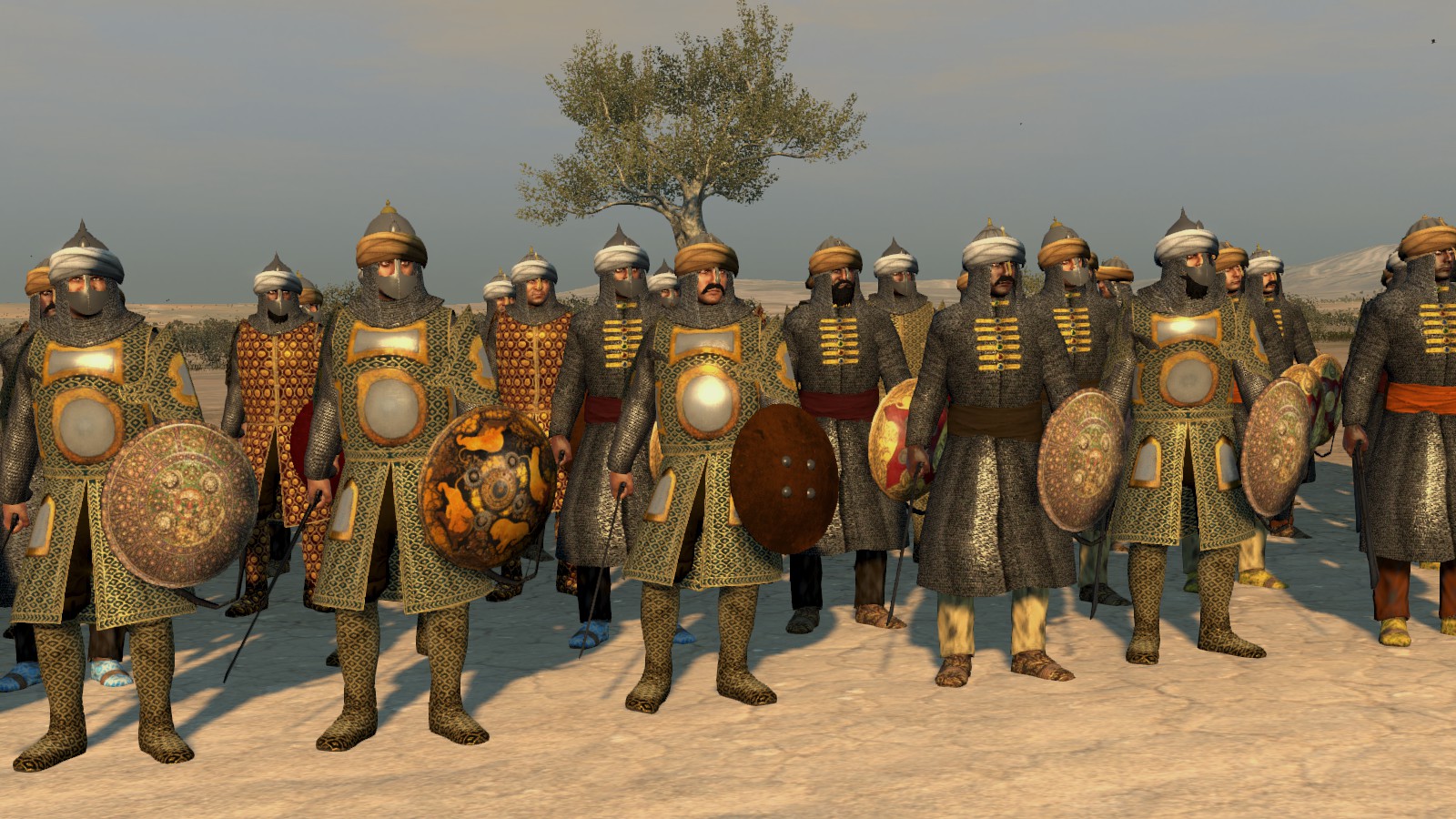
The greatest warriors of India, the Rajputs were the equivalent of European knights, ruling over large amounts of land as some kind of feudal lords. They were well-trained in combat and thought of it as a chivalrous endeavour, and with their heavy armour, could fight any soldier once in melee combat. Numerous Rajput kingdoms fell to Muslim invaders, but they were never completely conquered and successfully kept fended off enemies in the region of Mewar until its conquest by the Mughals under Akhbar. A fair few Rajput clans submitted to the Sultans of Delhi, but it was not uncommon for Rajputs to charge out to certain death rather than sue for peace, a practice called Saka.
Royal Paiks (late)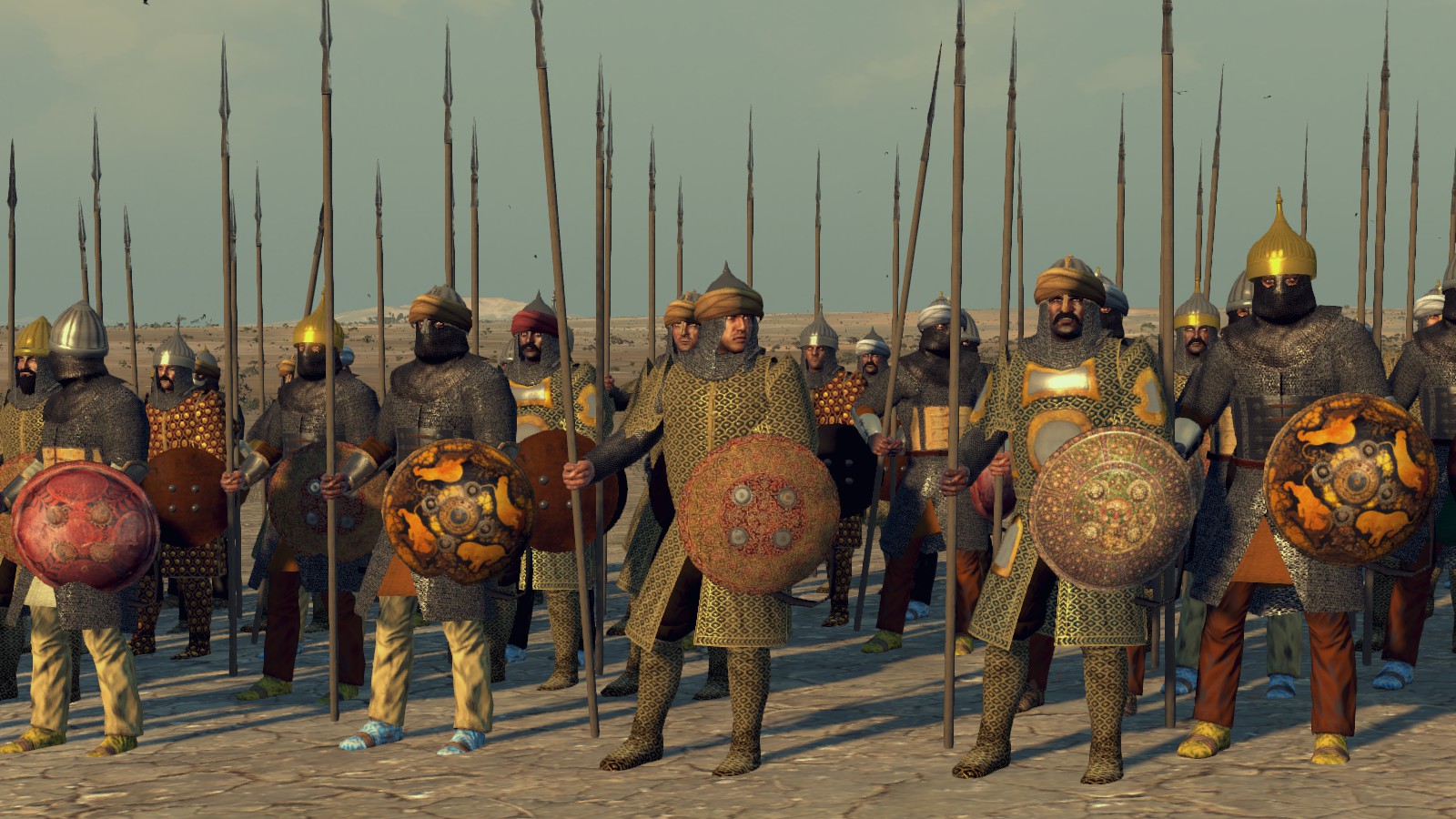
In an effort to prevent a coup or assassination, Ala ad-Din Khilji recruited a personal guard of Hindu soldiers who would have no loyalty to nobles. The prestige of the guard attracted more native nobility into the Delhi court. and their loyalty was proven quickly as they thwarted an assassination attempt during a hunt early in his reign.
Skirmisher Cavalry Units :
Sawar-i Barahna wa-Jarida (late)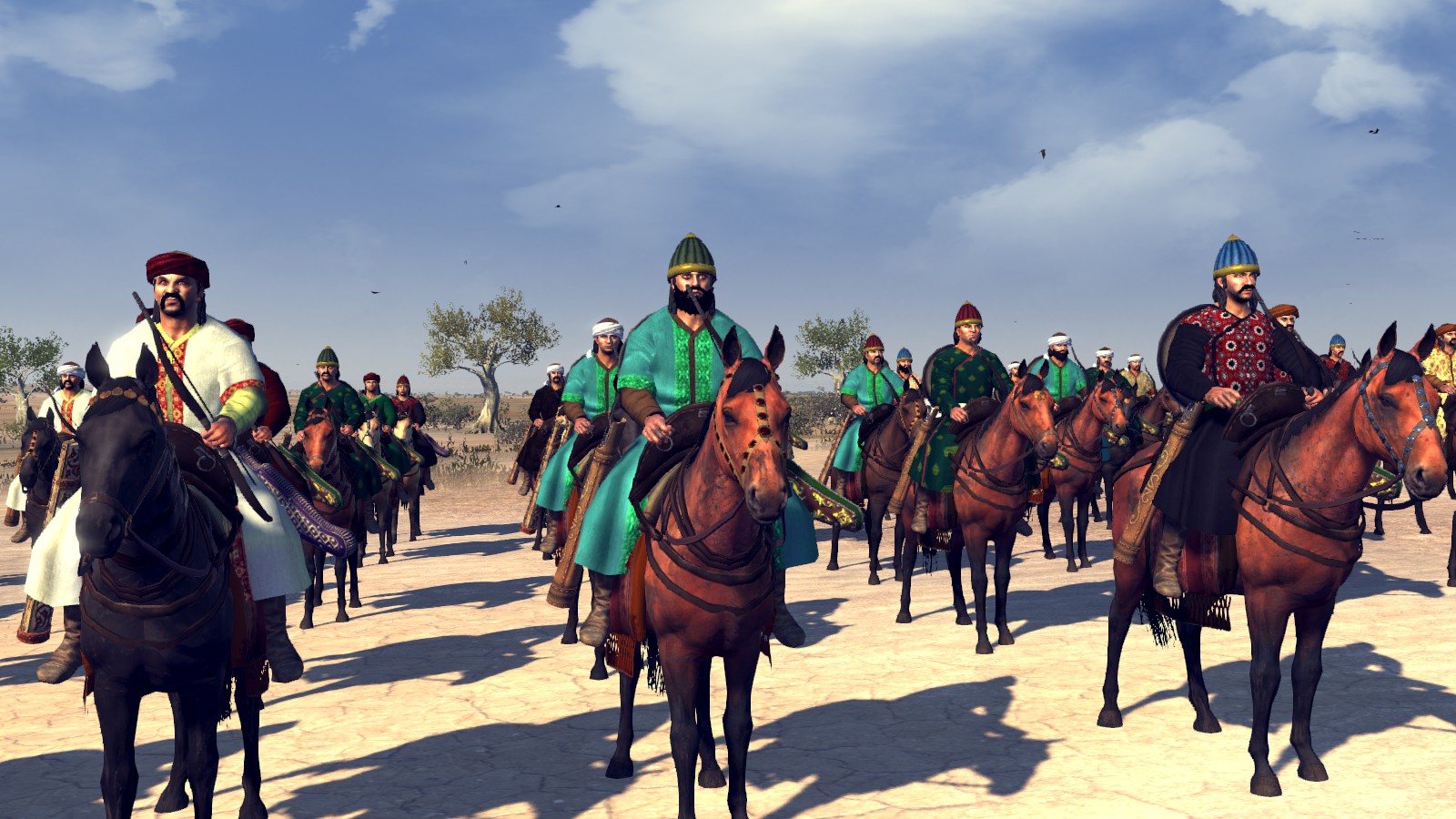
The Sawar-i Barahna wa-Jarida ('naked and battle-ready horsemen') are one of the named units from the Ghurid military. Consisting of picked light horse archers from Turkish tribes in Afghanistan, namely the Khalaj, their role in the crushing victory of the Ghurids in Tara'in is to be noted. Split into 4 groups of up to 10 000 riders, the horse archers of Mu'izz ad-Din peppered the Indians for a full day, completely demoralizing and breaking the cohesion of Privthiraj Chauhan's troops, before they joined the charge of the main body of heavy cavalry in a single charge, routing the much larger Indian force in a single sweep.
Khwud-aspas (late)
Khwud-aspas were irregular cavalrymen that joined the mustered armies of the Sultanate, joining with their own mounts (as the name indicates, literally meaning 'with own horse'). Notable among the Sultanate forces were Mongol and Turkish adventurers looking for wealth in warfare.
Jagirdars (late)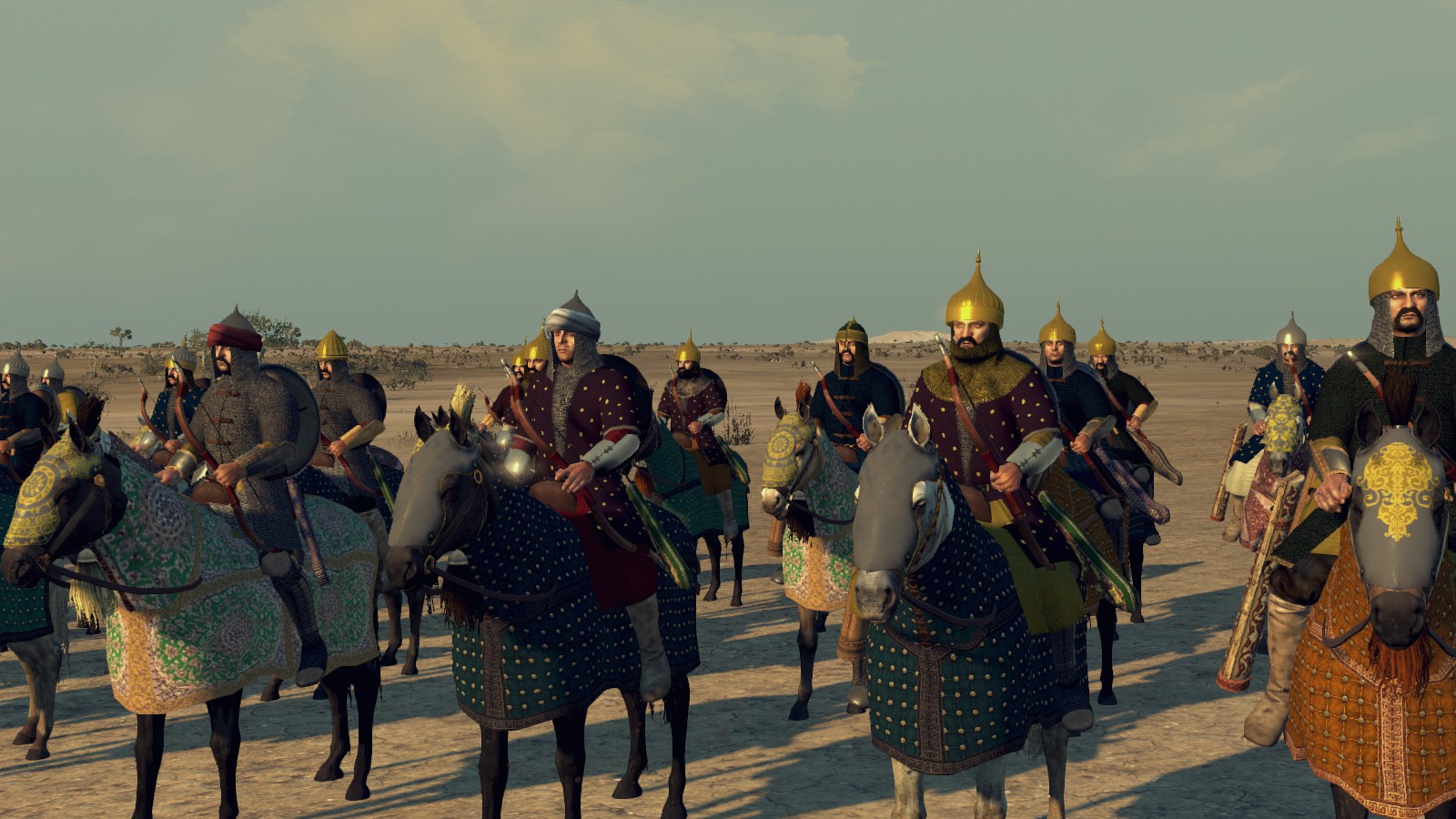
The Jagir is the North Indian implementation of the Iqta system prevalent across the Muslim world. Jagirdars were expected to maintain and supply troops along with joining the Sultanate army. One important change during the 14th century was that the power of the nobility was heavily curbed by the central power in Delhi, namely preventing them from amassing large personal armies.
Khasa Khali (late)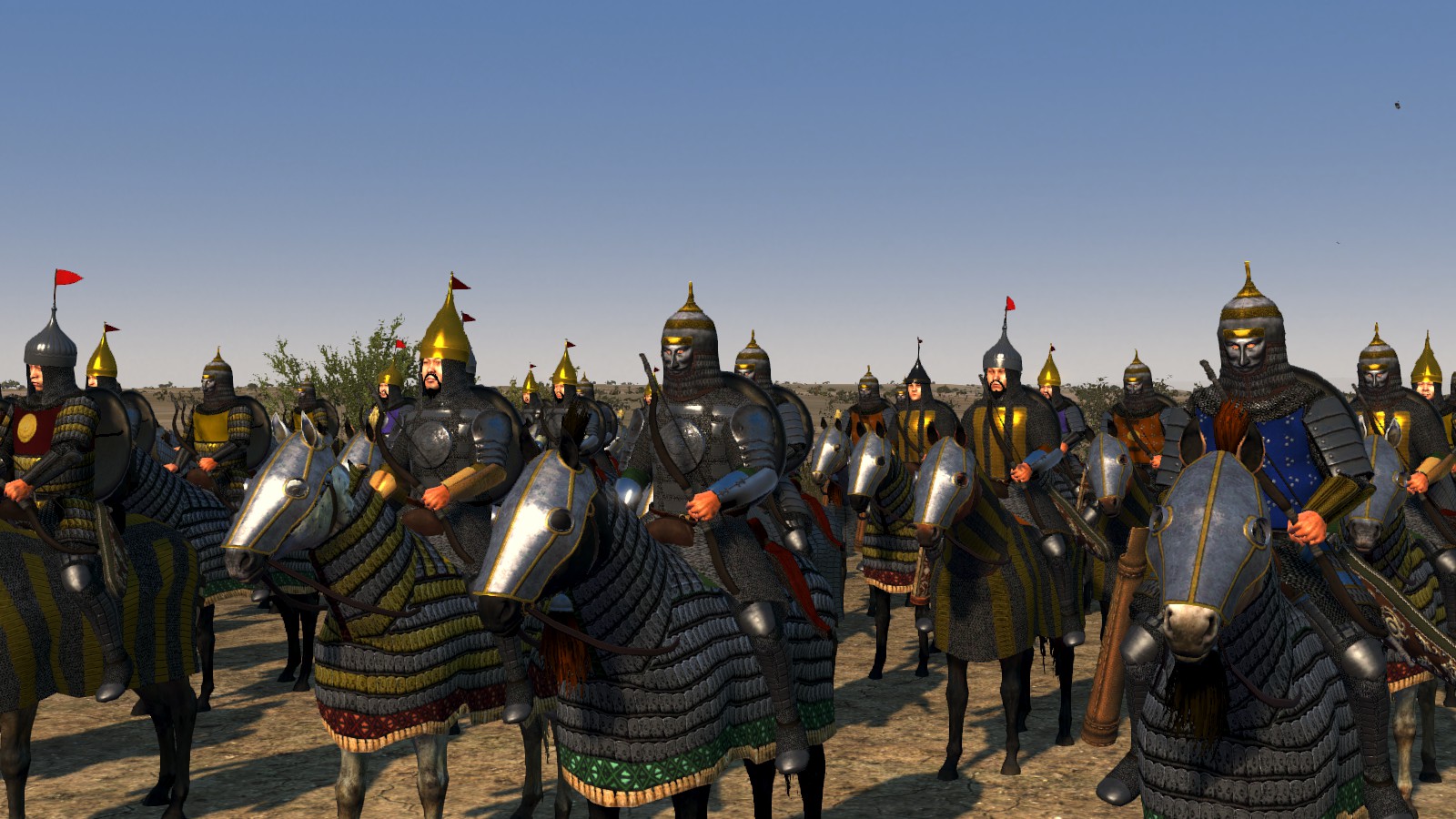
Bahlul Khan Lodi being a great admirer of Mongol bravery and quality as soldiers, he settled many princes and kept a large retinue of Mongol soldiers called the Khasa Khali, on top of recruiting several thousand into the royal army.
Melee/Shock Cavalry Units :
Camel Cavalry (late)
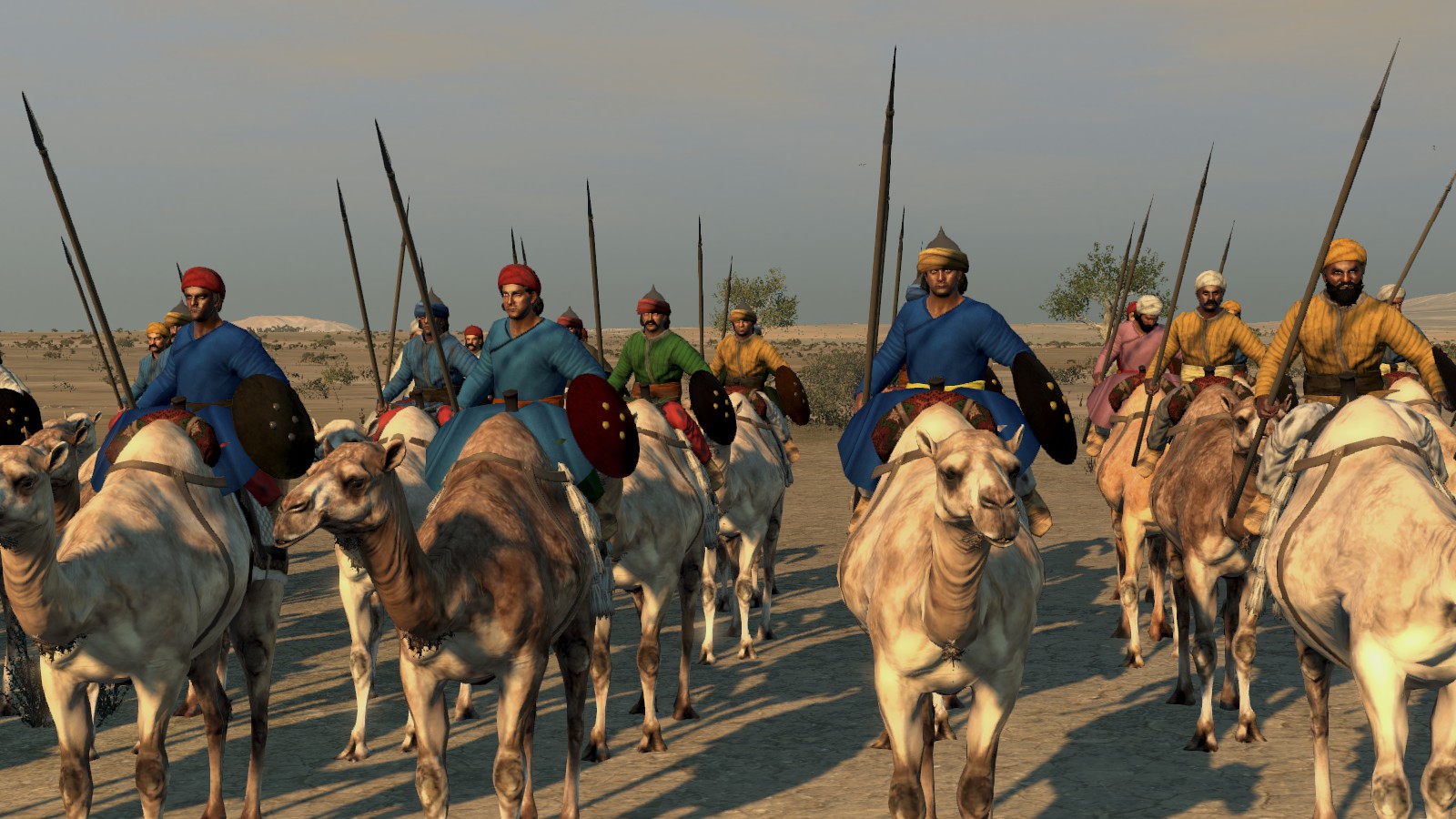
Camels form part of the Indian landscape, most notably in modern-day Rajasthan. Camel-riding soldiers have been part of Indian military history for some time (and is still used to this day) due to their incredible endurance and ability as beasts of burden.
Khalaj Cavalry (late)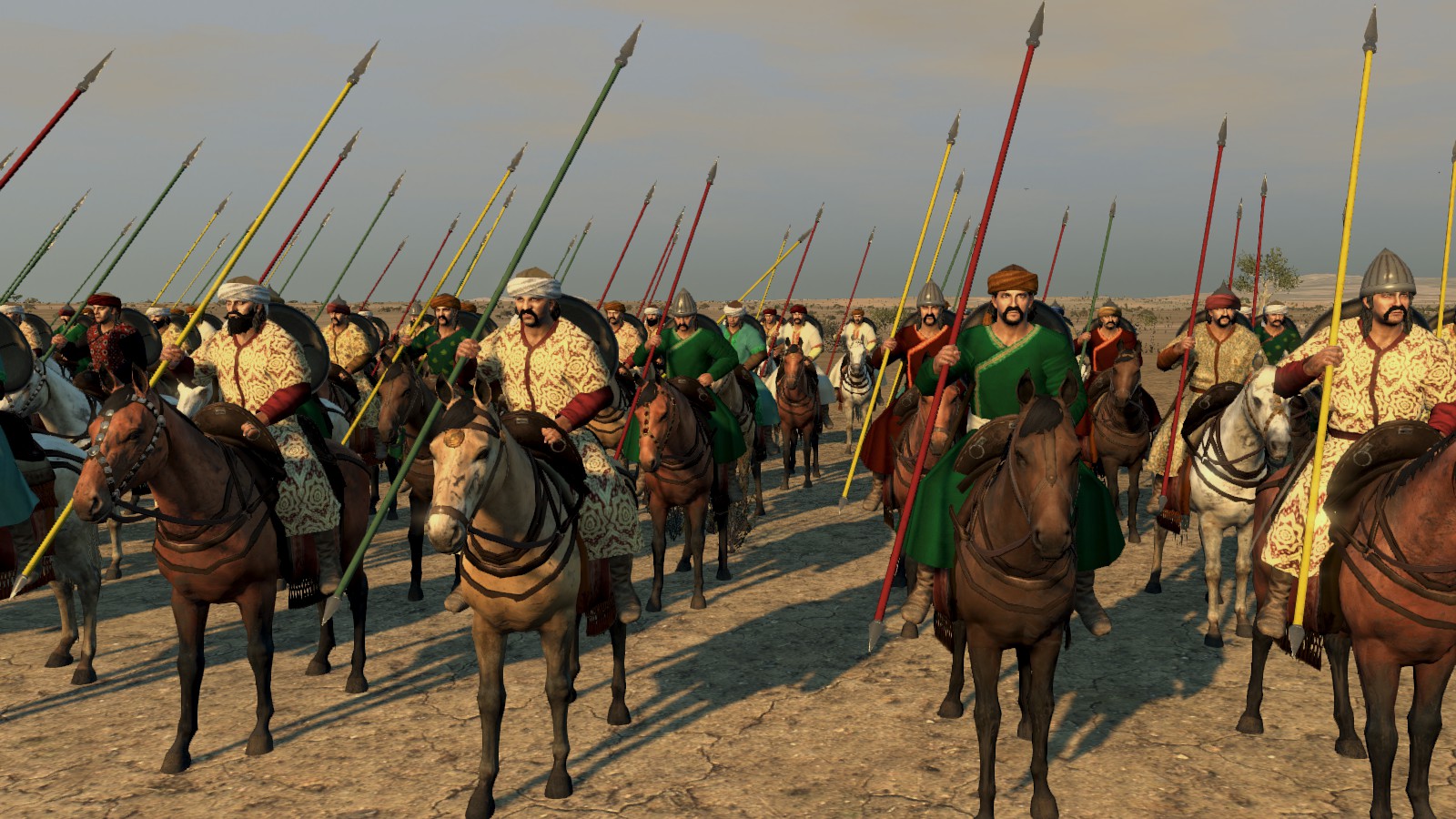
The Khalaj are a tribe of Turks that migrated from Central Asia and absorbed into Afghan tribal society. They still excel at the same things as typical Turkish tribesmen do, such as mounted combat and archery. Khalaj became an important source of manpower for the Ghurids, and later Sultans in Delhi, being reliable soldiers and eager for warfare. According to an account, when Mu'izz ad-Din was badly injured in the Ghurid defeat at Tara'in in 1191, it was a Khalaj who jumped from his mount to keep Mu'izz ad-Din from falling from his.
Ashraf Sawaran (late)
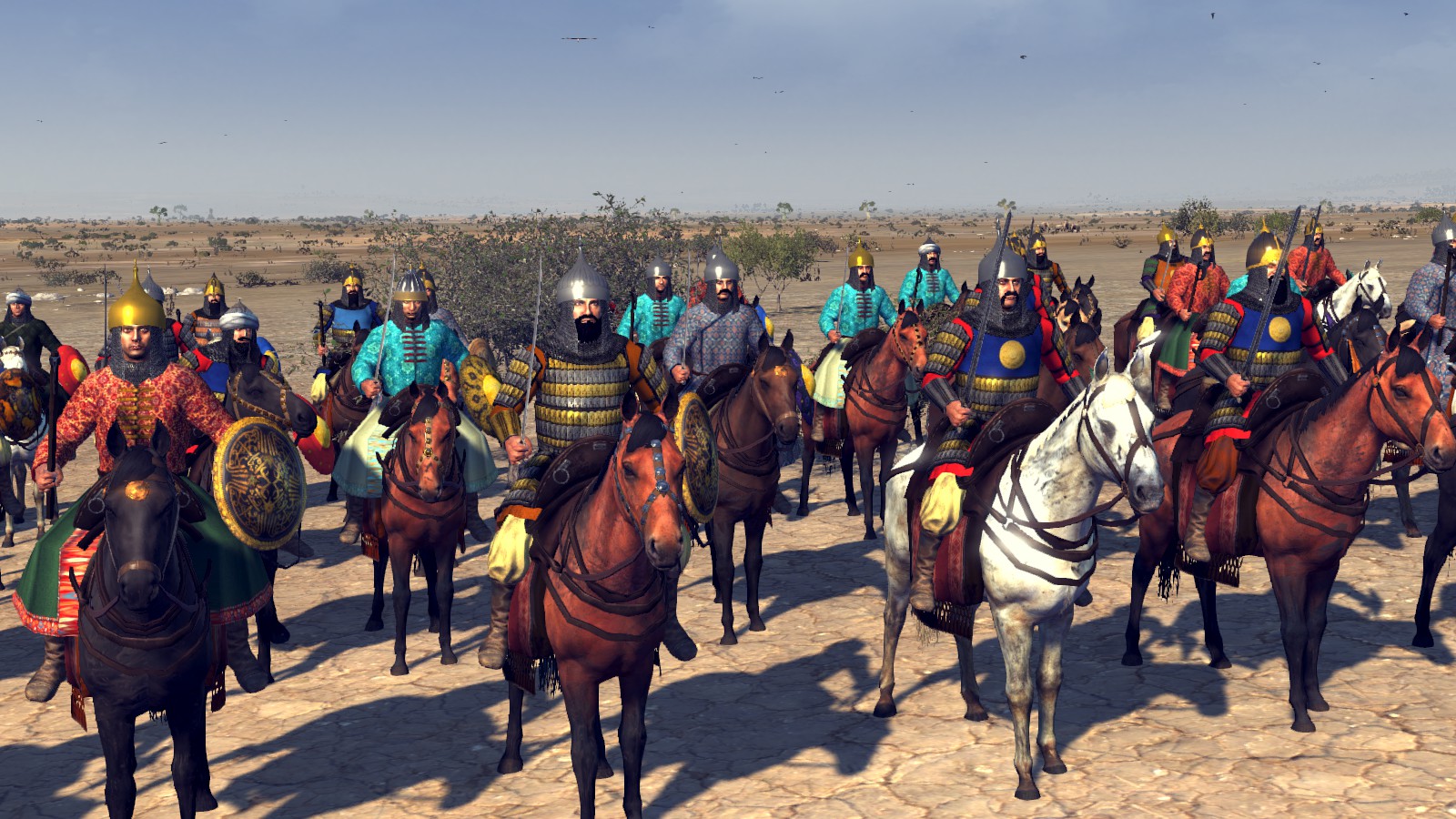
Migration from Muslims into India was heavily favoured by all Sultanates, at which point where a large number of Tajiks, Persians, Arabs, Turks and most importantly Afghans formed the majority of the nobility, the 'ashraf'. Migration of Afghan clans and nobles continued for years after the initial conquest and took a commanding presence amongst the upper caste of society, firmly implanting themselves in rulership, as later dynasties such as the Lodi dynasty and the Sur Empire. The equipment of such individuals largely followed the Persian fashion and was either manufactured in that style or was imported directly from Iran.
Do-aspas (late)
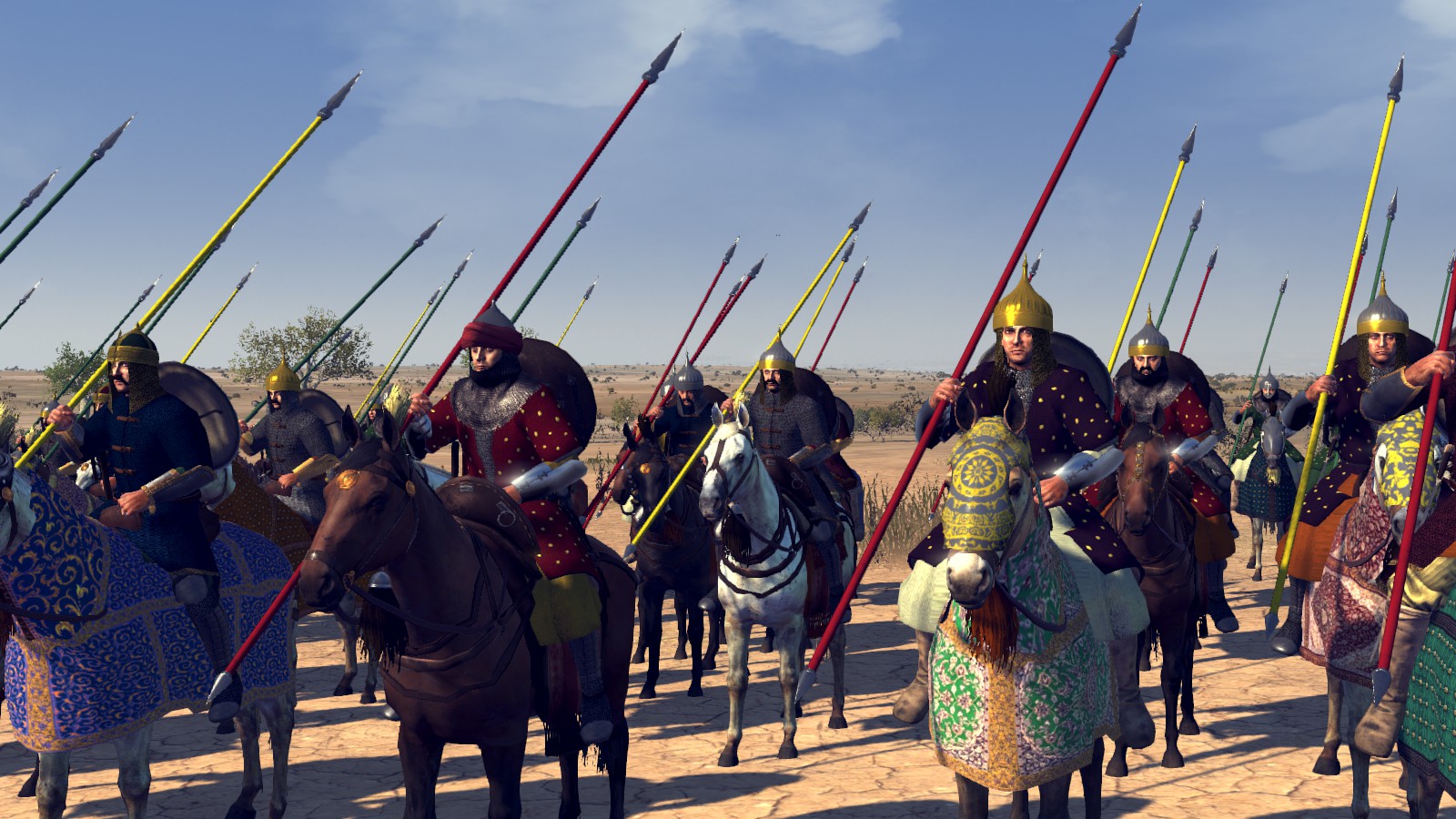
A Do-aspa (two horse) is one of the named ranks of the professional soldiers in the Khilji and Tughluq army. Their pay was significantly lower than the Murattabs, but they were provided one mount from the Ariz-i-Mumalik along with weapons and armour. Barani suggests that their horses were generally not heavily armoured, but he also mentions that, with regards to the Indian success against Mongols, a Do-aspa could 'bring in ten Mongols yoked together'.
Murattabs (late)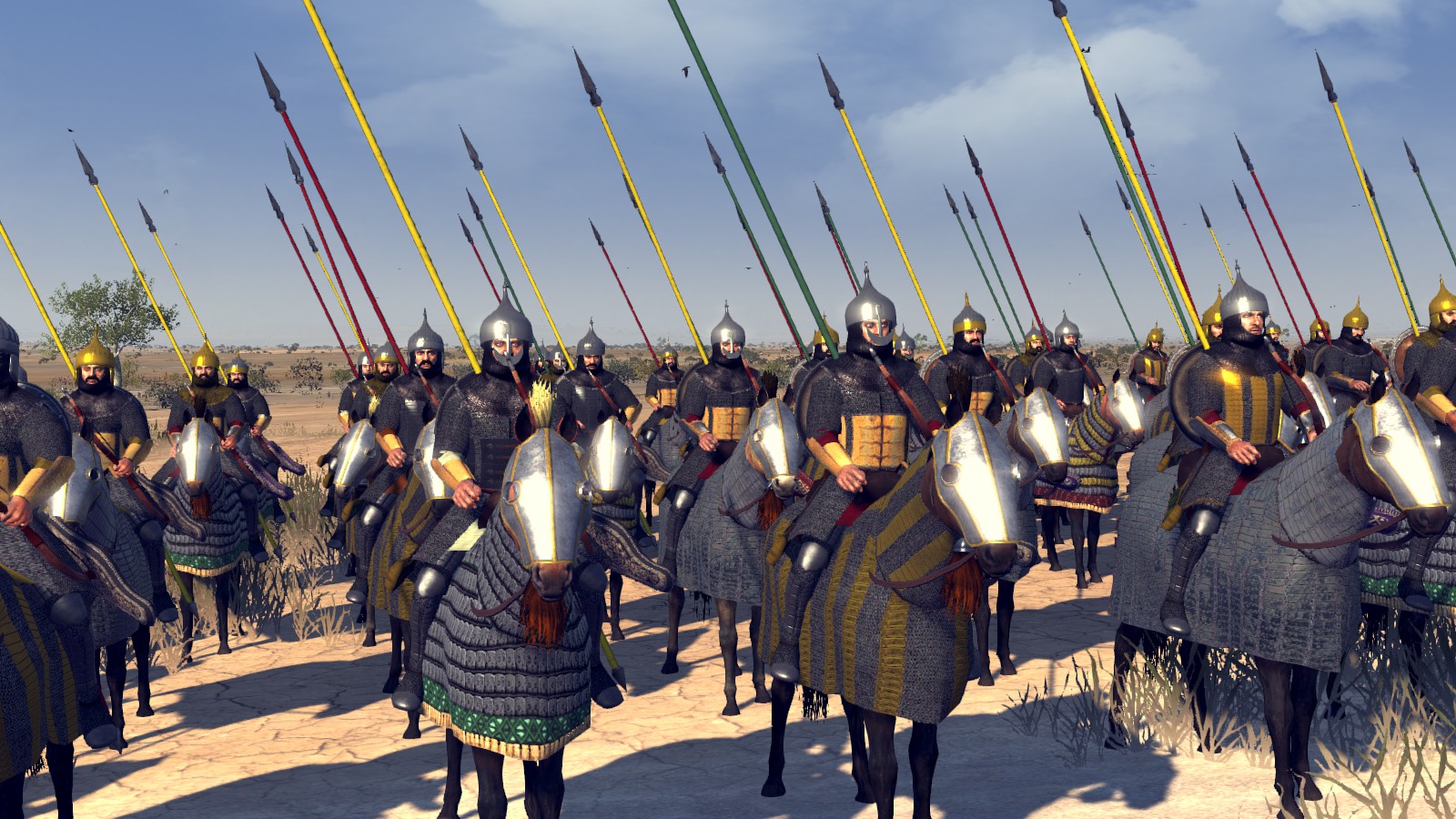
From the account of Barani, it is understood that the Murattab is the top soldier in the Khilji and Tughluq army. They were expected to provide their own mounts due to their large salary, horses Barani mentions being heavily barded. They were supposedly armed enough for 2 men and while the Do-aspa could 'bring in ten Mongols yoked together', a single Murattab 'drove a hundred before him'.
Moghul Sawaran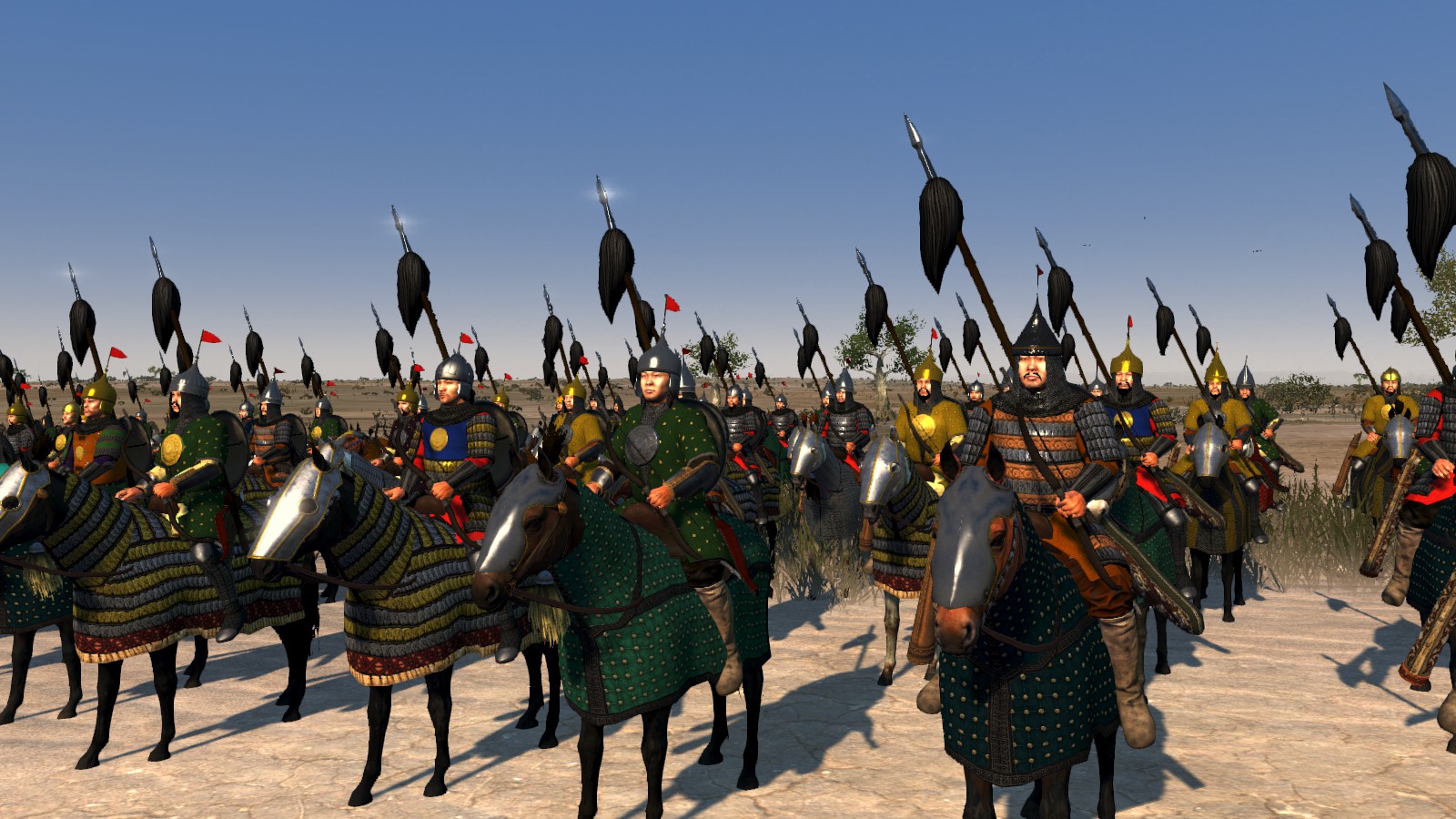
Bahlul Khan Lodi being a great admirer of Mongol bravery and quality as soldiers, he settled many princes and kept a large retinue of Mongol soldiers called the Khasa Khali, on top of recruiting several thousand into the royal army.
Rajput Cavalry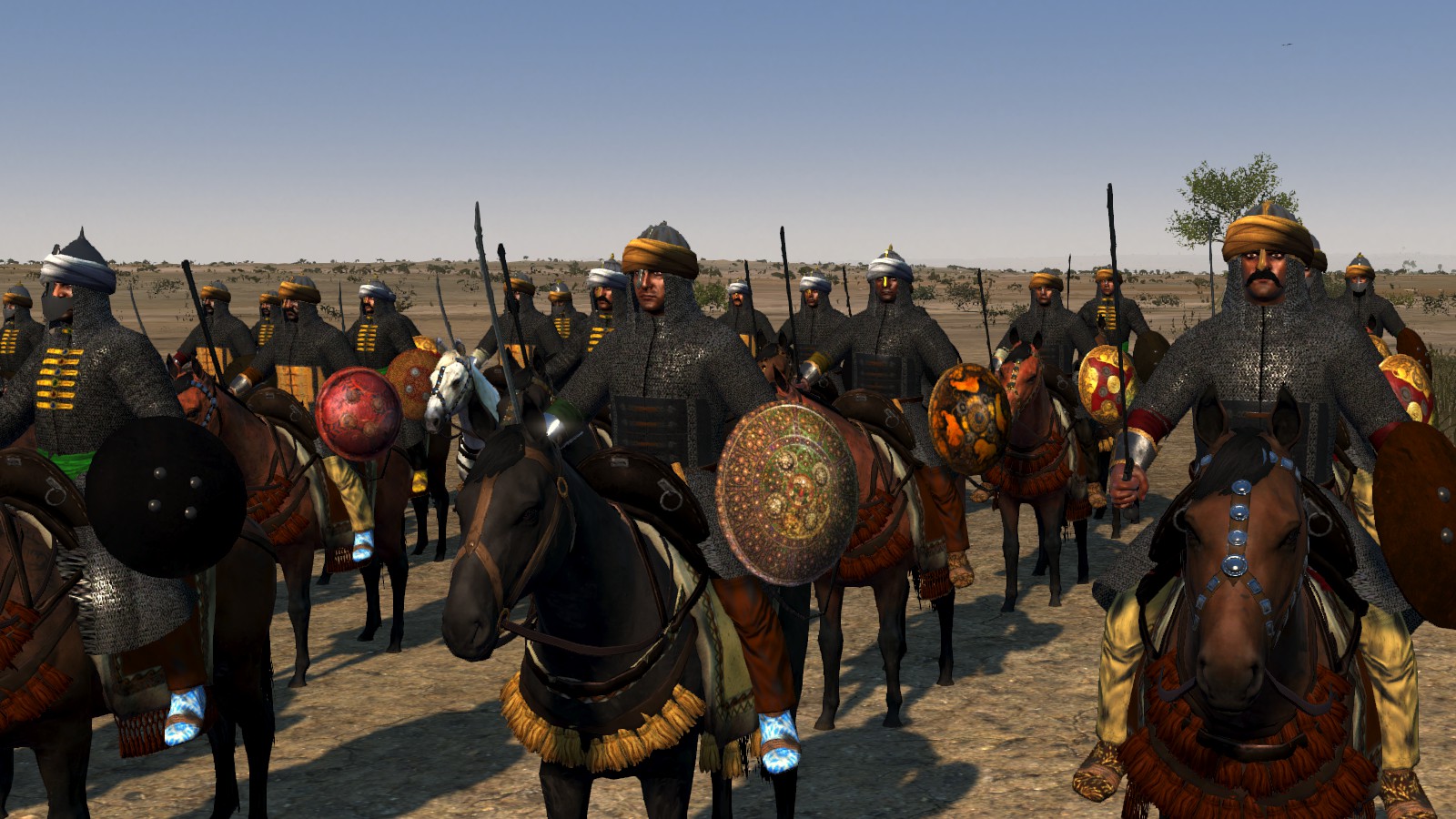
The greatest warriors of India, the Rajputs were the equivalent of European knights, ruling over large amounts of land as some kind of feudal lords. They were well-trained in combat and thought of it as a chivalrous endeavour, and with their heavy armour, could fight any soldier once in melee combat. Numerous Rajput kingdoms fell to Muslim invaders, but they were never completely conquered and successfully kept fended off enemies in the region of Mewar until its conquest by the Mughals under Akhbar. A fair few Rajput clans submitted to the Sultans of Delhi, but it was not uncommon for Rajputs to charge out to certain death rather than sue for peace, a practice called Saka. Traditionally keeping a short number of cavalrymen, the influence of Turks changed Rajput warfare with a larger focus on cavalry, eventually becoming some of the finest in the Mughal imperial army.
Gunpowder units :
Tufangchiyan (late)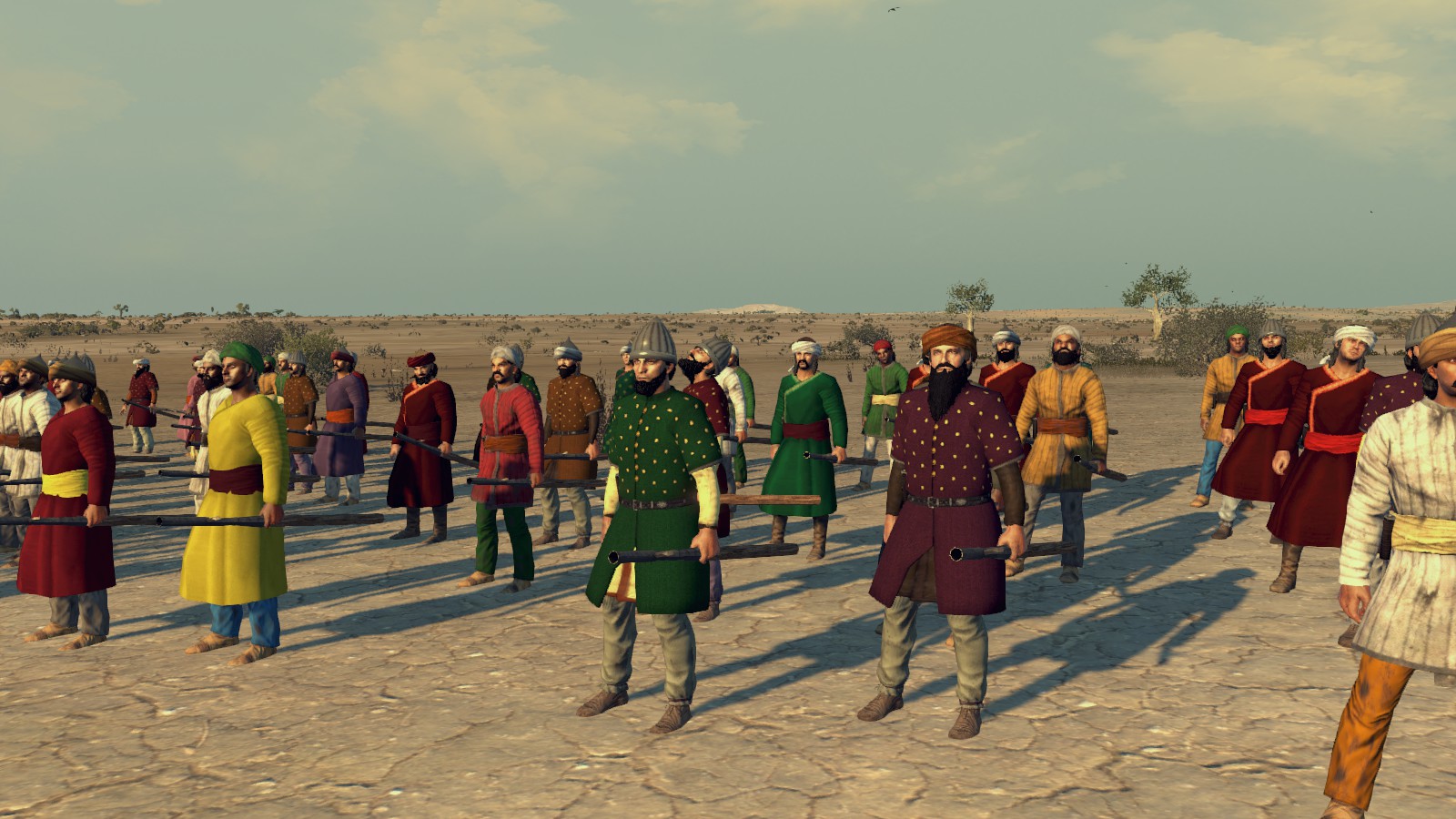
With the spread of gunpowder weapons, handguns were implemented into the Muslim armies of India at a gradual pace. Ala ad-Din Khilji is said to be the first to make use of such weapons in war.
Elephants :
Indian Elephants (late)
The Ghaznavids are best known for their great use of war elephants and the Ghurid successor in Delhi would eventually adopt elephants into their military. A terrifying force on the battlefield, Turks would eventually be able to overcome their power with their light cavalry, but dynasties that establish themselves in India were quick to adopt them into their own armies.
War Elephants (late)
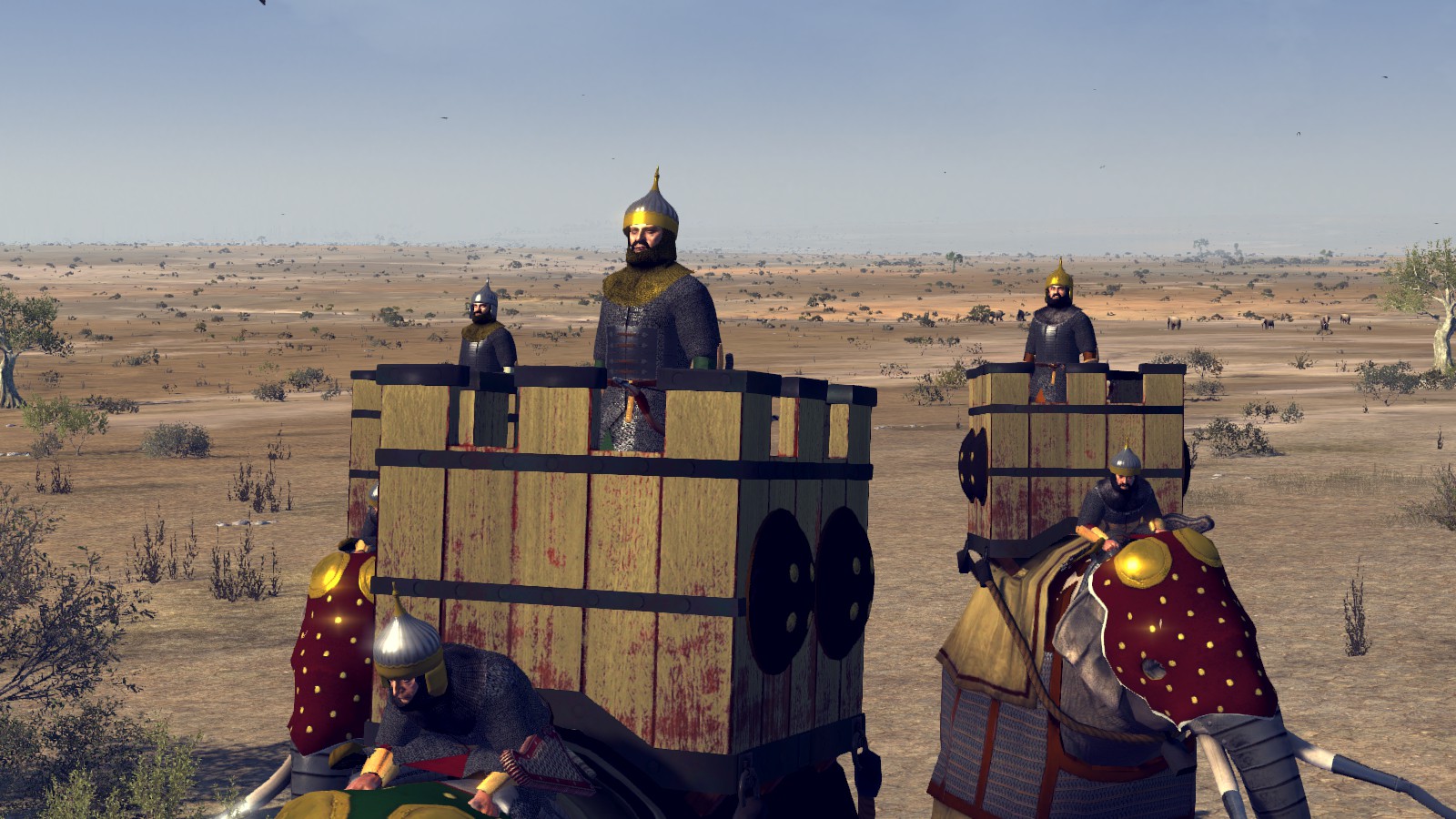
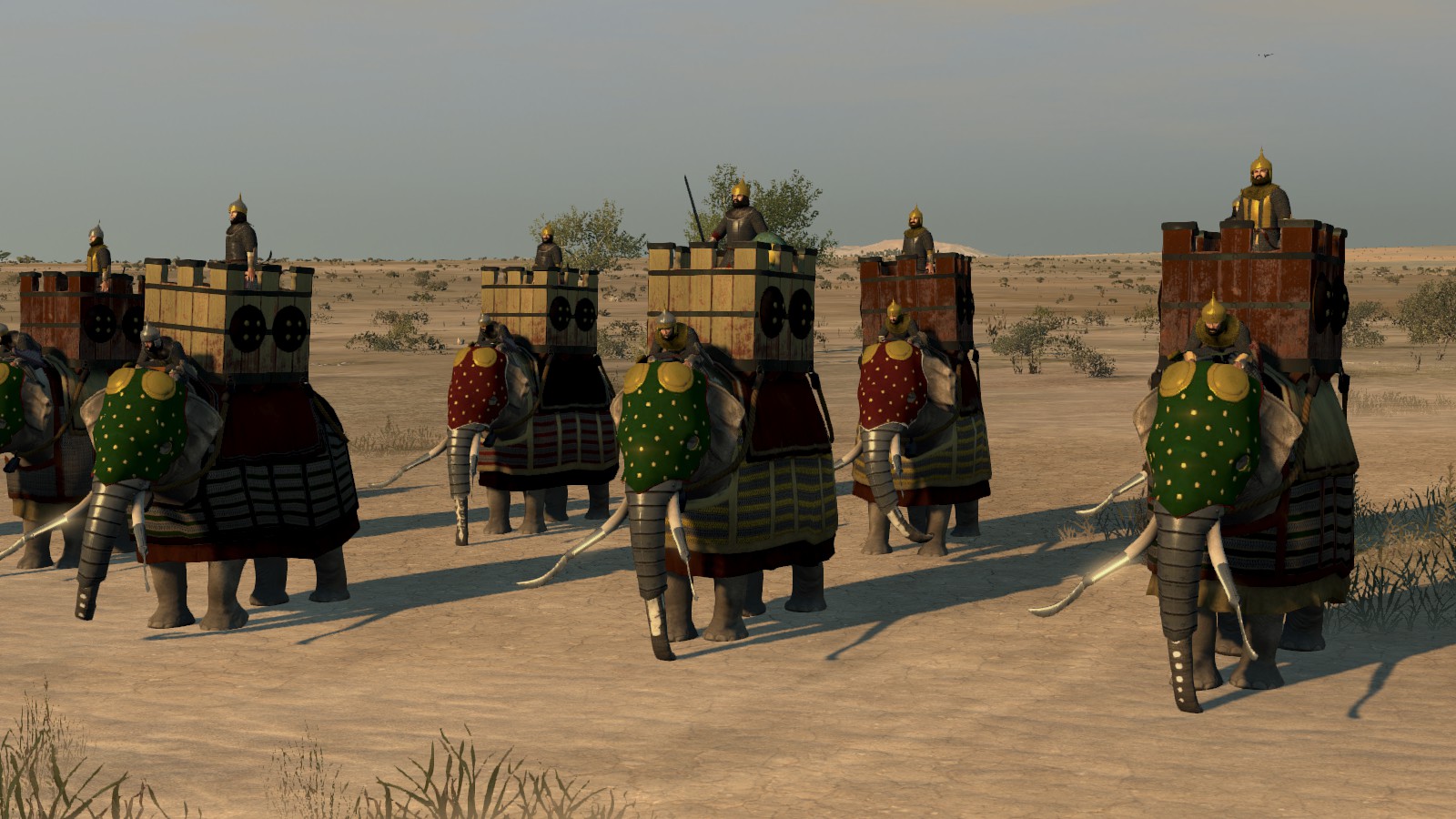
Elephants were one of the staples of Indian militaries and the Muslim dynasties quickly adopted them. With armour, the beasts were said to look like 'mountains of metal'. From the howdahs on the elephant back, different kind of weapons were used, such as bows, crossbows, rockets and grenades.
War Elephants (late) - Naphta
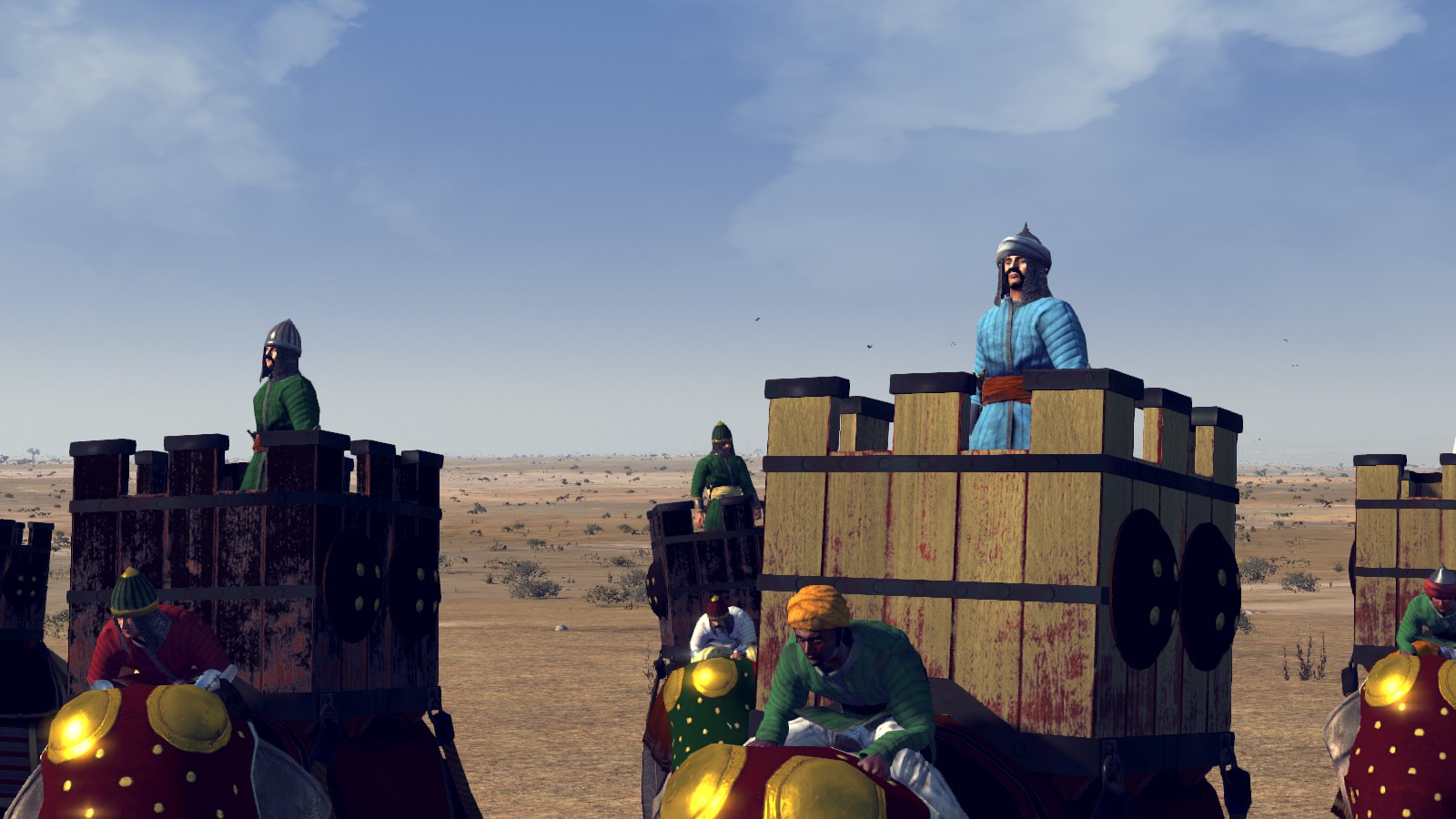
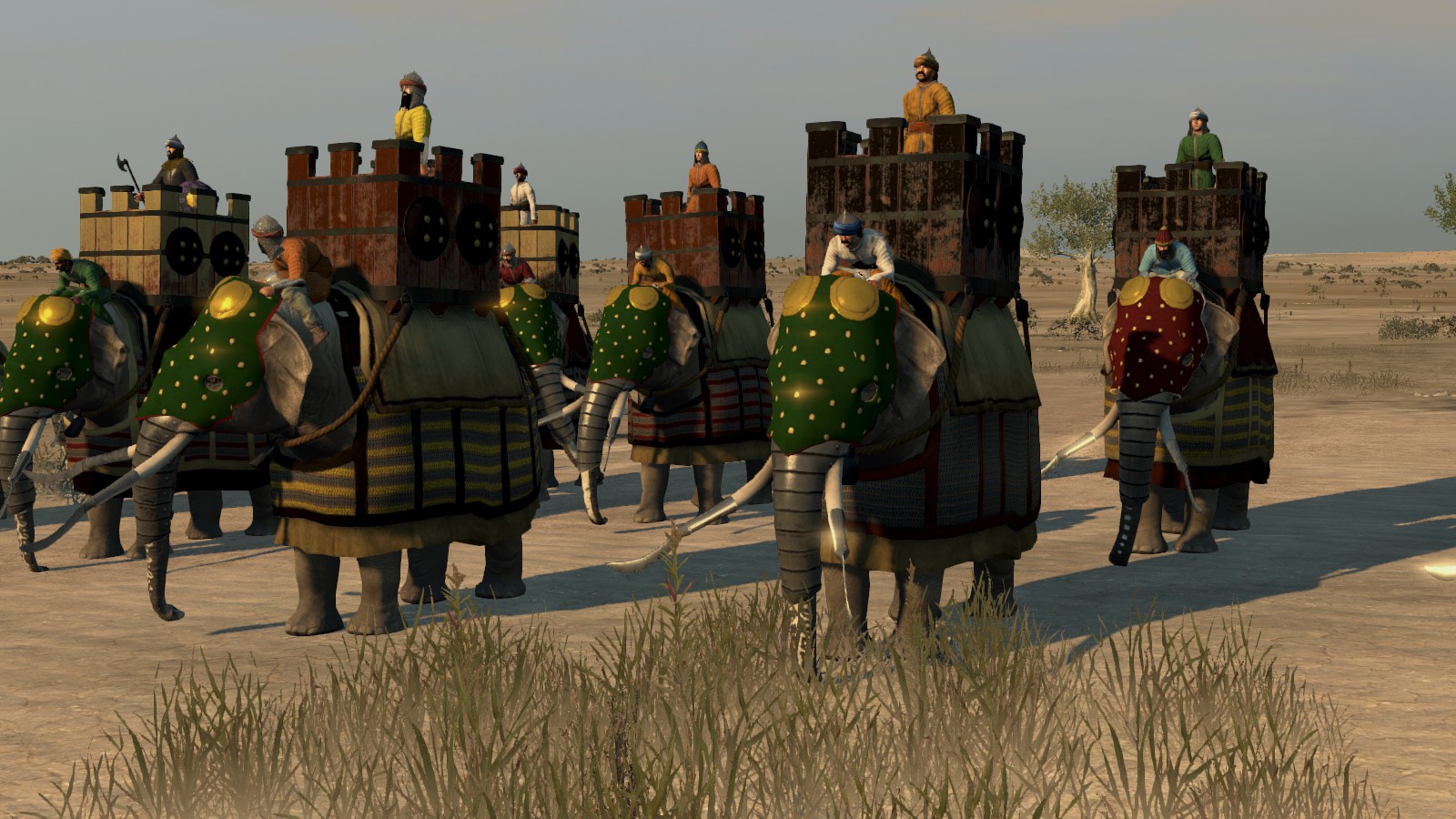
Elephants were one of the staples of Indian militaries and the Muslim dynasties quickly adopted them. With armour, the beasts were said to look like 'mountains of metal'. From the howdahs on the elephant back, different kind of weapons were used, such as bows, crossbows, rockets and grenades.
War Elephants (late) - Matchlock
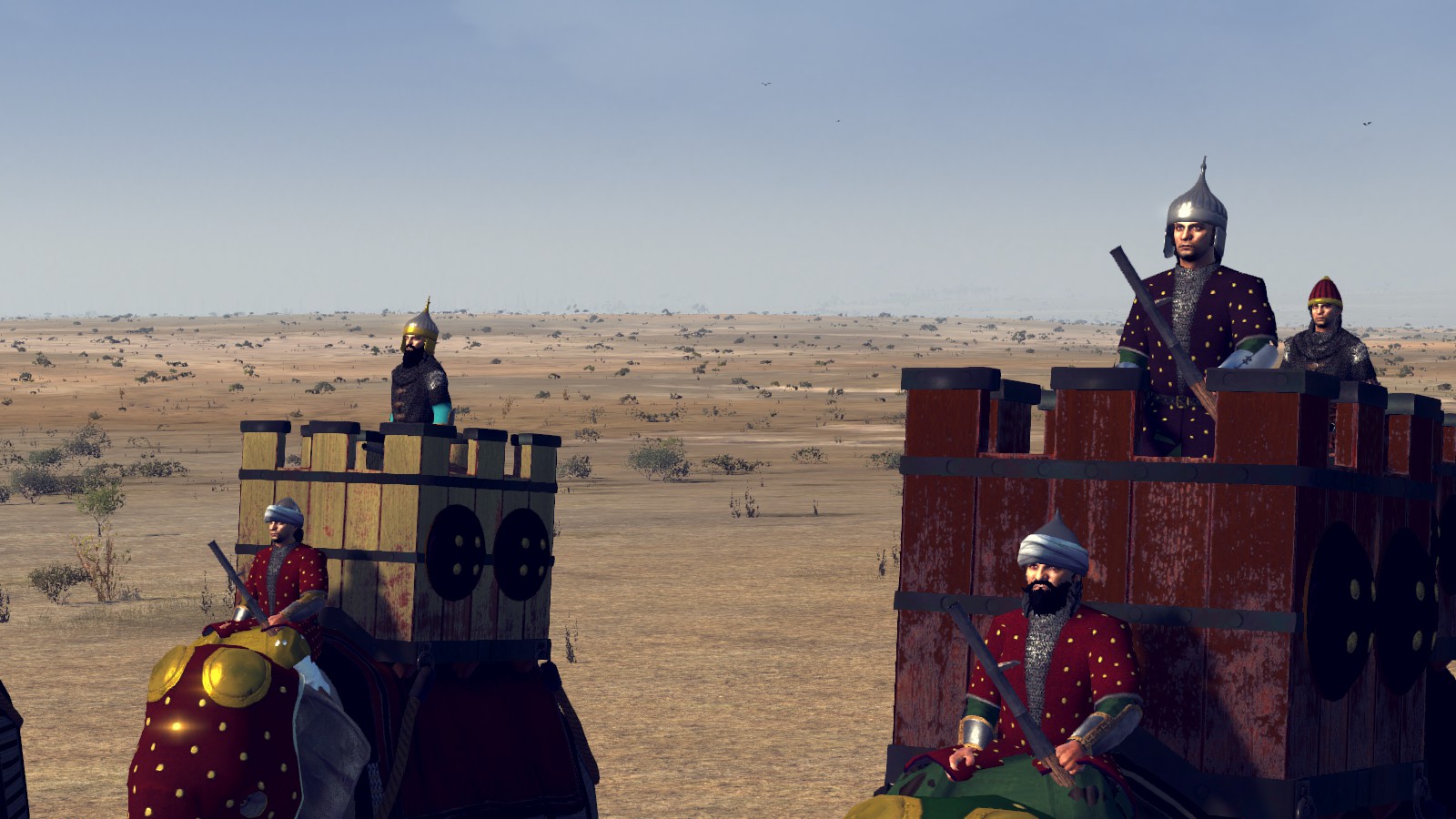
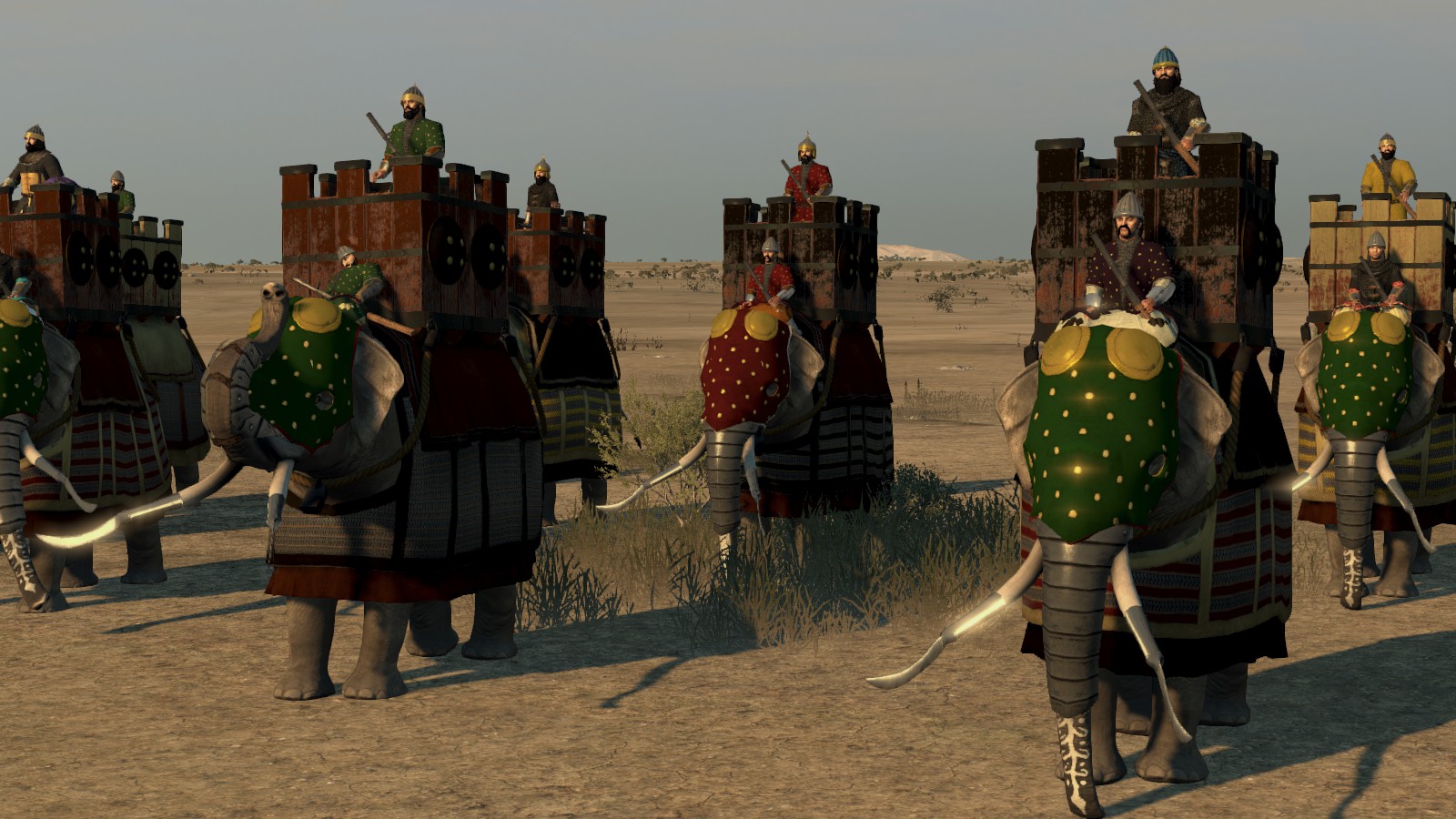
Elephants were one of the staples of Indian militaries and the Muslim dynasties quickly adopted them. With armour, the beasts were said to look like 'mountains of metal'. From the howdahs on the elephant back, different kind of weapons were used, such as bows, crossbows, rockets and grenades.
A HUGE THANKS TO LTD., SLYTACULAR, DONTFEARME22 AND HESSAM (ALONG WITH ANYONE ELSE WHO MAY HAVE CONTRIBUTED AN ITEM TO THIS ROSTER THAT I AM NOT AWARE OF) FOR THEIR MODELS.



They look badass
Once again, fantastic work. But....
>Elephants were one of the staples of Indian militaries and the Muslim dynasties quickly adopted them.
This simply isn't true. The advantage the Ghurids and later Muslim dynasties had over their Indian counterparts, was a monopoly on horses, which using feign tactics of horse archers, was able to decimate elephant armies. In fact after the Ghurids, followed a long decline of the usage of elephants in ALL Indian armies. I'm not saying that elephants were never used again, but to make them a staple part of the Ghurids, or later Delhi Sultans, would be wrong. Horses are simply better than elephants (except in lugging artillery pieces), in terms of breeding them for war and the mobility they offer on the battlefield.
Source: New Cambridge History of Islam: Eastern Islamic World
Horses are better at lugging artillery too, mainly due to the fact of ease of training and power to fuel ratio, as an engine a horse is far more efficient than an elephant, when you consider a lone elephant over a lone horse its not much of a contest but 4 horses cost less than 1 elephant and can do more work. :)
Perhaps the word "staple" is not the most correct word Zsimmortal should've used. It seems what he meant is that Elephants are an expected part of all Indian militaries, even if it doesn't mean Elephants were utilized in large numbers compared to other animals.
You can tell Zsimmortal directly on Twcenter.net(REVAMP)
Absolutely not true. Pretty much all northern Dynasties of India, including the Dehli Sultanate made ample use of war elephants. They did introduce heavy cavalry use to india but the major use of Elephants in open field battles did not go away until the the advent of the Mughal Empire
Hmmm, Muhammad-Worshipers with a side of Elephants. We'll be eating good tonight. - A Random Crusader.
#DeusVult!
But we don't worship the prophet!. - A Timurid knocking your door with an elephant.
#GodWillsIt!
pretty colors
This comment is currently awaiting admin approval, join now to view.
This comment is currently awaiting admin approval, join now to view.